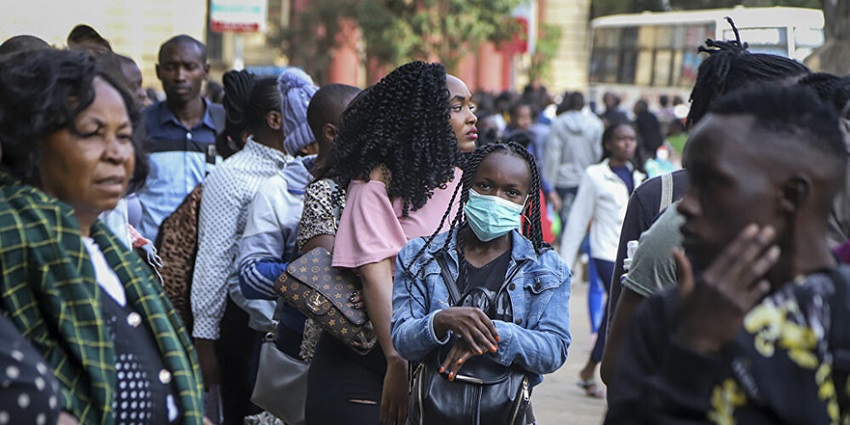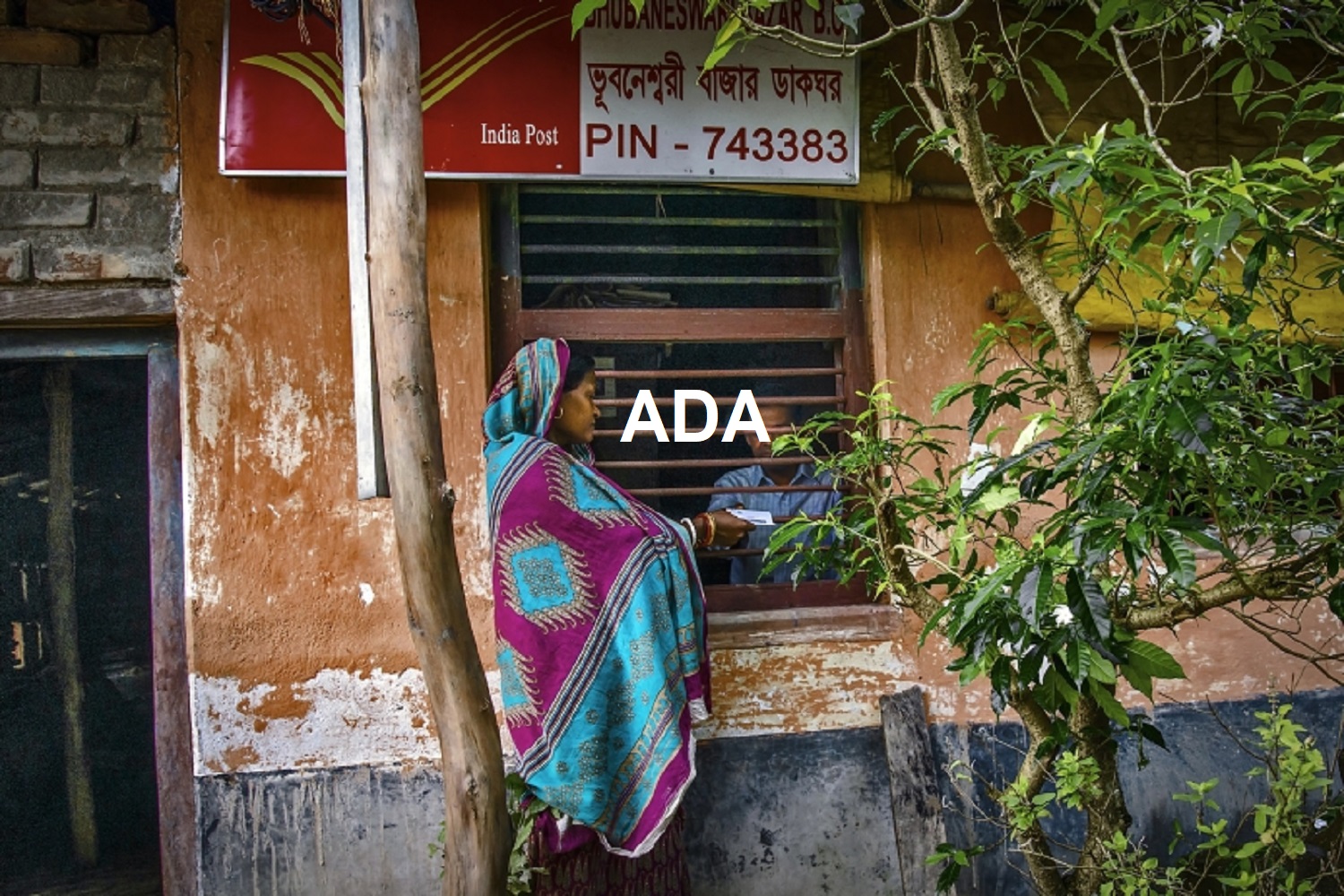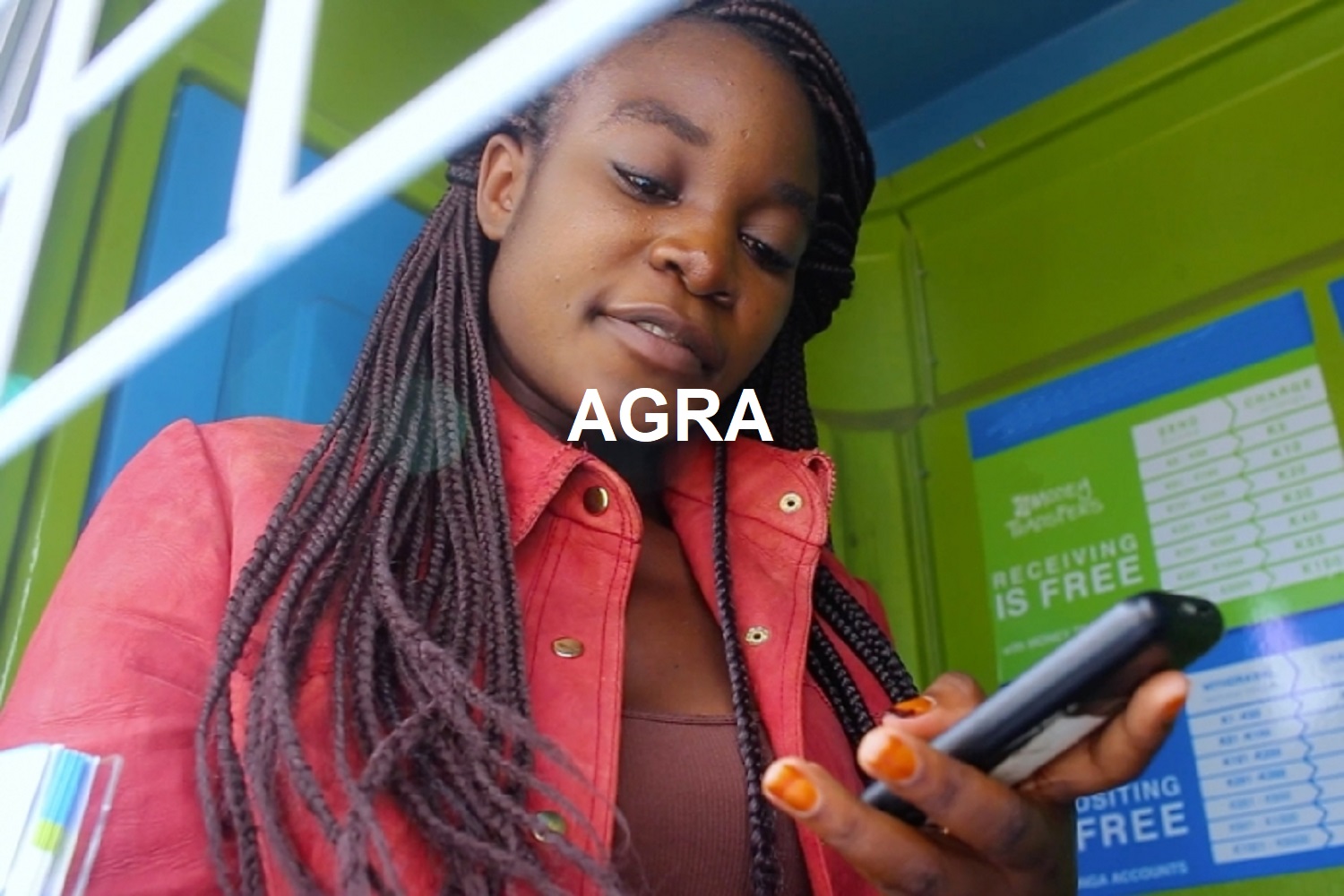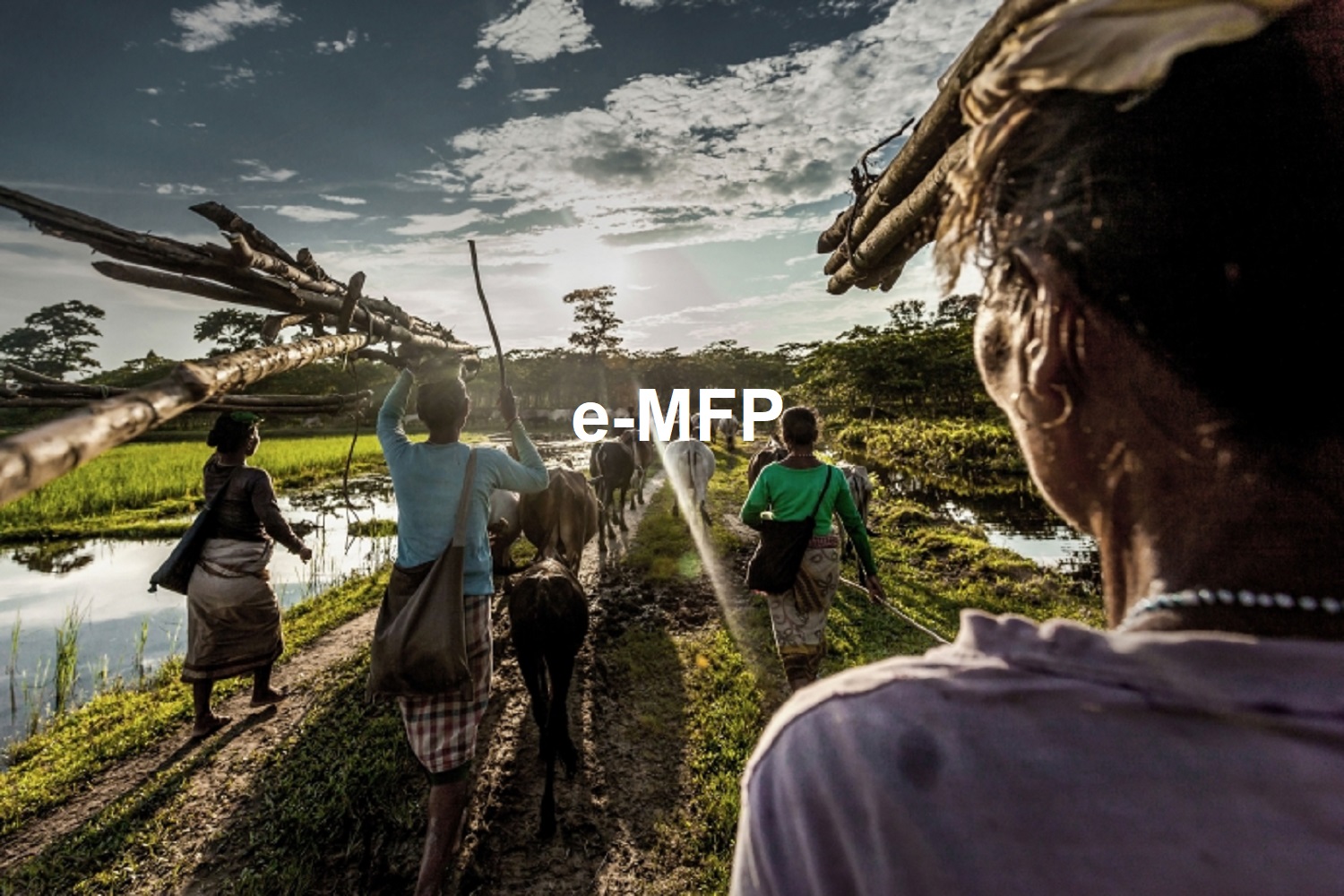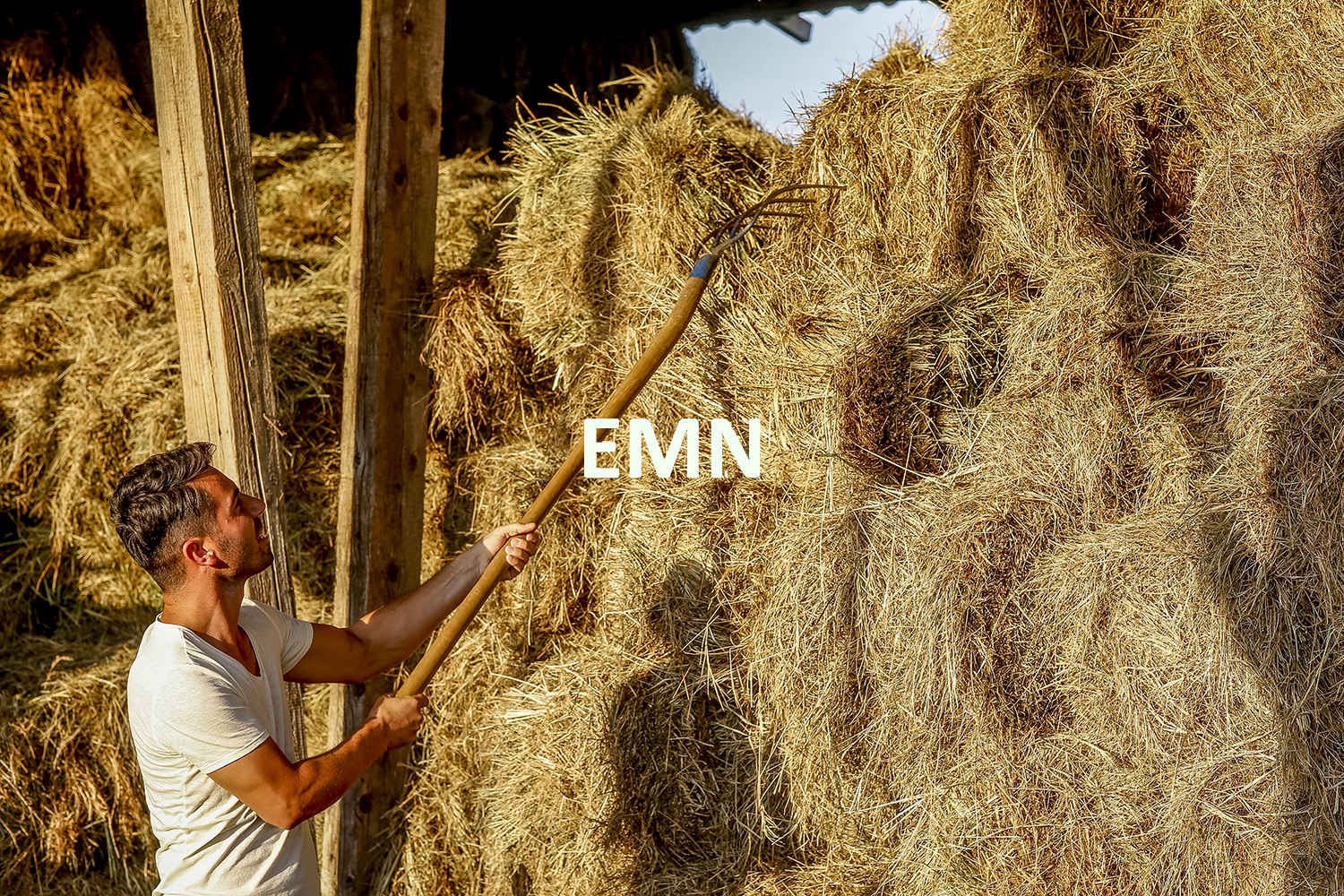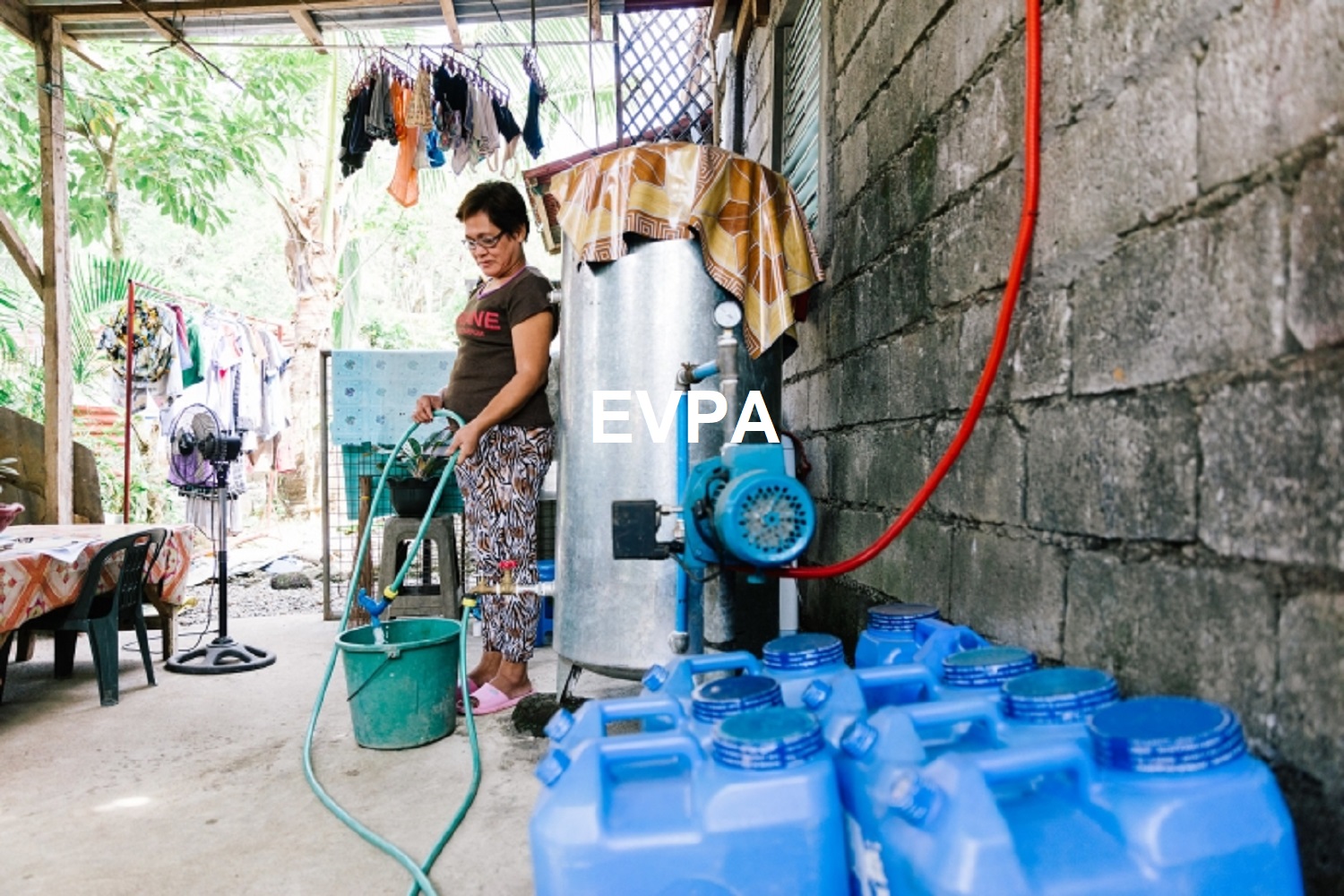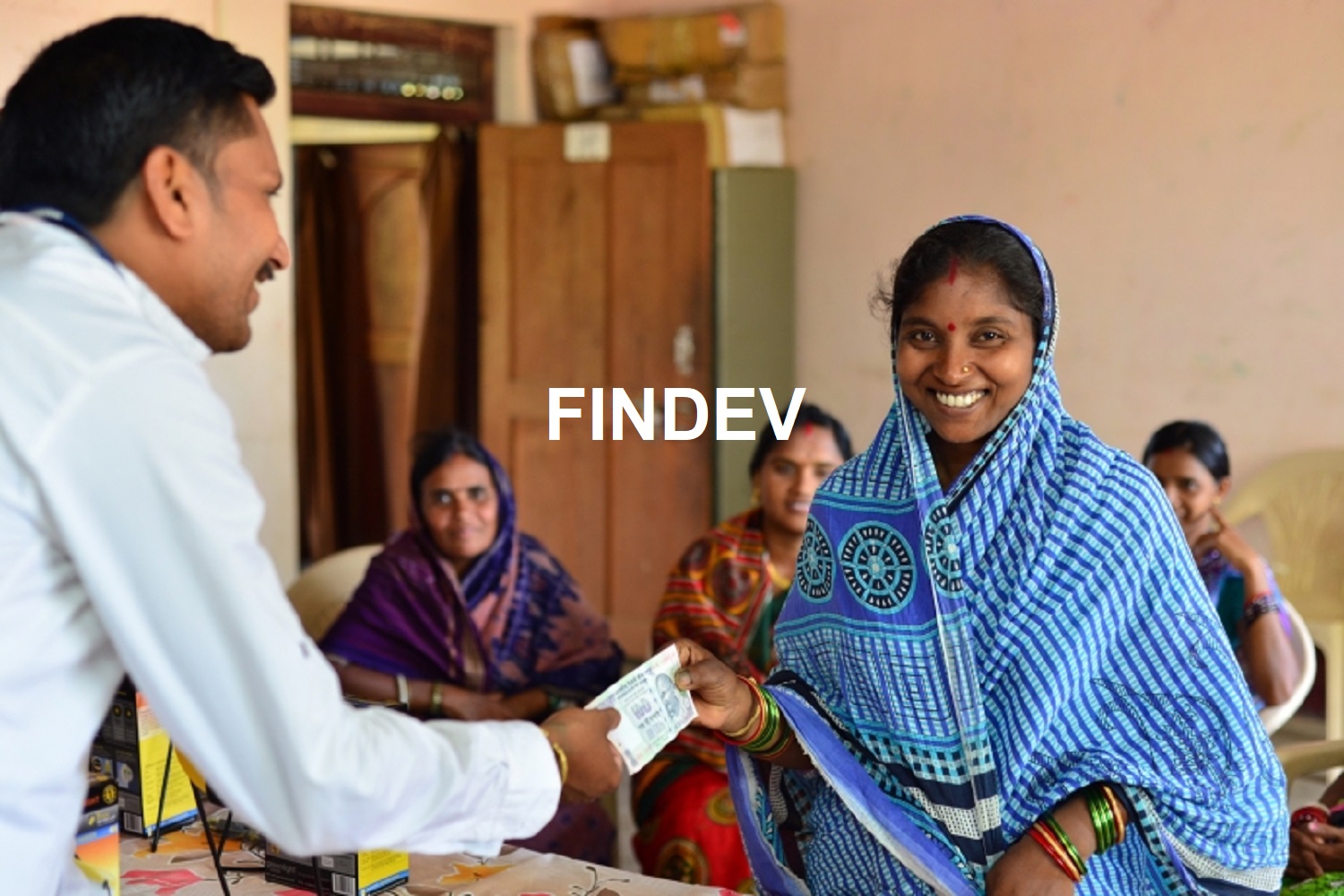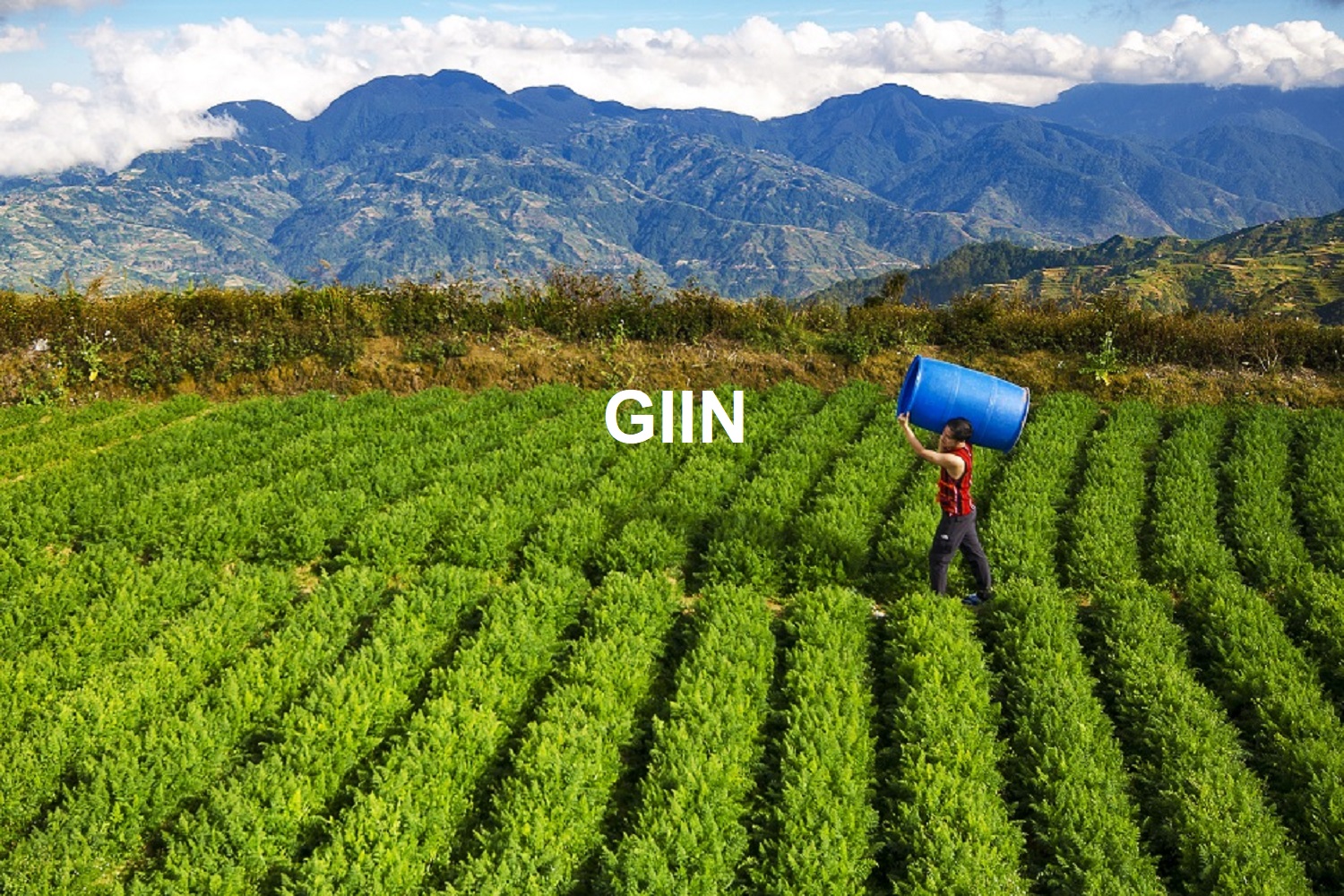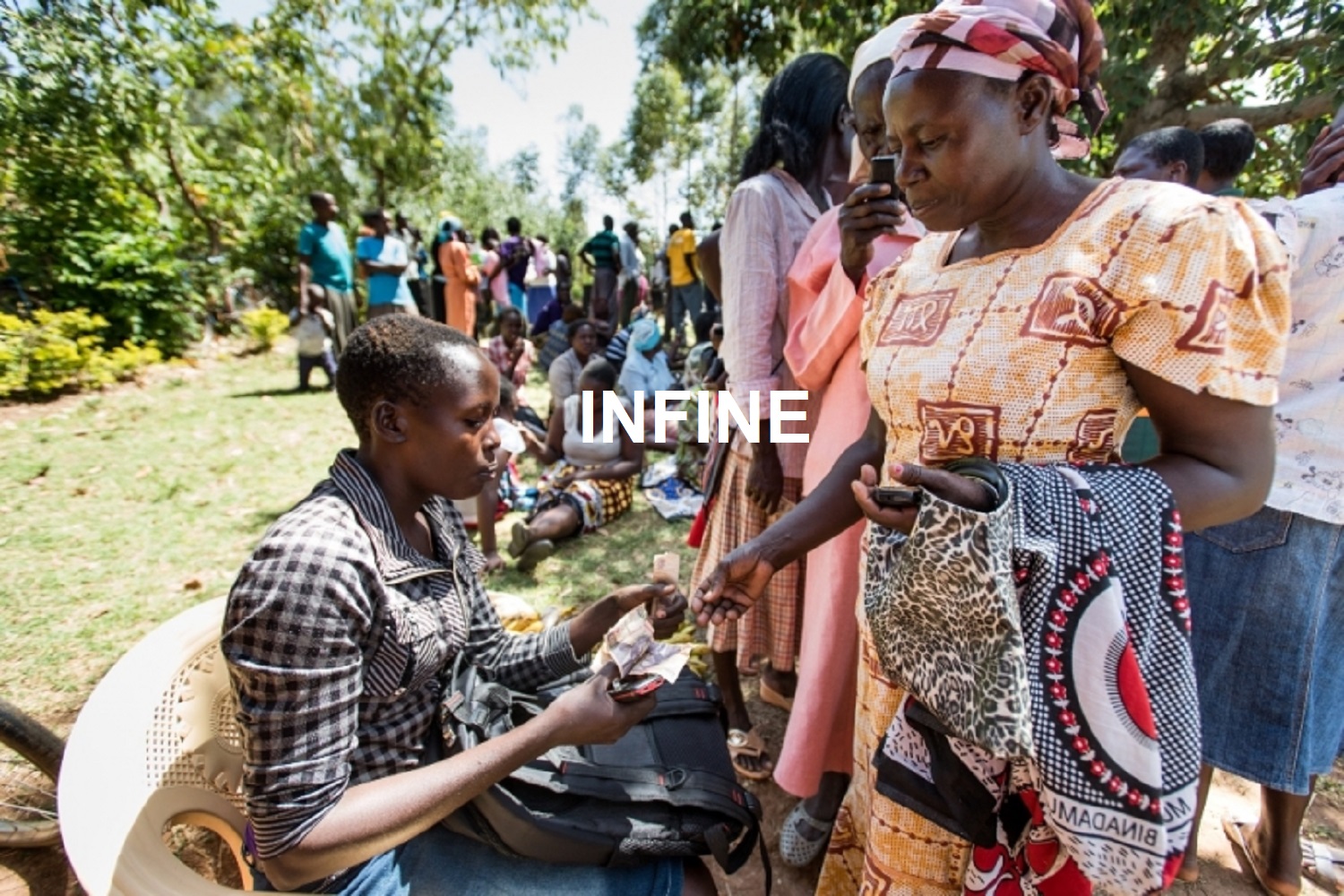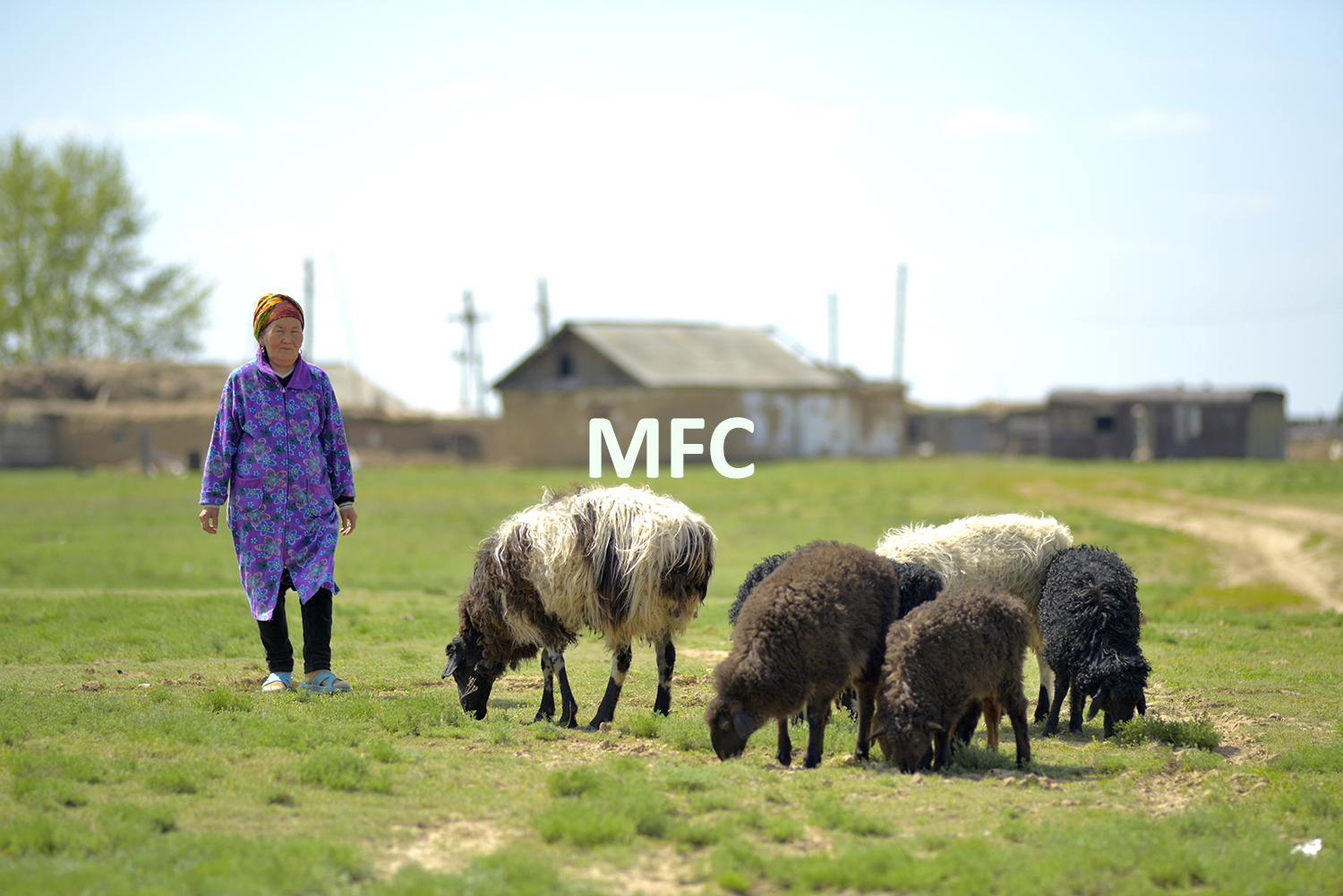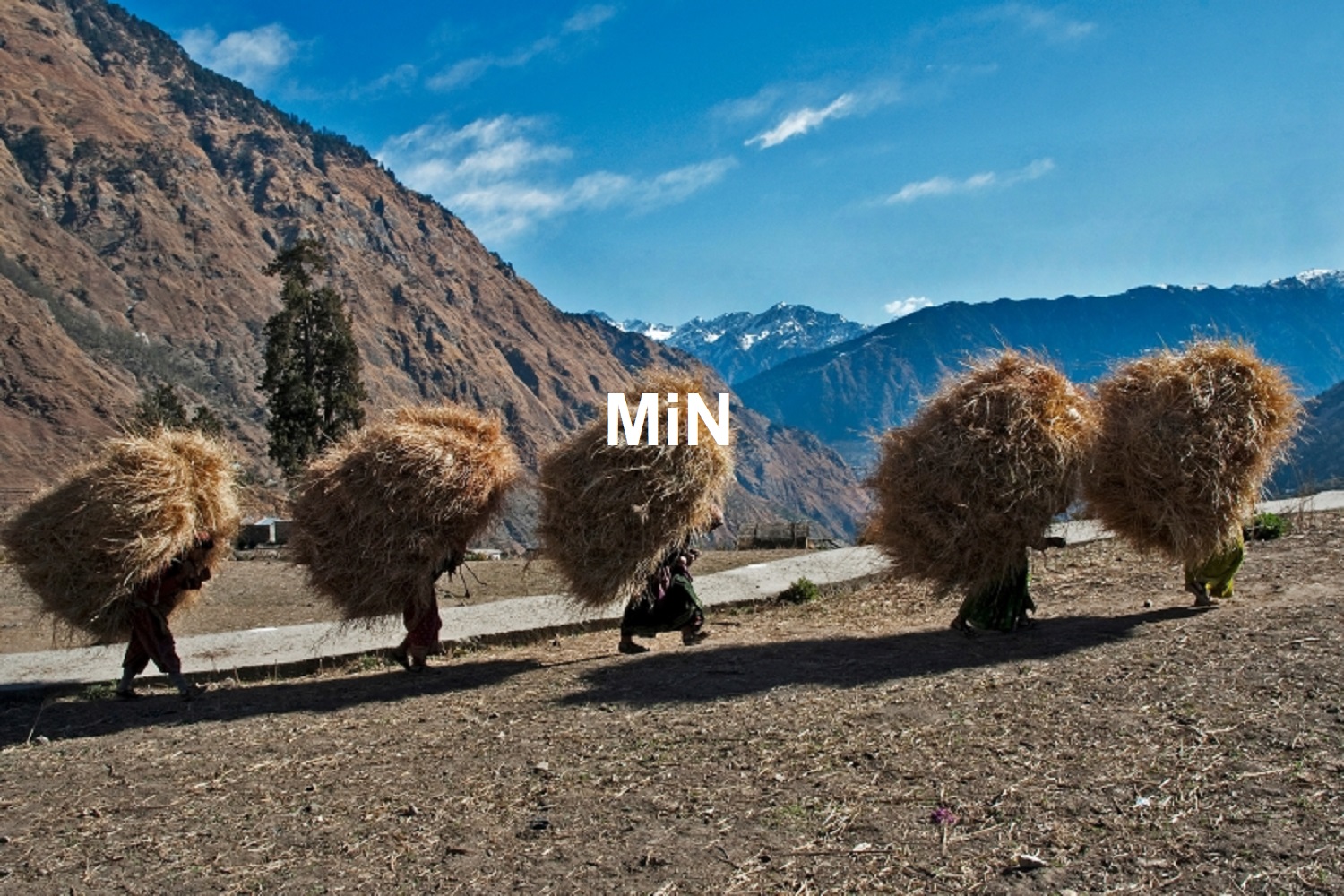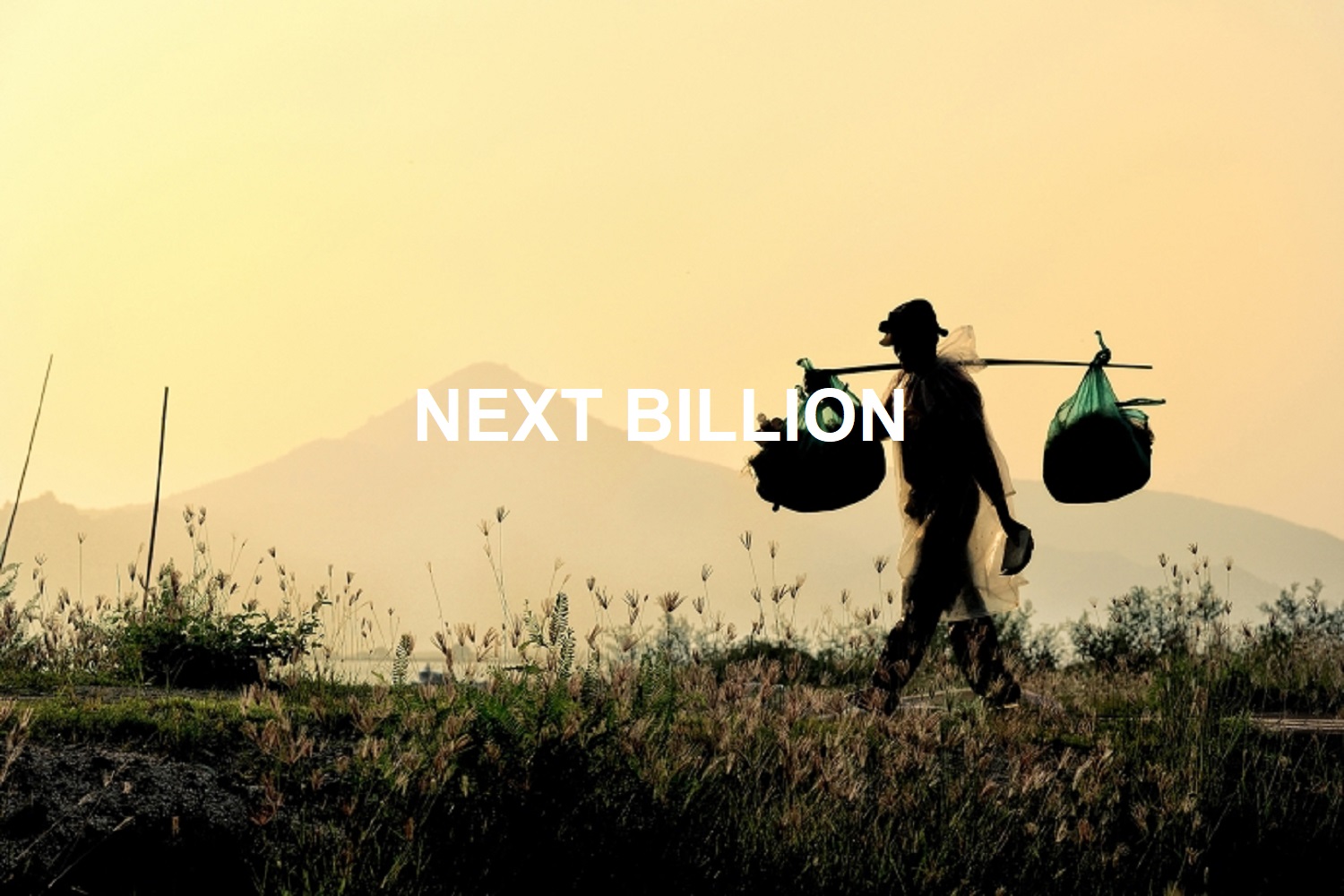The Covid-19 Observatory is a space dedicated to articles related to the Coronavirus, as well as to the results of the Foundation’s investigations and analyzes around the impact of the crisis on the microfinance institutions supported.
You will also find all the information relating to the joint commitment signed by a group of donors and microfinance platforms to support microfinance institutions and their clients in the face of the Covid-19 crisis.
Pledge to reinforce microfinance
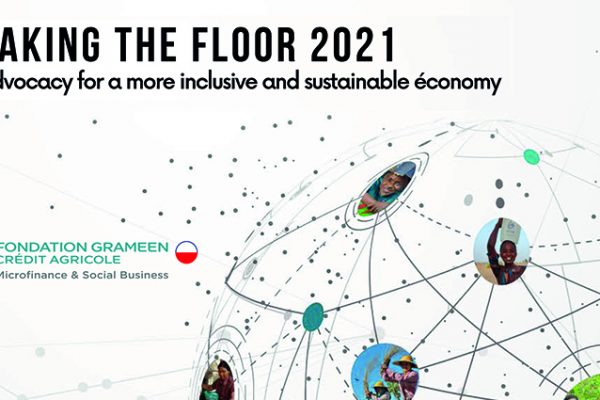
The Foundation publishes the 2nd edition of “Taking the Floor”
11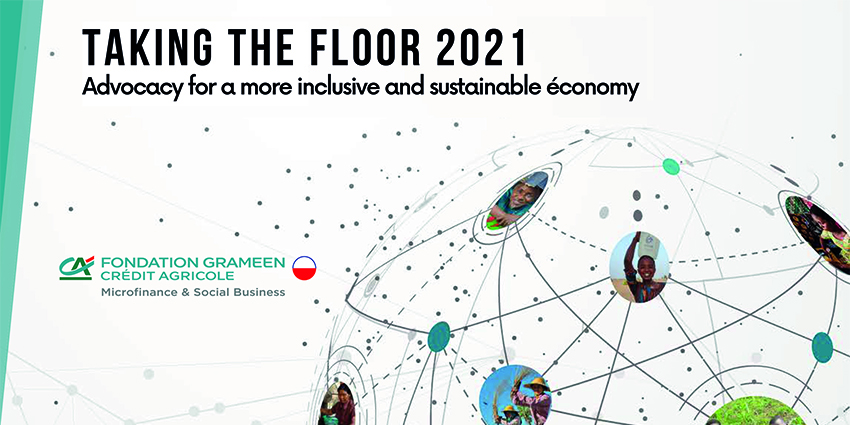
The Grameen Crédit Agricole Foundation has been promoting financial inclusion and social entrepreneurship for thirteen years now and continues to work in favour of the development of rural areas and female entrepreneurs. At the end of 2021, the Foundation had accumulated nearly €300 million in funding, 379 technical assistance missions in progress or completed and 136 organisations funded.
We are pleased to share with you this second edition of “Taking the floor”. It presents our daily support for entrepreneurs, rural communities, refugees and farmers. Enabling refugees from the Nakivale camp to access credit in Uganda, modernising agricultural practices in Moldova, financing access to water and ensuring the pay of breeders in Senegal, these are some of the actions highlighted in this second edition.
These stories demonstrate the resilience of the microfinance sector, this ability to cope with the health context, the economic difficulties and the effects of global warming. Resilience also refers to the ability to transform obstacles into opportunities to strengthen oneself. The digital transformation, the coordination between stakeholders and the innovation demonstrated by our partners throughout these last difficult months are a clear proof of it.
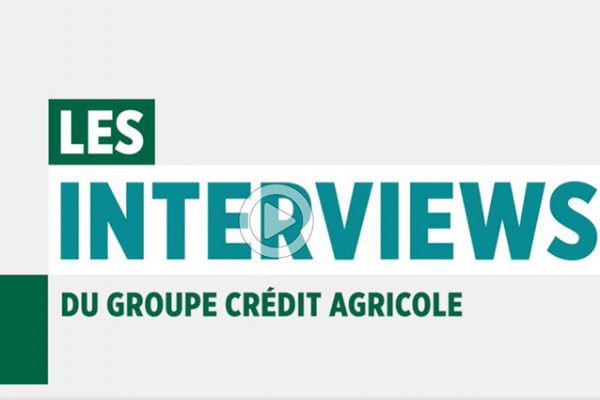
The Grameen Credit Agricole Foundation in 2021
Eric Campos, Fondation Grameen Crédit Agricole
In 2021, the Grameen Crédit Agricole Foundation supported 81 microfinance institutions and social enterprises in 37 countries. In the context of the Covid-19 crisis, the Foundation supported its partners with funding and technical assistance. Spotlight on the interview with Eric Campos, Managing Director of the Foundation and CSR Director of Crédit Agricole SA.
How did you support microfinance institutions?
Contrary to what we thought, the entire year of 2021 was marked by the Covid crisis and the economic effects and measures taken by the States to protect the population. The Foundation therefore intervened in three ways with the partners. First, we have maintained a fairly high volume of financing, with 45 million Euros lent to microfinance institutions. We also granted deferrals, to give institutions a break, to allow them to deal with their own deferrals that they granted to their beneficiaries. Finally, we have increased our capacity, our coordination in terms of technical assistance since, and this is a record, we have coordinated 130 technical assistance missions, mainly to support institutions in terms of risks, counterparty risks, strengthening their risk team, their organisation, and also in terms of managing their cash flow.
How is the microfinance sector doing at the end of 2021?
2020 was a Covid year and the institutions coped, knew how to deal with this systemic crisis. 2021 has been tougher. They had been a little exhausted by this first year of 2020 and they had to pursue their efforts, their resistance. And therefore, the Foundation was indeed able to support these institutions, but some difficult cases appeared for which it was necessary to grant not only deferrals but also restructurings.
It is important to say that the entire microfinance sector, foundations, investment funds, were able to talk to each other to provide the best possible support to the institutions that were experiencing the most significant difficulties. The sector is still resilient. It is an attractive sector. We can say that it has faced this systemic crisis with a resilience that was probably even greater than what we thought.
What is the Foundation’s agenda for 2022?
2022 will be the year of preparation for our 2022-2025 medium-term plan. It will hinge on this climate crisis that is hitting the Foundation’s areas of intervention hard.
Better support rural populations, strengthen their economic resilience, in the aftermath of an extremely serious economic crisis; this will be the first axis on which we will work. And the second one is to support the most vulnerable populations, those who have also suffered from this economic crisis and who need us to be able to support them in accessing financing, in the development of income generating activities. These will be the two pillars of our 2022-2025 medium-term plan.
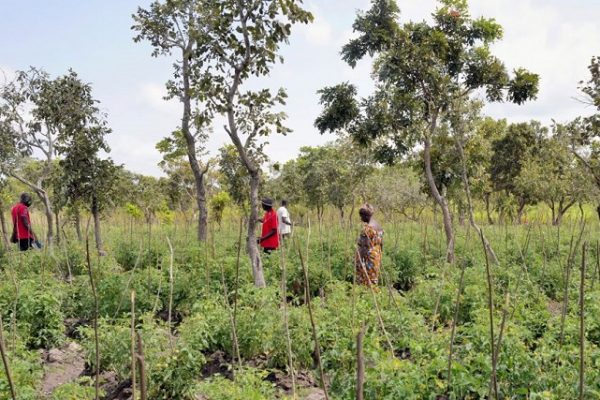
€10 million partnership in favour of African entrepreneurship between EIB and the Foundation

16 February, 2022
Small entrepreneurs across Africa to benefit from €10 million partnership between European Investment Bank and the Grameen Credit Agricole Foundation
- Ongoing cooperation to strengthen access to microfinance by rural and underserved entrepreneurs impacted by COVID pandemic
- Scheme to back microfinance institutions in different countries across Africa, with a focus on gender inclusion
- Africa private sector to benefit from local currency financing and support for smaller microfinance institutions
Access to finance by entrepreneurs and businesses impacted by COVID-19 in rural regions in Sub-Saharan countries will be enhanced by a new €10 million targeted financing initiative launched by the European Investment Bank (EIB) and the Grameen Credit Agricole Foundation ahead of the first EU-Africa summit since the pandemic.
The latest cooperation between the European Investment Bank, the world’s largest international public bank and the Grameen Credit Agricole Foundation, a leading supporter of microfinance across Africa, will focus on ensuring that small business can access finance, create jobs and combat poverty.
“Ensuring that entrepreneurs and communities across Africa can access finance is essential to unlock opportunities, accelerate social inclusion and strengthen economic resilience to challenges unleashed by the COVID-19 pandemic. The EIB is committed to supporting microfinance across Africa and we are pleased to strengthen over long-standing cooperation with the Grameen Credit Agricole Foundation. The €10 million engagement launched today will directly benefit small businesses across the continent.” said Ambroise Fayolle, Vice President of the European Investment Bank.
“Delivering targeted financing in fragile regions is capital to beat poverty, prevent social exclusion and unlock opportunities that drive economic growth. This new cooperation between the EIB and our Foundation will strengthen access to finance by entrepreneurs in sectors impacted by COVID and in remote and rural communities.” said Eric Campos, Managing Director of the Grameen Credit Agricole Foundation.
The new pan-African microfinance partnership was formally agreed in Brussels earlier today ahead of the EU-Africa Summit at the EU-Africa Business Forum.
Improving private sector access to finance in disadvantaged communities
The new cooperation between the EIB and the Grameen Credit Agricole Foundation will help to scale up microfinance activity across Africa by providing long-term and local currency financing to local microfinance institutions.
The investment is expected to finance more than 147,000 loans to self-employed and micro-enterprises, alongside sustaining up to 36,000 jobs. Reflecting the importance of empowering women and girls across Africa the scheme will support an estimated 98,000 loans to female entrepreneurs.
Tackling challenges holding back microfinance in Africa
The new operation will support smaller microfinance institutions than those that the EIB can finance directly. These microfinance partners are often also unable to receive financing from local commercial banks and cannot scale up.
The initiative will benefit financial and social inclusion and is expected to support entrepreneurs in remote regions, micro business run by women and young people who have limited or no access to financial services. This vulnerable and underserved segments are also the most impacted by the COVID-19 pandemic.
Supporting fragile regions across Africa
The Grameen Credit Agricole Foundation will be able to allocate the loan across the many microfinance institutions in sub-Saharan Africa. The network of partner microfinance institutions spans sixteen countries across the region, including fragile ones such as Benin, Togo, Niger and Malawi.
Building on longstanding cooperation between microfinance partners
The European Investment Bank and the Grameen Credit Agricole Foundation have worked together to strengthen microfinance across Africa since 2018 and strive to enhance microfinance best-practice and help entrepreneurs to improve business skills through technical assistance projects.
The European Investment Bank is the world’s largest international public bank and since the pandemic has provided more than €8 billion for new investment across Africa.
The European Investment Bank (EIB) is the long-term lending institution of the European Union owned by its Member States. It makes long-term finance available for sound investment in order to contribute towards EU policy goals.
Created in 2008 at the joint initiative of Crédit Agricole and Nobel Peace Laureate Pr. Muhammad Yunus, the Grameen Crédit Agricole Foundation finances and supports through technical assistance microfinance institutions and social enterprises in around 40 countries.

Covid-19: Crisis evolution in some of our countries of intervention

Since the beginning of the pandemic, the Grameen Crédit Agricole Foundation has been monitoring the evolution of the health crisis in its countries of intervention to better understand its effects on supported microfinance institutions and their clients. After Covid-19: the impact of the crisis on microfinance, this new publication compiles data and analyses from some of the countries where the Foundation works.
The Foundation has chosen to use accessible, quantitative and qualitative measurement tools. The quantitative indicators focus on the number of Covid cases and the number of deaths, which are analysed on average over 7 days and as a proportion of 1 million inhabitants in order to have comparative data. The percentage of fully vaccinated inhabitants is also taken into account to assess the effectiveness of the vaccination campaign in the country. The qualitative measurement tools are based on the government’s actions in response to the crisis, the pandemic’s impact on the economy and the health mapping (red, orange or green countries) developed by the French government.
Sources are exclusively from relevant entities: the European Center for Disease Prevention and Control, International Monetary Fund, French Ministry of Foreign Affairs, French Ministry of Public Health, Organisation for Economic Co-operation and Development, World Bank and World Health Organisation.
With this publication, intended for policy makers, funders, operators and microfinance institutions, we hope to contribute to the understanding of the effects of Covid-19 on the microfinance sector in order to better prepare, innovate and respond to the crisis.
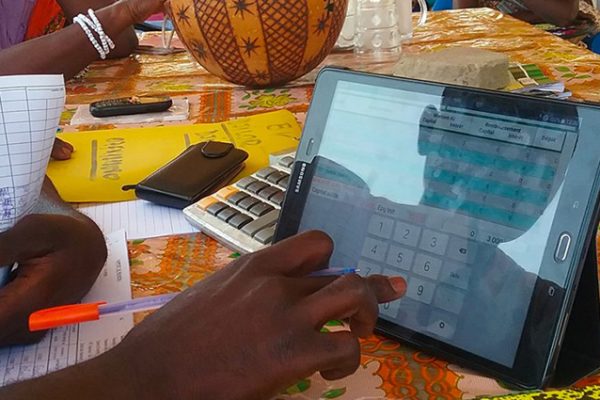
Digital Technology at the Heart of the Strategic Orientations of Microfinance Institutions
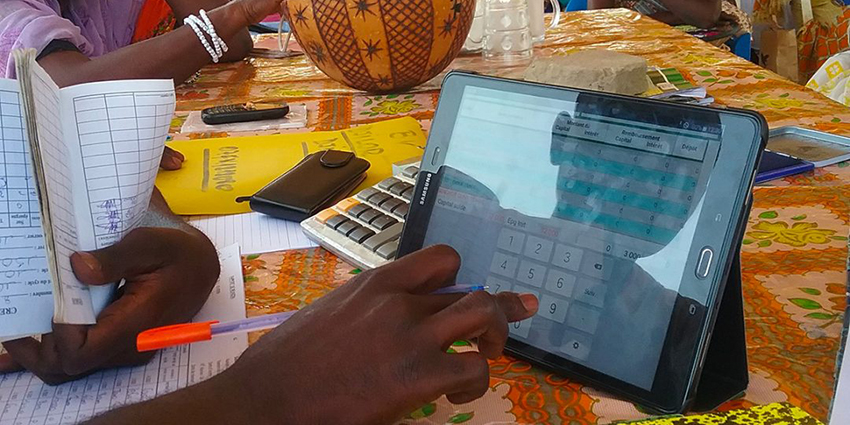
ADA, Inpulse and the Grameen Crédit Agricole Foundation joined forces in 2020 to monitor and analyse the effects of the COVID-19 crisis on their partner microfinance institutions (MFIs) around the world. This monitoring was conducted periodically in 2020 and 2021 so as to get a better view of the development of the crisis worldwide. The conclusions presented in this article follow the last study conducted in November 2021. With this regular analysis, we hope to contribute, at our level, to the charting of strategies and solutions adapted to the needs of our partners, as well as to the dissemination and exchange of information by and between the different stakeholders of the sector.
The results presented here are from the 8th survey in the joint series (1) of ADA, Inpulse and the Grameen Crédit Agricole Foundation. The 70 institutions that responded are located in 39 countries in Eastern Europe and Central Asia (ECA-24%), Sub-Saharan Africa (SSA-38%), Latin America and the Caribbean (LAC-20%), South and Southeast Asia (SSEA-9%), and the Middle East and North Africa (MENA-9%) (2).
1. Despite the recovery in operations, growth is limited by weak demand
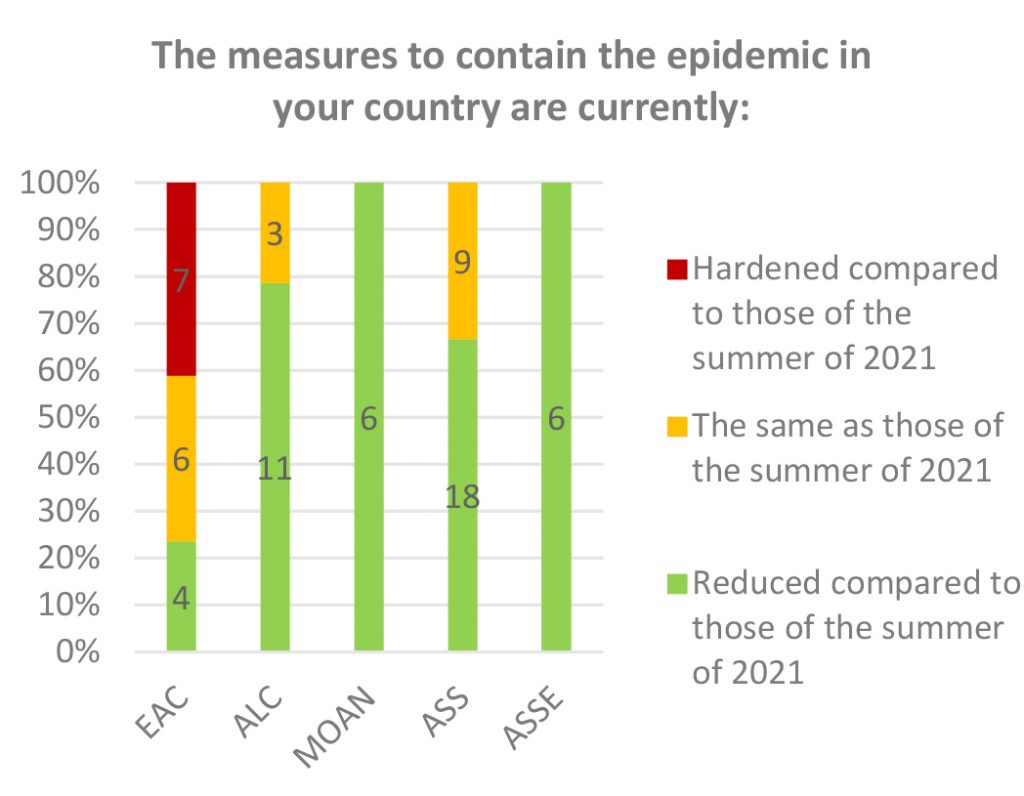 The COVID-19 environment improved substantially for our partner microfinance institutions in the 2nd half of 2021. More specifically, as of November 2021, 64% of them reported that the measures taken to contain the epidemic in their countries had eased compared to those experienced in the summer, and 70% of respondents (49 MFIs) no longer faced COVID-19-related constraints in their operations.
The COVID-19 environment improved substantially for our partner microfinance institutions in the 2nd half of 2021. More specifically, as of November 2021, 64% of them reported that the measures taken to contain the epidemic in their countries had eased compared to those experienced in the summer, and 70% of respondents (49 MFIs) no longer faced COVID-19-related constraints in their operations.
MFIs in Eastern Europe (Bulgaria, Lithuania, Moldova and Romania) stand out as an exception to this dynamic, since some of them (7 MFIs out of 13 in this sub-region) report a hardened context during this period, linked to the resurgence of the epidemic in the region in the last quarter. This is reflected in the difficulties in meeting clients in the field or in branches and therefore in conducting activities in general (collection and disbursement of loans).
It is in this changing context that MFIs have been operating for almost two years now. Although conditions are improving, operational performance has remained below expectations as the surveys continue: 53% of respondents (37 MFIs) report that they have not met their disbursement targets since the beginning of the year. This phenomenon is encountered globally in every region, with the exception of LAC (where most partners are located in Central America).
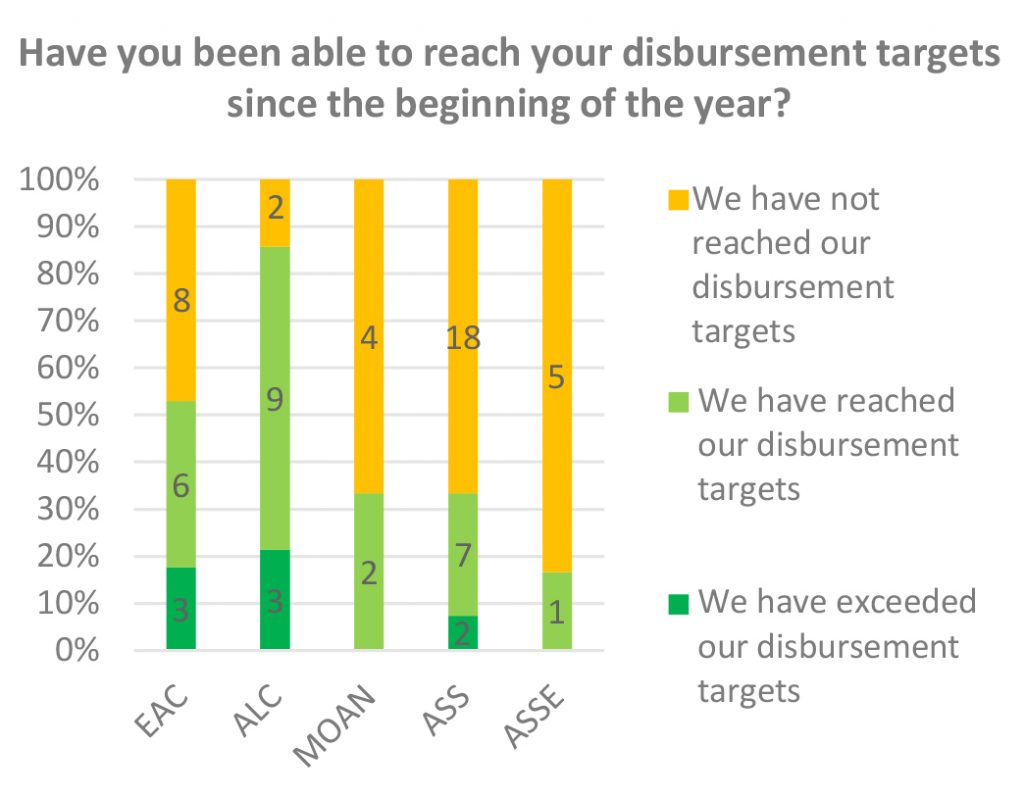 The low levels of disbursements are related first and foremost to difficulties experienced by MFI clients. The two most common reasons given (54% and 49% respectively) for the MFIs that are not growing at the expected levels this year are the deteriorated risk profile of clients and the reluctance of clients to take out new loans. This justification is further confirmed by the fact that 53% of respondents still have a higher risk portfolio than before the crisis. This persistent increase in risk and the situation of a portion of the MFIs’ clients with little or no needs consequently limits the possibilities of MFIs for development.
The low levels of disbursements are related first and foremost to difficulties experienced by MFI clients. The two most common reasons given (54% and 49% respectively) for the MFIs that are not growing at the expected levels this year are the deteriorated risk profile of clients and the reluctance of clients to take out new loans. This justification is further confirmed by the fact that 53% of respondents still have a higher risk portfolio than before the crisis. This persistent increase in risk and the situation of a portion of the MFIs’ clients with little or no needs consequently limits the possibilities of MFIs for development.
2. Digitalization remains the top priority for microfinance institutions
A gradual and contrasting economic recovery notwithstanding, the proactive approach of MFIs to adapt to current and future challenges continues to be demonstrated as the months go by. We have noticed that the crisis has fuelled reflection on strategic issues since its onset. At the end of 2021, 47% of MFIs confirm that the important areas of work for the coming years have emerged with the crisis. Above all, the topics most mentioned at the beginning of the pandemic (product development for agriculture, adaptation of the offer, digitalization) are still at the heart of the directions that partner institutions should take.
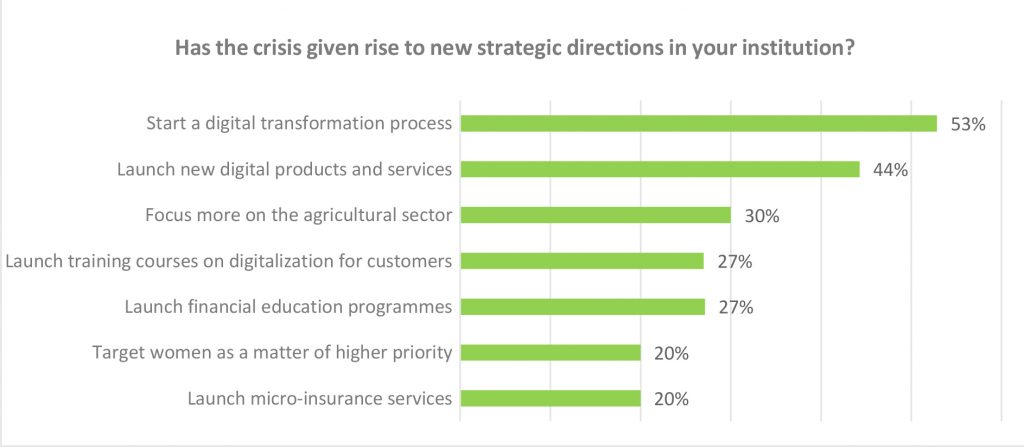
The implementation of (internal and external) digital solutions is considered the main area of development. Digitalization is essential to overcome the difficulties of direct contact with borrowers, a subject that has been highlighted since the beginning of the pandemic. We also note that the appeal of digitalization is found in all regions, but that it is more or less pronounced depending on the size of the MFI: 69% (9 MFIs) of Tier 1 (3) institutions are thinking of launching new digital products and services, while this concerns only 47% (15 MFIs) of Tier 2 and 24% (5 MFIs) of Tier 3 institutions.
The other strategic areas cited are mentioned to a lesser extent. 30% of the respondents nonetheless plan to focus more on the agriculture sector. The responses on this subject do not show a marked correlation either in terms of MFI size or location; only the SSEA region shows a particular interest (67%). This echoes the testimonies we collected a year and a half ago: this sector appeared to be one of the least affected by the COVID-19 crisis. This intention to invest more in the agricultural sector is particularly positive as this sector represents an economic, social and environmental challenge for the years to come.
Finally, another point that stands out among the responses of our partners is the training and awareness-raising of clients on various topics: the use of digital solutions (27%), financial education (27%), health (11%) and environmental protection (11%). While these topics are less popular, they are related to the MFIs’ areas of development mentioned above and highlight the need to support clients so that they can adapt to these changes.
3. The capacity to implement these strategies varies according to the size of the MFIs
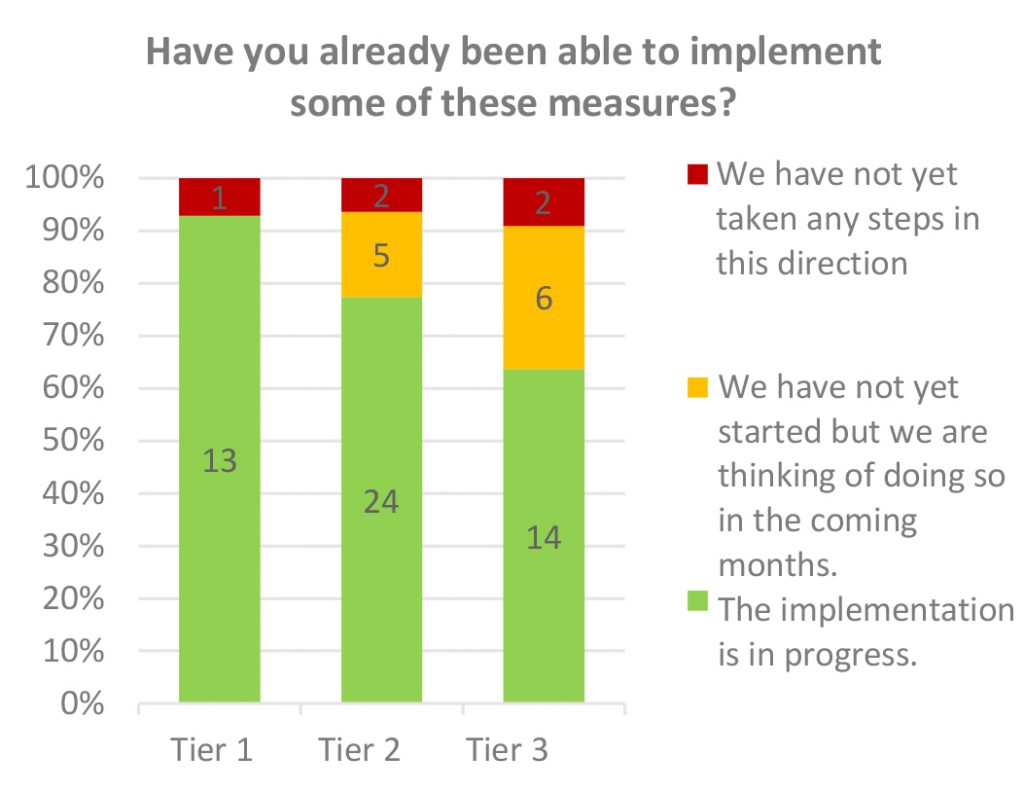 We note that 76% of the MFIs have already started to implement measures related to these strategic lines and 16% plan to launch actions in this direction in the coming months. Thus, only 7% of the sample have less clear perspectives on this point. A certain time lag in the implementation of these measures emerges however, depending on the size of the institutions: the vast majority of Tier 1 MFIs (93%) have already implemented such measures, whereas this proportion drops to 77% for Tier 2 and 64% for Tier 3 MFIs.
We note that 76% of the MFIs have already started to implement measures related to these strategic lines and 16% plan to launch actions in this direction in the coming months. Thus, only 7% of the sample have less clear perspectives on this point. A certain time lag in the implementation of these measures emerges however, depending on the size of the institutions: the vast majority of Tier 1 MFIs (93%) have already implemented such measures, whereas this proportion drops to 77% for Tier 2 and 64% for Tier 3 MFIs.
These differences by MFI size (which we already noted in our 2020 work on the direct consequences of the crisis on MFIs (4)) are also reflected in the level of support expected from external stakeholders (investors, donors, etc.). Whereas technical assistance (69% of responses) and dedicated funding (66%) are the two components that stand out the most for making progress on these issues, they are much more requested by Tiers 2 and 3 MFIs. Similarly, the ECA MFIs are the only ones to show a certain independence on this subject, with a third of the respondents in the zone not stressing any need for support.
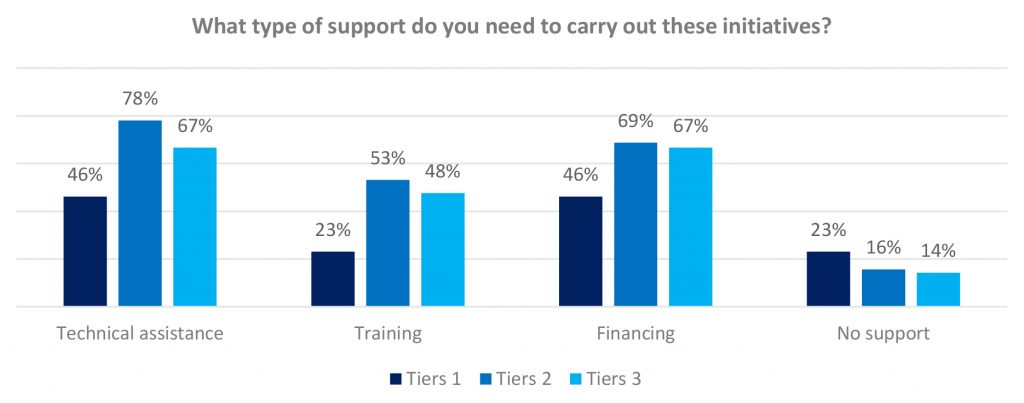
The larger MFIs therefore appear to be better equipped and more autonomous after the crisis to meet their next challenges, as they were at the peak thereof. At the same time, some of the smaller MFIs also confirm strong orientations for the years to come, albeit to a lesser extent. They are no less ambitious even though they have fewer resources.
_____________________________________________
(1) The results of the first seven surveys are posted on //www.gca-foundation.org/observatoire-covid-19/, //www.ada-microfinance.org/fr/crise-du-covid-19/ and //www.inpulse.coop/news-and-media/
(2) Number of MFIs per region: ECA: 17 MFIs; SSA: 27 MFIs; LAC: 14 MFIs ; SSEA: 6 MFIs; MENA: 6 MFIs.
(3) Tier 3 MFIs have outstanding loans of less than US$5 million, Tier 2 MFIs between US$5 million and US$50 million, and Tier 1 MFIs over US$50 million.
(4) //www.gca-foundation.org/en/covid-19-affects-mfis-of-different-sizes-in-different-ways/
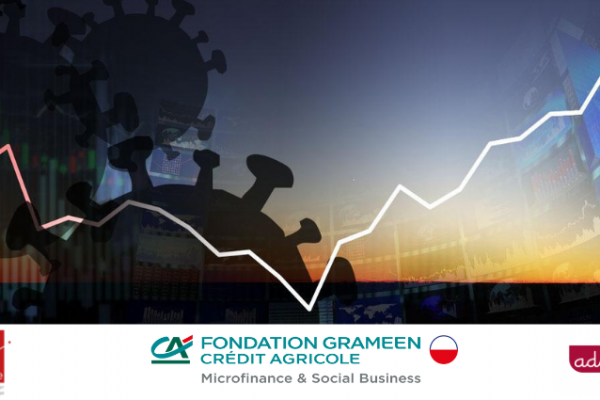
Signs of economic recovery remain mixed
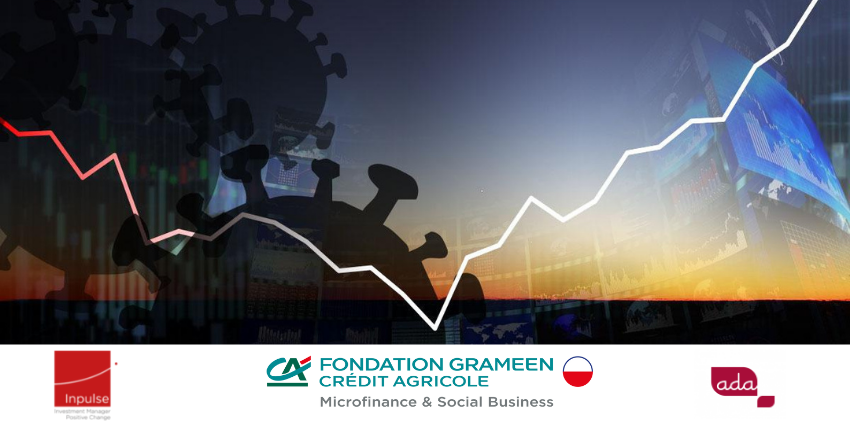
ADA, Inpulse and the Grameen Crédit Agricole Foundation joined forces in 2020 to monitor and analyse the effects of the COVID-19 crisis on their partner microfinance institutions around the world. This monitoring was carried out periodically throughout 2020 to gain a better insight into how the crisis has developed internationally. We are extending this work this year, on a quarterly basis. The conclusions presented in this article follow the second quarter of 2021. With this regular analysis, we hope to contribute, at our level, to the construction of strategies and solutions adapted to the needs of our partners, as well as to the dissemination and exchange of information by and between the different stakeholders in the sector.
In summary
The results presented in the following pages come from the seventh survey in the series shared by[1] ADA, Inpulse and the Grameen Crédit Agricole Foundation. Responses from our partner microfinance institutions (MFIs) were collected in the second half of July 2021. The 78 institutions that responded are located in 40 countries in Sub-Saharan Africa (SSA-32%), Latin America and the Caribbean (LAC-30%), Eastern Europe and Central Asia (ECA-22%), North Africa and the Middle East (MENA-9%) and South and Southeast Asia (SSEA-6%).[2]
The fairly positive overall trend nevertheless conceals highly contrasting realities, with the largest number of institutions returning to growth and others continuing to encounter difficult economic conditions. The first group shows growth in their assets and positive development projections for the end of 2021. This outlook remains measured nonetheless (mostly between 0 and 10% of portfolio growth) as factors such as client demand and risk management continue to affect expansion opportunities.
Conversely, some institutions are facing difficulties specific to health contexts, the effects of which are weighing on economic life and are having a strong impact on transaction volumes. As a result, the profitability of their financial performance has been affected to the point of having a negative effect on the equity capital of the most fragile.
- An operating environment that continues to improve overall
The reduction of operational constraints and the gradual recovery of business activities are again confirmed in this latest survey. Needless to say, this trend hides some disparities that are less well oriented due to the measures taken to fight the spread of the virus. At the beginning of July 2021, 47% of the institutions surveyed said that they no longer faced operational constraints on a daily basis (Figure 1). Also, all constraints relating to traveling in the country and meeting clients do not concern more than 20% of respondents.

This is reflected in the level of activity of the institutions: 72% of the MFIs have either returned to a pace similar to that before the crisis or are experiencing a gradual recovery without major interruptions (figure 2). This phenomenon is particularly visible in the ECA region, where the level of activity has not declined for almost all institutions. In the LAC and SSA regions, a majority of organisations are in the same situation (63% and 68% respectively). In these areas, the difficulties are particularly acute in East Africa, Panama, and Honduras. Finally, for MFIs in the MENA region, the trend is towards recovery while those in SSEA are largely facing new difficulties (Cambodia, Laos, Myanmar, Sri Lanka).

- Part of MFIs have returned to growth
It is in this context that MFIs continue to disburse loans to their clients. Whereas the increase in portfolio at risk (PAR) and the reduction in the loan portfolio were the major financial consequences of the crisis in 2020, only 36% of the MFIs surveyed in July still report a decline in their outstanding loans (figure 5).

This positive analysis masks a slow process, however, as shown by the response of our partners to whether they met their disbursement targets in Q2 2021. More than half (53%) indicated that they did not meet their disbursement targets in this period, a figure that is relatively close to that obtained in Q1. This result is not entirely correlated with an organisation’s level of operations: more than half of the MFIs in the LAC and SSA regions report unmet targets despite a favourable operating environment. Note that three major reasons are cited by MFIs that did not meet their growth targets this quarter: the drop in amounts requested by clients (45%), clients’ reluctance to commit to new loans (43%), and managing risk by focusing only on existing clients (38%). Thus, MFIs in the EAC region are the exception with excellent performance in Q2 2021.

Even if these indicators reveal an inconsistent pace of development, the year 2021 is expected to end with growth in outstanding loans for the vast majority of MFIs. In fact, 86% of the institutions surveyed expect to have more outstanding loans than in December 2020 by the end of the year 2021. This growth will be reasonable for a large proportion of them: 44% of respondents expect portfolio growth of between 0 and 10%, particularly in the MENA and Latin America & Caribbean regions. For slightly more than a third of MFIs (36%), it will be between 10 and 30%. Projections are split between these two estimates in the other three regions analysed. Finally, it should be noted that 10-20% of MFIs in each region expect to reduce their outstanding loans.
- Credit risk remains under control but is still present
Despite these reassuring signs of portfolio growth, MFIs still face a high credit risk, a lingering remnant of the crisis. In point of fact, 58% of respondents in Q2 2021 stated that the current portfolio at risk remains higher than in early 2020. While some institutions still have an active moratorium (only 5%), the loans of clients in trouble at the beginning of the crisis are now showing up in the PAR as restructured or delinquent loans. In addition, there are clients in arrears who did not have a moratorium. All these loans are provisioned to cover the proven risk of default. The decline in profitability is another major financial consequence of the crisis, fuelled by the sharp increase in provisioning expenses and the reduction in the number of outstanding loans.


In detail, it appears that 59% of our partners have increased their provisioning levels compared with before the crisis (Figure 6). For most (71% of these 59%), the increase is between 0 and 25% of the usual amount, a situation that is found in every region except the SSEA. Conversely, there is a group of MFIs (40%) that no longer see a major increase in credit risk and whose provisioning expenses are similar to the past or even decreasing. In this respect, the ECA region again stands out, as this is the case for nearly 60% of the organisations surveyed in the region.
As we noted in our recent studies, however, this has not yet translated into a very large increase in loan write-offs. At the end of Q2 2021, 59% of respondents indicated that loan write-off levels for the year were either down from previous years or at the same level. Nevertheless, 13% of MFIs had to write off at least twice as many loans as they did before the crisis.
- Equity has been largely unaffected so far
The profitability of microfinance institutions is affected by the return of business activities, the variation in outstanding loans and the risk coverage (factors presented in the foregoing paragraphs). The trend is downward for 51% of our partners (Figure 5). However, the information collected at the end of June 2021 is reassuring: 80% of respondents have a level of profitability that is at least balanced, which does not affect the capital of their structure (Figure 7). In the same vein, despite a negative result, 11% of respondents do not feel pressure on their equity. The situation is nonetheless more critical for 8% of the partners surveyed, whose level of capitalisation is at risk, leading to a potential breach of covenant with their funders or the regulator.


Given the difficulties faced by some of the clients, whom are up against new waves of complications related to COVID-19 or other factors, potential losses could affect the solvency of microfinance institutions. Some of them already require the intervention of their shareholders or investors. In our last study, we learned that the type of shareholder that institutions want to turn to depends on the reason why this support is needed (to cover losses or to grow). This survey shows that 20% of the respondents are already confronted by this issue: needs may arise despite recent capital support, but some MFIs are also without a solution in this regard (10%). These cases show that the impact of the crisis will still be felt by institutions already hard hit by this unprecedented period, but also by less robust MFIs. Vigilance on capital need remains necessary as the long-term impact of credit risk could turn the tables on other organisations if the overall situation does not improve, for example with the arrival of new epidemic waves.
[1] The results of the first five surveys are available here : //www.gca-foundation.org/en/covid-19-observatory/, //www.ada-microfinance.org/en/covid-19-crisis/ and //www.inpulse.coop/news-and-media/
[2] Number of responding MFIs per region: ECA 17 MFIs; SSA 25 MFIs; LAC 24 MFIs; SSEA 5 MFIs; MENA: 7 MFIs.
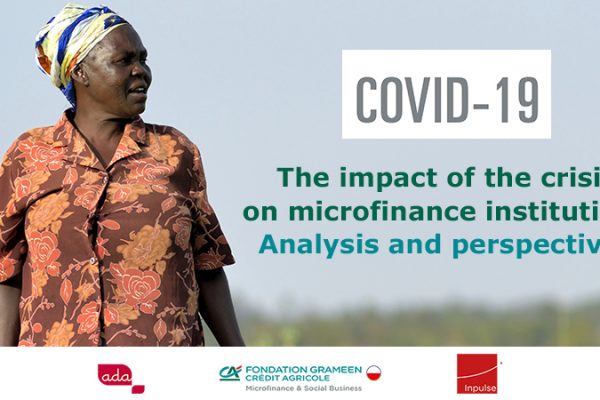
The Foundation publishes its report “The impact of the crisis on microfinance institutions”
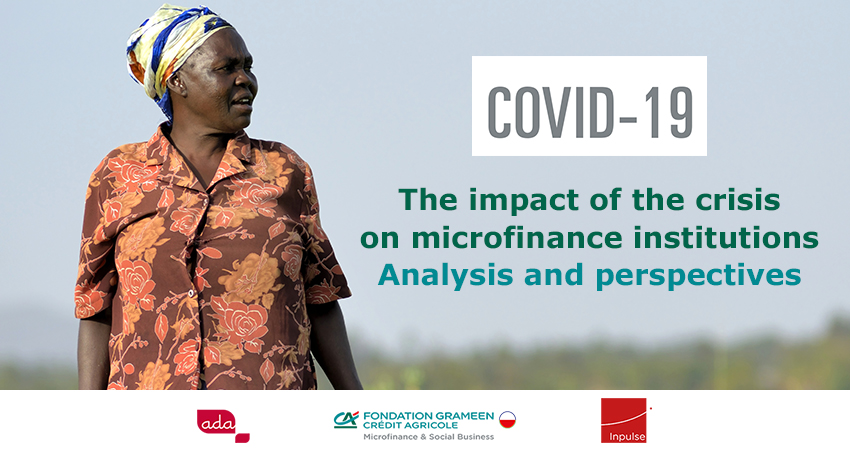
The Covid-19 pandemic affected all economies impacting fragile economies and the most vulnerable populations in particular.
The Grameen Crédit Agricole Foundation began to investigate the unprecedented effects of this global crisis on microfinance institutions (MFIs). An initial survey was launched in March 2020 to understand how our MFI partners were adapting to the repercussions of the pandemic that had already had an impact on their activities.
In the following months, the Foundation collaborated with two other major players in inclusive finance, ADA and Inpulse, to extend the scope of this study to more than 100 MFIs in 4 continents: Africa, South America, Asia and Europe. Overall, 6 surveys were conducted since the inaugural questionnaire in March.
You will discover through this report the results of these studies divided into three main parts:
Adapting rapidly to operational constraints
Surveys conducted throughout 2020 revealed three major difficulties: the impossibility of meeting clients in person, difficulties in collecting repayments and complications in disbursing loans.
In an effort to address these difficulties, MFIs acted in a proactive and appropriate manner, showing the great resilience capacity of those organisations. However, all FMIs haven’t been impacted in the same way. This document describes those constraints and the measures that have been implemented.
A significant and sustained financial impact
The operational constraints encountered have inevitably had significant financial repercussions. We observe two major consequences for almost all MFIs: an increase in the portfolio at risk (PAR) due to lower repayments, and a reduction in outstanding loans due to lower disbursements.
Those two consequences fluctuated throughout the year depending on local contexts and other financial difficulties may have arisen in some cases. The analysis of performance indicators, detailed in this document, enables us to see the lasting effect of the crisis.
Prospects for the future
In the face of the crisis, most MFIs have shown resilience. Among the levers envisaged to return to financial stability: increasing the volume of their portfolio and the number of clients, and opening up to new products and services, and even to new markets, in 2021.
You will discover throughout the report other measures MFIs explored to adapt to the crisis, which are reassuring for the future of the sector.
Despite the often positive indicators, we remain vigilant in the face of the current volatile environment. For this reason, we have maintained our approach of regular surveys in 2021, on a quarterly basis.
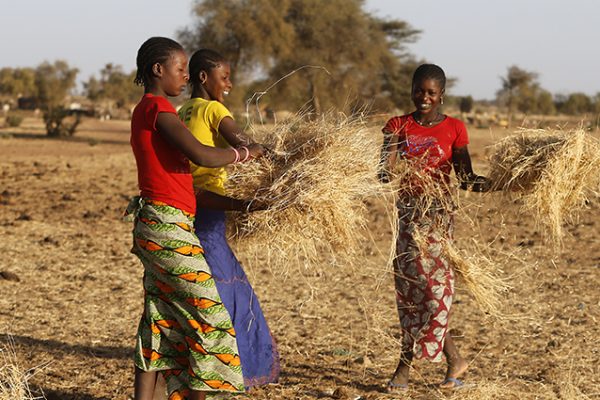
The Covid-19 crisis and gender inequalities
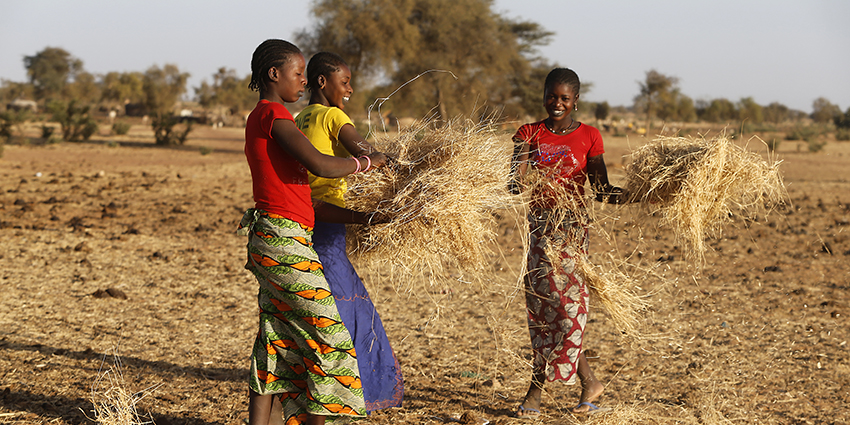
Miren Bengoa, Director, member of Financial, Risks and Impact Committee,
Grameen Crédit Agricole Foundation & International Action Director, SOS Group
Director of the Grameen Crédit Agricole Foundation since 2020, Miren Bengoa has been, since January 2021, the new International Action Director of the SOS Group. Since 2011, she was at the head of Fondation CHANEL, which supports projects improving the economic and social situation of women. She shares her view on the impact of the Covid-19 crisis on gender equality and the responses to address it.
— What is the impact of Covid-19 on the status of women?
MB: One of the immediate consequences of the Covid-19 crisis is the rise in inequalities between women and men. We have seen during this pandemic an increase in violence against women and girls and a decline in girls’ learning as dropout rates and child marriage increase. Tens of millions more women have fallen into extreme poverty as they lose their jobs at a faster rate than men. Moreover, they suffer from difficulties in accessing new technologies and lack of digital skills.
— In a few words, what is the panorama of gender inequality in the world today?
MB: Current projections indicate that gender equality will not be achieved for another 130 years. In 2020, women represented on average (on a global scale) 4.4% of business leaders, 16.9% of Board members, 25% of parliamentarians and 13% of peace negotiators. Only 22 countries are currently headed by a female head of State or government (UN Women, 2020). We need better representation of women that reflects the diversity and abilities of women and girls.
— How can female entrepreneurship be an answer to the crisis?
MB: Women entrepreneurs have been at the forefront and strongly affected by the decline in economic activity. They are nonetheless also the bearers of innovative solutions and should be supported as much as possible by funders and public authorities. Being strongly involved in responding to community needs, they have been able to adapt their activities to the constraints of the pandemic. This has not been easy: they have sometimes been the first to give up a income generating activity so as to give priority to their families.
— Promoting women empowerment is one of the missions of the Grameen Crédit Agricole Foundation. What should be the priorities to boost this aspiration?
MB: Since its creation, promoting women empowerment has been at the heart of the Foundation’s action: among the 7 million clients of microfinance institutions supported, 73% are women beneficiaries of microcredits to create or develop income-generating activities. Maintaining funding, flexibility in rollovers and frequent analysis of the needs of these institutions are and will be key to enable them to regain a capacity for action in favour of female entrepreneurship.
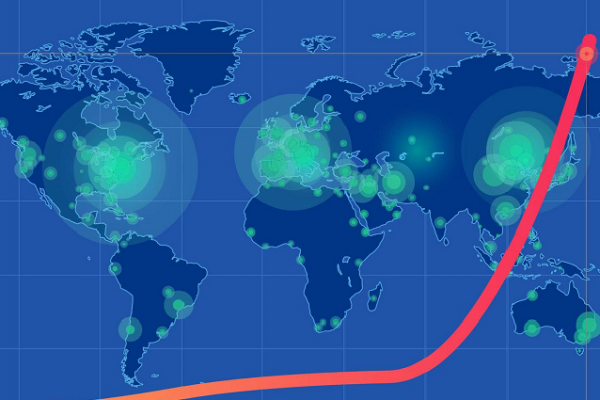
COVID-19 : The Foundation’s governance during the health crisis
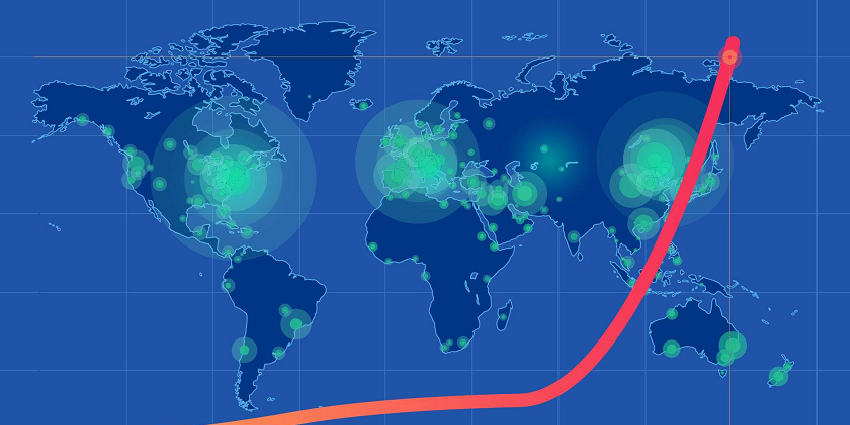
Spotlight on the interview with Sylvie Lemmet, Chairman of the Finance, Risks and Impact Committee, Jérôme Brunel, Chairman of the Compliance and Internal Control Committee, and Bernard Lepot, Chairman of the Investment Committee.
Looking back on the outbreak of the crisis, could you tell us how you perceived it at the time?
Bernard Lepot: We all understood as early as March that we were in unknown territory for an indefinite period of time, with systemic consequences that were difficult to grasp. All continents were affected, including Africa and Asia, where we have most of our activities. The risk of serious difficulties for our partners was likely, with possible large provisions for the Foundation. Despite this lack of visibility, the Board had to define the Foundation’s position quickly, which we summarise as follows: support for our existing partners and consultation with other international lenders.
Sylvie Lemmet: Last March, we were completely in the dark. We felt that the crisis was going to hit developing countries hard and that we were going to face potential bankruptcies and losses for the Foundation. We were worried for our partners.
Jérôme Brunel: I feared that the impact of the pandemic, which I thought would affect developing or less developed emerging countries more strongly (though this has not been confirmed) would weaken the solidity of the Foundation’s counterparties, leading to a substantial amount of provisions. This has not materialised up to now thanks to the resilience of the organisations supported and the coordination and joint actions of the various stakeholders in the inclusive finance sector.
What has been the role of the Committee you chair in this context?
JB: The Compliance and Internal Control Committee has played its role by adapting the internal control system to the increase in Covid-19 risks, organising training on debt restructuring methods, adapting the provisioning policy and collecting more information on the end clients of our counterparties. But to be honest, it was the Finance, Risks and Impact Committee that had the primary role in mobilising the Foundation’s governance to deal with the consequences of the pandemic.
SL: The Finance, Risks and Impact (FRI) Committee already includes the Chair of the Compliance and Internal Control Committee among its members. Last year, we immediately felt the need to make the link with the Investment Committee, and its Chair also sat on the FRI Committee. The development of governance with this ad hoc committee has been extremely positive. It enabled us to build together, and with the Foundation’s Management Committee, a good understanding of the overall situation (the impact on the portfolio, liquidity and margin) and an intervention doctrine, which we developed as the crisis progressed. The objective is to provide the necessary oxygen to our partners while monitoring the risk of default.
BL: Once the roadmap was established, the Investment Committee continued to meet every month, but by videoconferencing, with a reduced number of new projects of course, but with close monitoring of the maturity extensions granted to microfinance institutions that requested them and, more generally, enhanced risk monitoring. The Board also decided to set up an ad hoc committee consisting of the three chairmen of the specialized committees to examine and discuss possible adjustments to the Foundation’s strategy. This body met several times to exchange views with the teams and to provide input to the Board before decisions were made.
What lessons have you learned from this experience one year later, and what prospects do you see for the Foundation in 2021?
SL: One year on, I am above all reassured by the quality of the men and women who make up the Foundation’s executive team and who have been able to respond to an unprecedented situation with great flexibility, professionalism and commitment. We were able to control the financial risks without abandoning our partners in difficulty, and to test the resilience of the organisations we supported, which reassures us as to their quality and as well as the resistance of the microfinance sector to shocks. This is a point that needs to be explored in order to gain a better understanding of the mechanisms that have been implemented locally and the real social impact behind the good financial performance. We all hope for a return to a less chaotic situation and the resumption of activities in 2021. We will have to learn the lessons of remote instructions and juggle with an activity that seems to be picking up though travel remains limited. The pandemic is not yet behind us, but I hope it will remain under control in the countries in which we operate.
JB: The health crisis has shown, first, the solidity of the commitments undertaken by the Foundation, i.e. the judicious choice of its counterparts. Secondly, the quality of the response of the team and its Managing Director to adapt to this unprecedented context, helped by the mobilisation of its Board and its specialised committees. Finally, the Foundation’s commitment to continue its lending activity despite this «hostile» environment and to support microfinance institutions through an international initiative to harmonise the policies of other lenders and a precise dialogue with each of the borrowers.
BL: One year on, it is worth underscoring the remarkable mobilisation and adaptation of the Foundation’s teams, with great collaboration between the various functions. We should also note the great resilience of our portfolio to date, which has perhaps exceeded our expectations. Good information/involvement on the part of the Board has enabled it to express its full support and solidarity with the Foundation’s strategy and actions. Things are still very uncertain for 2021, with perhaps a better visibility in the 4th quarter, but again nothing is certain. Let’s hope that 2021 will be a year of transition that will enable us to resume our development activities in 2022.
Download the 2020 Integrated Report here.
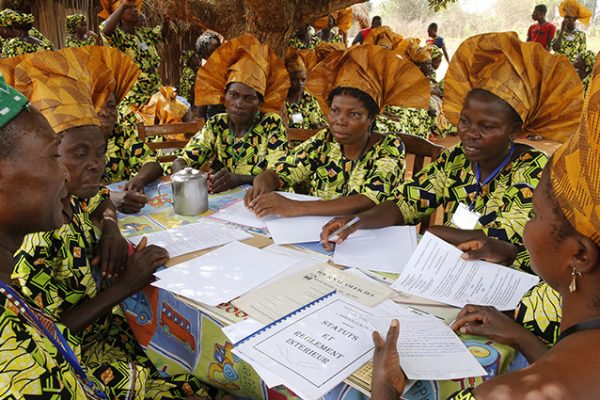
In 2020, the Foundation strengthened its technical assistance activity
By Violette Cubier, TA Manager, Grameen Crédit Agricole Foundation
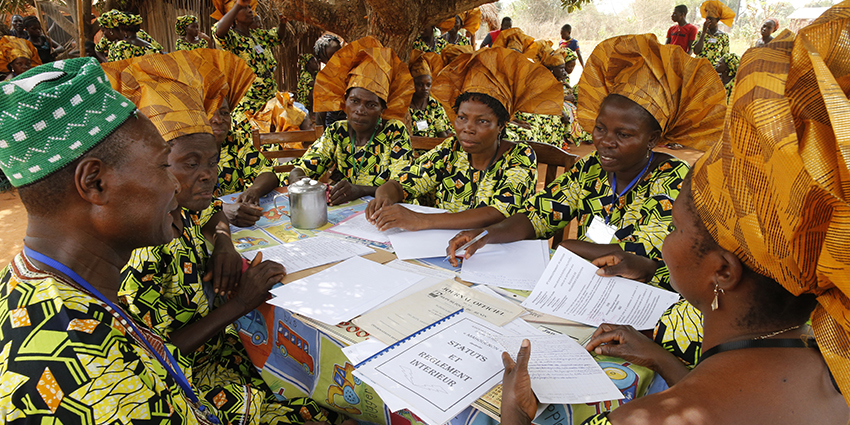
We continued to develop our third business line in 2020, namely technical assistance for our partners. Our technical assistance missions have contributed to the institutional strengthening and resilience of our partners in this time of crisis.
The Foundation supports its partners through various technical assistance programmes. This support covers a variety of issues such as operations and human resources management, governance, financial management, strategic planning, digitalisation of operations and products, launch of new services, risk management and social and environmental performance management.
The Foundation mobilised to provide close support to its partners throughout 2020. The technical assistance missions were adapted to respond to the priorities and emergencies that the partners had to face (liquidity management and portfolio quality, business continuity plans), but also to support them in their business recovery, their strategic reflections and the transitions necessary to face the crisis (digitalisation, strengthening of activities in rural areas). We also set up joint actions with other actors such as SIDI and the Fefisol fund, with whom we have organised training for some fifty organisations in Africa.
The year 2020 was also marked by a strong development of our technical assistance activities, with an increase in existing programmes and the launch of new programmes. The latter enabled the Foundation to extend the geographical areas of operation in technical assistance and to address more actively key issues such as the development of rural economies, adaptation to climate change or the financial inclusion of refugees.
The coordination of technical assistance activities is now a major focus of the Foundation’s operation for contributing to the institutional strengthening of its partners and supporting them in their economic, ecological and digital transitions, thereby increasing their impact on the ground.
More information: //www.gca-foundation.org/en/technical-assistance
Download the 2020 Integrated Report here

Persistent credit risk : a threat to the solvency of microfinance institutions ?

ADA, Inpulse and the Grameen Crédit Agricole Foundation joined forces in 2020 to monitor and analyse the effects of the COVID-19 crisis on their partner microfinance institutions around the world. This monitoring was carried out periodically throughout 2020 in order to gain a better vision of the development of the crisis at the international level. We are extending this work this year on a quarterly basis. The conclusions set out in this article follow the first quarter of 2021. With this regular analysis, we hope to contribute, at our level, to the charting of strategies and solutions adapted to the needs of our partners, as well as to the dissemination and exchange of information by and between the different stakeholders in the sector.
In a nutshell
The results presented in the following pages come from the sixth survey (1) of the joint ADA, Inpulse and Grameen Crédit Agricole Foundation series. The responses from our partner microfinance institutions were collected in the second half of April 2021. The 87 institutions that responded are located in 47 countries in Eastern Europe and Central Asia (EECA-25%), Sub-Saharan Africa (SSA-29%), Latin America and the Caribbean (LAC-25%), South and Southeast Asia (SSEA-13%) and the Middle East and North Africa (MENA-8%) (2).
Whereas the general improvement in the local contexts relating to COVID-19 enables microfinance institutions to conduct their activities better, our latest survey shows that MFIs nevertheless had a lot of difficulties in reaching their development goals in the first quarter of 2021. The reasons cited have mainly to do with the difficulties encountered by the customers of the MFIs. Such customers are reluctant to commit to new loans, and if they do, it is for smaller amounts than in the past. At the same time, their risk profile has deteriorated due to the crisis and the MFIs will find it more difficult to finance them.
This general trend of increasing risk has led to a decline in the quality of the portfolio of the MFIs. In 2020, it has ultimately been reflected in the profit and loss accounts of institutions with an increase in provisioning expenses. This is likely to be the case again this year, with additional reserves but also loan write-offs.
In fact, the operations of the MFIs have been reduced or slowed down, generally with a decrease in the level of their equity capital. In point of fact, one in two MFIs, irrespective of size, indicates a need for capital in 2021. Two trends emerge: the MFIs are counting on their current shareholders to cover the losses linked to the crisis. Conversely, international investors are expected to support their development as of this year. The answers provided by our partners therefore underscore the need for recapitalization this year, which will involve all the players in the sector.
1. Disbursement levels are still low notwithstanding the reduction in constraints
Whereas we have seen a gradual but definite reduction in operational constraints for MFIs since the summer of 2020, this phenomenon continues in the first quarter of 2021. 50% of MFIs in all indicate that the measures in place in their countries are less constraining in April compared to the end of 2020. This is particularly pronounced in Sub-Saharan Africa (64% of respondents in the region) and Latin America and the Caribbean (59%). This is to a lesser extent true for MFIs in Europe and Central Asia, where the situation is either improving or stable. Finally, the situation is opposite in South and South-East Asia, with 45% of respondents in the region reporting a more difficult context, with the Cambodian and Burmese situations weighing on results.
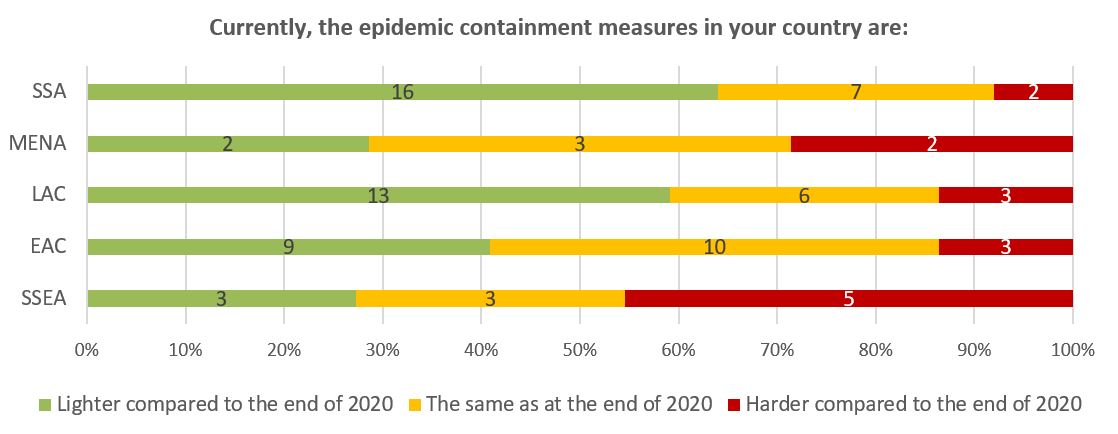
Almost half of the respondents overall report that they no longer face any operational constraints in conducting their activities. This is reflected in the resumption of activity by the MFIs: 52% of those in sub-Saharan Africa can work as before the crisis. The vast majority of MFIs in Latin America are gradually resuming their activities since the first difficulties encountered. The situation in Europe and Central Asia is again divided between gradual or almost complete recovery. Conversely, the deteriorated context for MFIs in the SSEA region is reflected in activities that are either still constrained or are again affected by new measures to contain the epidemic.
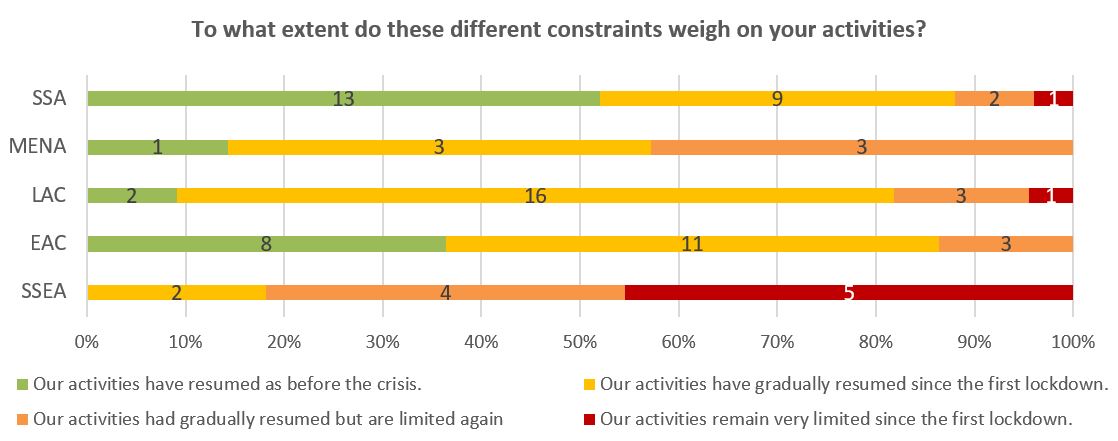
Despite these continued positive signals on the level of activity of our partners, the expected level of loan disbursement for the quarter is apparently still difficult to achieve. For example, 55% of respondents report that they did not meet their loan disbursement targets in the first quarter of 2021. Only 10% of respondents exceeded their expectations, while 35% managed to meet their targets. The responses do not appear to pertain solely to business recovery: for example, 80% of MFIs in Sub-Saharan Africa did not meet their disbursement targets in the first quarter, while half report a return to near pre-crisis levels of activity.
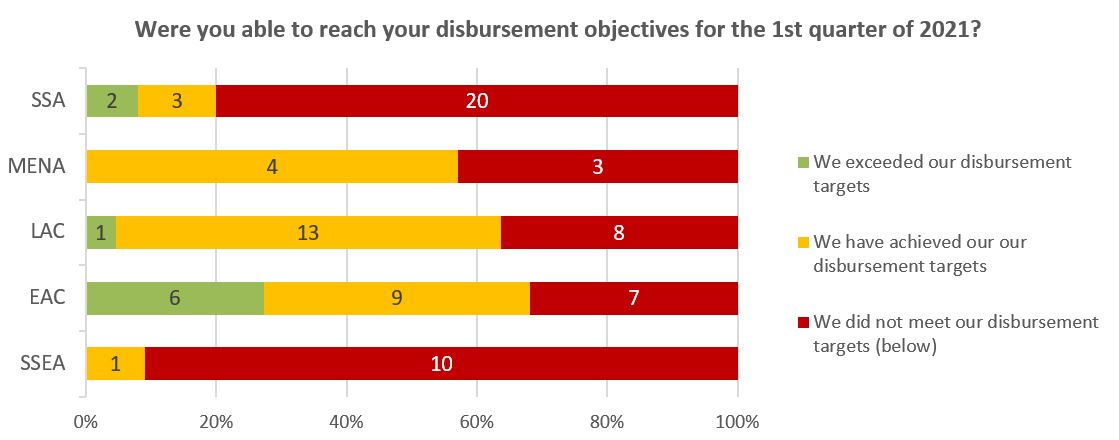
When the MFIs did not meet their growth targets at the beginning of the year, three reasons stand out to explain this phenomenon. Firstly, the fact that customers are still reluctant to take out new loans (58% of this group), especially in a still rather uncertain context. Secondly, this is explained by the deteriorating risk profile of customers (50%), who are no longer eligible for loans or are eligible for smaller amounts (38%).
The latter two arguments are also mentioned by MFIs that have reached their targets without exceeding them. Nevertheless, this dynamic is partly offset by the fact that institutions have adjusted to the crisis and have put in place products adapted (digital, targeted sectors, etc.) to the current contexts in order to meet demand (47%).
Finally, the trend is quite different for MFIs that have exceeded their disbursement targets: the main factor is the strong demand received (78%), while the adjustment of the offer (33%) and the increase in the amounts requested (22%) support this trend.
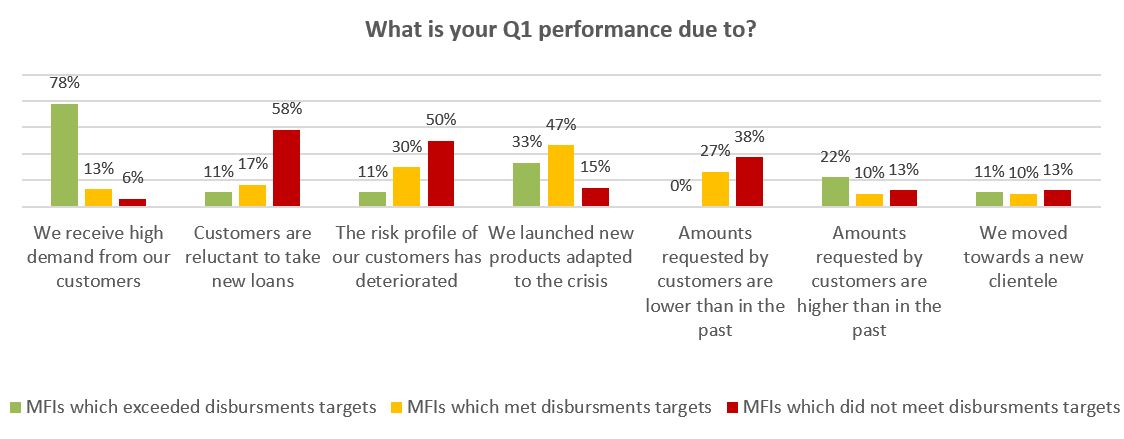
2. A persistent high credit risk continues to have a significant impact on institutions’ profitability
In parallel to these loan disbursement issues, credit risk remains the major challenge for 64% of our partner MFIs, as we have noted since the beginning of our survey series. While late repayments by customers may still be the result of ongoing moratoria (20% of respondents, particularly in South and Southeast Asia and Latin America and the Caribbean), the majority of moratoria exits have resulted in a shift from the “moratorium” portfolio to the “at risk” portfolio, either as unpaid loans or as restructured loans. In total, 61% of the respondents indicate that fewer than 90% of their customers are repaying their loans, and 25% are concerned by repayment rates below 70%.
Another major difficulty is the decline in profitability of MFIs since the beginning of the COVID-19 crisis. At the end of Q1 2021, 55% of our partners raise this point. More specifically, we find that a share of the respondents managed to maintain some profitability in 2020, thanks to certain measures (33% – shown in green in the graph below). We then find a group of institutions (49% – shown in orange) for which an impact on profitability has been felt, but without endangering the institution. Finally, a last group stands out (18% – shown in red), in a less favourable position since the losses incurred in 2020 have direct consequences on the institutions’ own funds. For some of these institutions, this even implies that the company’s capital falls below the minimum levels required by the regulator or financiers.
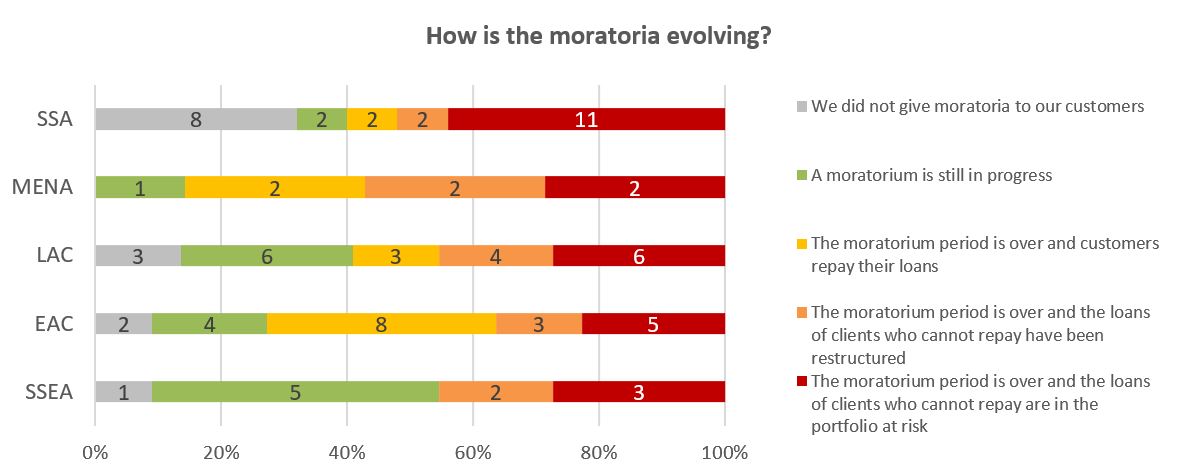
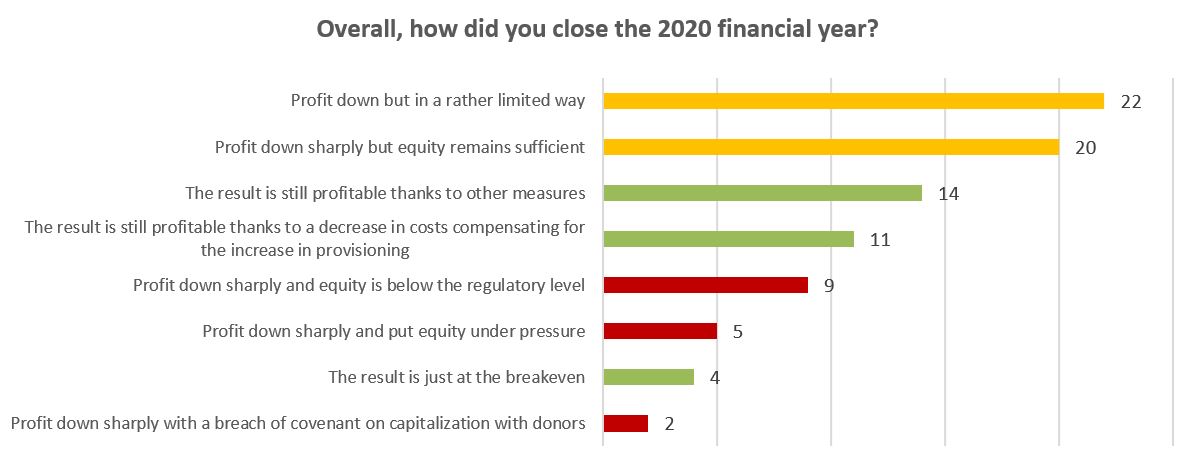
The provisioning of the portfolio at risk turns out to be the main factor impacting on profitability in fact (61%). For some institutions (26%), this may moreover have led to a breach of contract with their funders. At the same time, there are still few massive loan write-offs, as only 13% of respondents have already resorted to debt cancellation to a greater extent than in previous years.
The impact of credit risk on the profitability of the MFIs is nonetheless expected to continue in the coming months. Loan write-offs in high proportions, above the usual standards, should concern 25% of our partners surveyed. At the same time, 24% expect that the provisioning of the PAR, notably through the exit of the moratorium, will continue to have a strong impact on their financial results. Finally, it should be noted that the ageing of the current portfolio at risk could also lead to additional provisioning expenses.
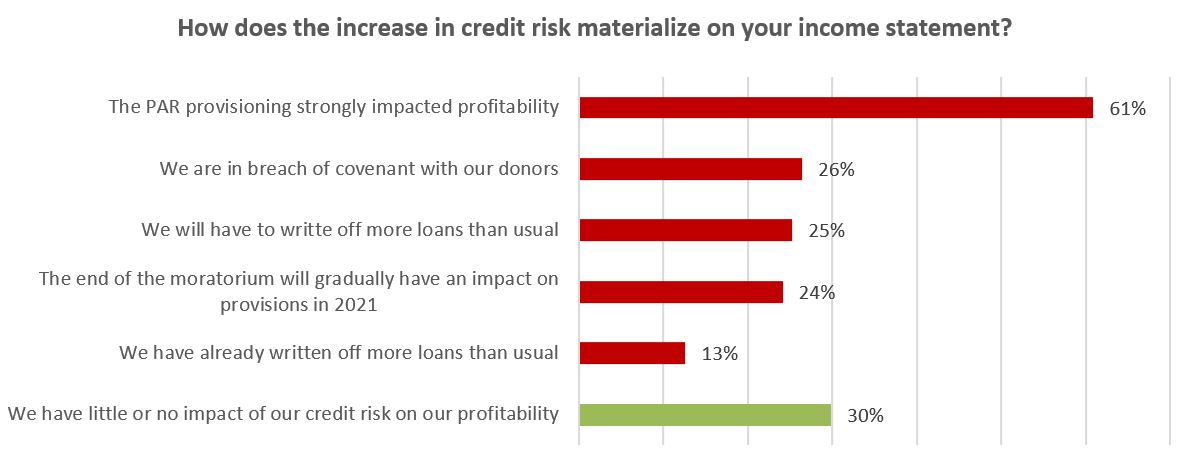
3. Strained equity capital leads to a search for investors
The decline in profitability, which could consequently continue in the near future without any improvement in credit risk, must be analysed for the short and long term. In the short term, controlling the portfolio at risk is a major challenge to avoid a (further) deterioration of profitability. This then has a direct impact on the operations of the MFIs. According to our partners, this observation has led the majority of the MFIs to revise their growth projections downwards (55%) for the coming years. It is also apparent that risk management involves paying particular attention to the type of activity of clients (31% have suspended disbursements to certain sectors – often tourism, international trade, etc.) and to eligibility criteria (29%). This increased caution reflects the current emphasis on risk management.
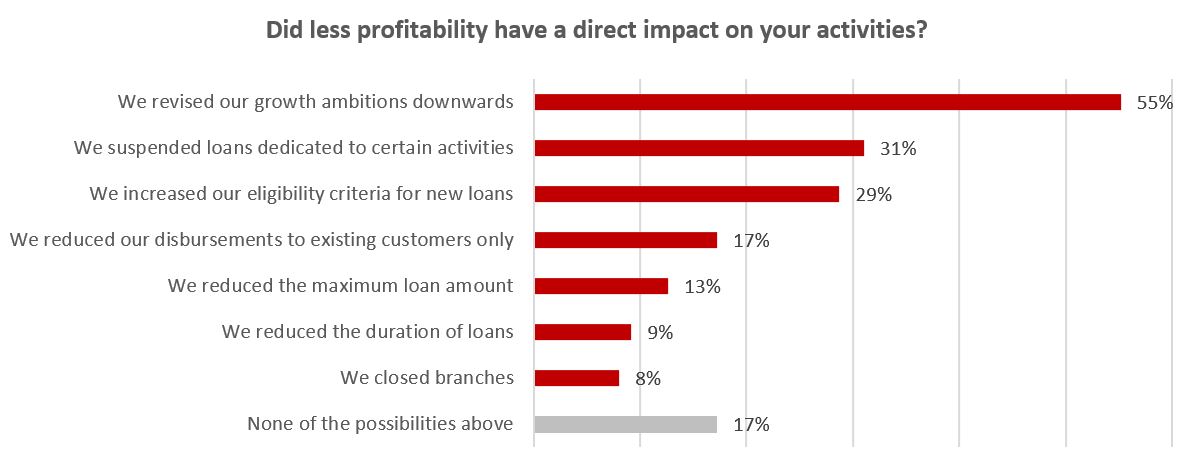
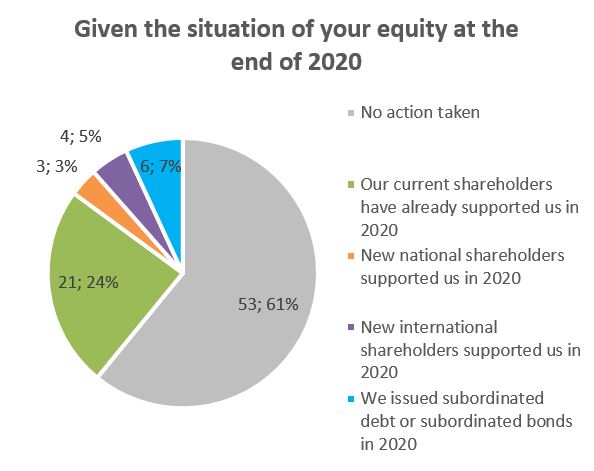 The other angle of reflection for the longer-term is the solvency of microfinance institutions in the face of declining revenues or losses. A majority of institutions today (61%) have not taken any action regarding their capital since the beginning of the crisis. Where this has been the case, existing shareholders have provided support to the MFIs, while subordinated debt (Tier 2 equity capital) has also been put in place, to a lesser extent.
The other angle of reflection for the longer-term is the solvency of microfinance institutions in the face of declining revenues or losses. A majority of institutions today (61%) have not taken any action regarding their capital since the beginning of the crisis. Where this has been the case, existing shareholders have provided support to the MFIs, while subordinated debt (Tier 2 equity capital) has also been put in place, to a lesser extent.
A very high proportion of these institutions (48%) nonetheless report an equity requirement in 2021. This sizeable proportion shows the extent of support needed within the sector to ensure its development. There is no real archetype of MFI that emphasizes this expectation of capital support in 2021: regardless of the size of the MFI, about half of each Tier category expresses capital needs.
To meet these capital expectations, The types of shareholders that microfinance institutions wish to turn to in order to meet these capital expectations depend on the reason why this support is needed. For example, for institutions that mention a need for equity support in 2021, we find that when an MFI needs help to cover losses, it overwhelmingly turns to its existing shareholders (83% of cases, 10/12). Conversely, when MFIs are looking for support to continue to grow, they will more often turn to international investors (56% of cases, 14/25), beyond the potential contribution of existing shareholders. Finally, it is worth noting that subordinated debt may be favoured over capital injection, as this option is mentioned by 5 institutions.
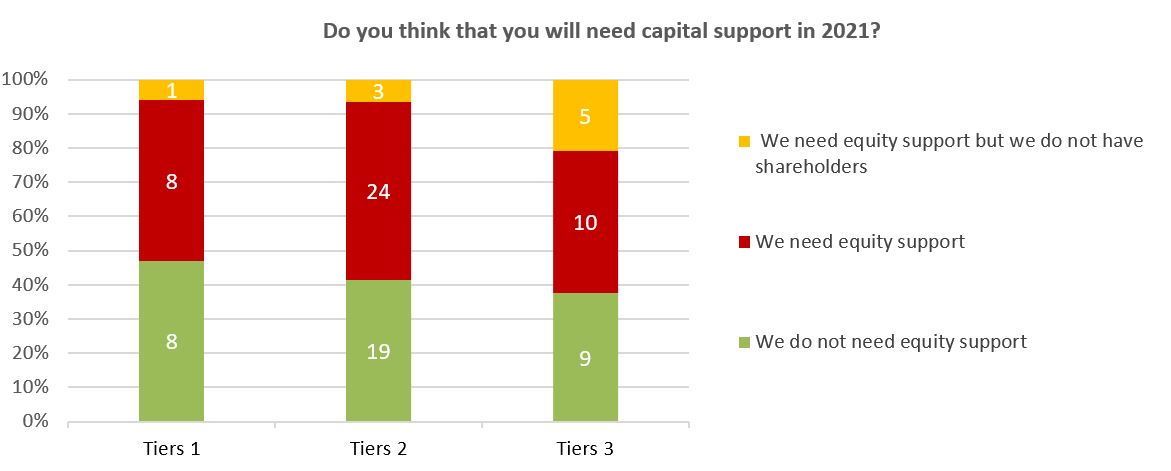
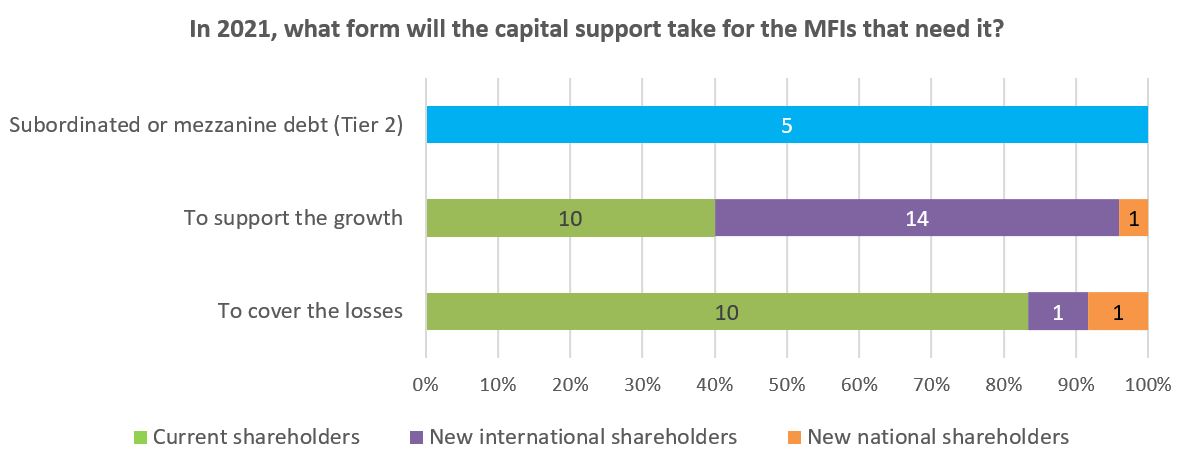
All of our partners’ responses therefore suggest that the impact of the crisis, through credit risk, logically creates equity needs for a large proportion of entities, as they face either financial losses or a limitation in their ability to recover. While 41% of respondents say they will focus on improving the quality of their portfolio this year, our partners remind us of the essential role that international and existing investors will have to play in maintaining a satisfactory level of capitalisation that is conducive to their development.
_________________________________________________________________
(1) The results of the first five surveys are posted on //www.gca-foundation.org/observatoire-covid-19/, //www.ada-microfinance.org/fr/crise-du-covid-19/ and //www.inpulse.coop/news-and-media/
(2) Number of responding IMFs per region: EECA 22; SSA 25; LAC 22; SSEA 11; MENA: 7.
(3) Tier 1 means that the MFI manages a portfolio of over $50 million. Tier 2 applies to portfolios of $5 to $50 million, and Tier 3 concerns portfolios of less than $5 million.
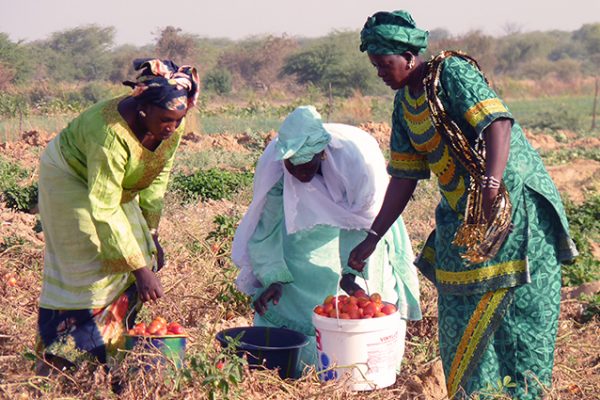
Cross views: 2020, a year marked by the Covid-19 crisis
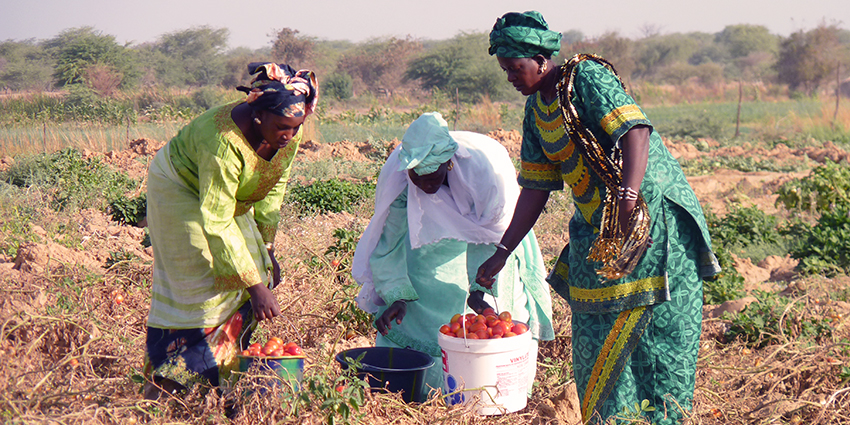
Jean-Marie Sander, Chairman of the Grameen Crédit Agricole Foundation until March 2021 and
Raphaël Appert, Chairman, Grameen Crédit Agricole Foundation, as of March 2021 and Vice-Chairman of Crédit Agricole SA and
Fédération Nationale du Crédit Agricole [National Federation of Crédit Agricole]
Just over 30 years ago, Michel Serres shared with us the need for a «Natural Contract» similar to the «Social Contract» which called for a reconciliation between man, nature and the living. 2020 was a terrible year for fragile economies.
The sound health of the Foundation, which has adapted to the economic effects of this crisis throughout the year, is not a mirror image of the dramas that have played out and are still playing out in the territories of our partners, where social shock absorbers are almost non-existent. Faced with the pandemic and its impact on daily life, family solidarity was often the rare relief very low-income populations could rely on.
Although its anthropocentric origin has yet to be demonstrated, this health crisis beckons us to become aware that we are part of nature, reminds us of our humility in the face of the natural order, and entrusts us with the task of not only developing but also of maintaining humanity.
The economic effects of the pandemic have affected the whole world but more particularly vulnerable populations: according to World Bank figures, 150 million people could be pushed rapidly into extreme poverty. For our part, we will avoid complacency about a probable ability to regain a semblance of economic growth, which we all know will not reach the most fragile populations quickly and evenly.
In this economic recovery, the Foundation will mobilise all its efforts in 2021, as there is still much to be done to try and change the mechanism that creates inequalities in the face of tragedy. We shall to that end have to rely on our professionalism, our determination and the values that guide our daily action.
It was with this ambition that we created the Foundation with Professor Yunus in 2008. It is still with this same ambition that we will continue to commit ourselves in the months to come.
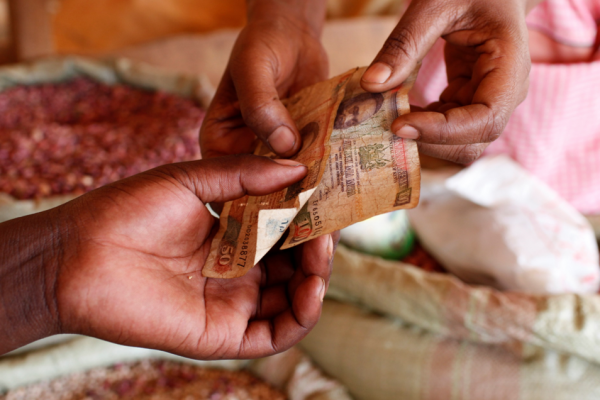
Grameen Crédit Agricole Foundation’s role to respond to the crisis
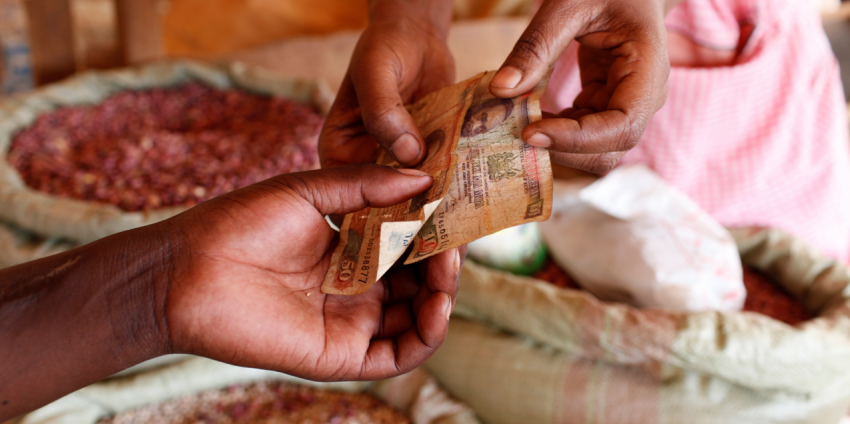
Soukeyna Ndiaye Bâ has been a Director of the Foundation’s Board since its creation. Engaged in the promotion of women entrepreneurs for more than 20 years, she is also Executive Director of INAFI (International Network of Alternative Financial Institutions) a global network of organisations that support microfinance programmes. Abdul Hai Khan is a Foundation’s Director and the Managing Director of Grameen Trust. He is also Board member of diferent microfinance and social business organisations in Australia, Bangladesh, China, France, India, Kosovo, Italy, USA and Yemen.
1/ Directors of the Foundation, you are also both international experts and microfinance practitioners. Can you share with us your analysis of the crisis and more particularly on the territories that you know well?
Soukeyna Ndiaye Bâ: In Africa, the current toll is close to 100,000 deaths and more than 3.7 million people infected, but these figures do not reflect the reality in the continent because there is no mass screening due to a lack of resources. Because of restrictions and border closures to contain the pandemic, the economic crisis has not spared the African continent. In this context, small-scale entrepreneurs, smallholder farmers and informal sector workers are directly afected. On the front line: women, both in rural and urban areas, who are very active in the informal sector. In Senegal, for example, about 94% of women entrepreneurs operate in the informal sector. In rural areas, in addition to the gravity of the economic situation, the already alarming health precariousness and dificulty in accessing healthcare may worsen.
Abdul Hai Khan: Current death toll in Asia is approximately 417,000, while the number of infected cases stands at more than 26 million. Schools in East Asia and the Pacific have been completely closed for more than 25 million children for almost an entire year. Covid-19 has slowed growth in East Asia and the Pacific (EAP) as it has significantly reduced economic activity, including tourism and trade. Growth in the AEP region, excluding China, is forecast to slow to 1.3% in 2020 from 4.7% in 2019. Millions of households have been afected by the loss of jobs and income (including remittances), while they still have to cover basic expenses or service debt. Consequently, the percentage of poor people has increased.
2/ How do microfinance and social business mitigate the efects of the economic crisis?
AHK: By improving access to essential services, microfinance institutions and social businesses strengthen the resilience of low-income populations, including small-scale entrepreneurs from the formal and informal sectors and smallholder farmers. They are therefore essential to protect the most vulnerable populations, severely afected by the efects of the economic and health crisis during the Covid-19 pandemic. To cope with this pandemic, many microfinance institutions have innovated and increased their support to their clients. For example, they have restructured loans to better support the most afected clients and accelerated their digital transformation, by introducing or improving cashless transactions through mobile banking channels and by creating virtual branches.
3/ What is the outlook for the years to come?
AHK: The magnitude of the damage that Covid-19 pandemic has brought in the world is huge. However, it ofers us a unique opportunity to improve, or even redefine, our economic structures by relaying on social and environmental consciousness. We should not call it a ‘recovery’ programme but a ‘reconstruction’ programme. In this comprehensive reconstruction plan, social entrepreneurship can play an essential role, as it can be a lever to transform unemployed people into entrepreneurs. Financial inclusion can help economic recovery go hand in hand with social development.
SB: The world is threatened with recession and food and social crisis. Building the «after Covid» world must therefore be multi-sectoral and focused on innovation. We must learn from the problems encountered during this crisis: better assess and anticipate risks, strengthen our socio-economic models and rethink our public policies to better protect the most vulnerable populations. Women entrepreneurs will have a key role to play in boosting the economy. Supporting female entrepreneurship will be a lever for women empowerment and the development of rural and urban economies. Digital will be a major tool to encourage entrepreneurship, modernise, develop and innovate.
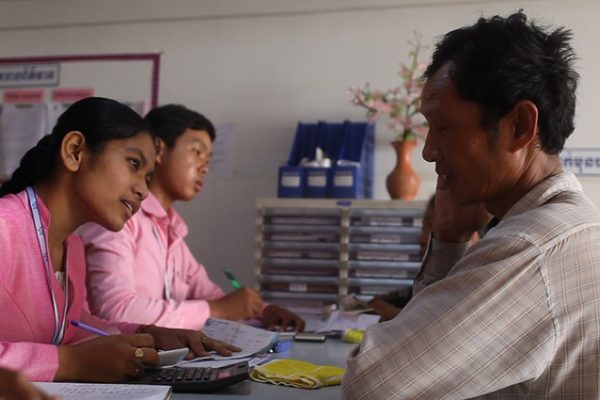
[Covid-19] The Grameen Crédit Agricole Foundation in 2020
Eric Campos, Grameen Crédit Agricole Foundation
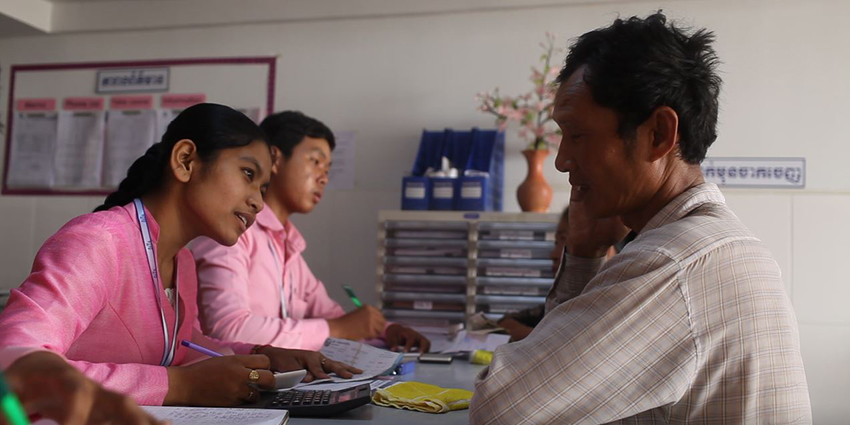
In 2020, the Foundation supported 80 microfinance institutions and social enterprises in 39 countries around the world. With the Covid-19 pandemic, the Foundation established a permanent dialogue with all the partner organisations and adapted its financial and technical support. The Foundation also coordinated with other key players of the inclusive finance sectors to develop commun solutions and better protect the microfinance institutions and their clients. Spotlight on an interview to Eric Campos, Managing Director of the Foundation, and some key figures of the activity in 2020.
The Covid-19 crisis has affected the microfinance sector around the world
Eric Campos: 2020 has been a very challenging year for the partners of the Grameen Crédit Agricole Foundation, microfinance institutions and social environmental impact enterprises. Very trying because the final beneficiaries, who are very dependent on sectors such as trade, agriculture and craft, had to deal with lockdown measures and therefore had the greatest difficulty in developing their income generating activities.
The Foundation has adapted itself to better support entrepreneurs in the field
EC: The Foundation’s teams focused on all actions that could allow these institutions, these enterprises to save time and adapt to the economic effects of this crisis. At the international level, we coordinated an agreement with international funders to avoid a liquidity crisis in the microfinance sector. At the Foundation level, we have granted a number of rollovers, we have supported institutions and enterprises by organising technical assistance missions to enable them to improve on risk management and on treasury management. We have been present throughout this year, alongside our long-standing partner institutions of the Foundation.
What prospects for 2021?
EC: In 2021, we are still in a crisis context. We are seeing some small signs of economic recovery in about a third of the countries in which the Foundation operates. In 2021, the Foundation will strengthen its technical assistance programme. We will continue to finance our partners, to support them, and we are cautious but confident in the economic recovery that we are already starting to see. Our commitment: help our partners get through this global crisis.

One Year On: What a Year of Surveys Tell Us About Covid-19 and microfinance
Maxime Borgogno, Grameen Crédit Agricole Foundation

Spotlight on the interview of Maxime Borgogno for FinDev. Maxime is Investment Manager for the Asia and Central Europe region at Grameen Crédit Agricole Foundation.
Since the beginning of the pandemic, Grameen Crédit Agricole Foundation has been monitoring how the microfinance sector is responding to the crisis caused by Covid-19. One year later, what have you learned?
Maxime Borgogno : While the immediate consequences microfinance institutions (MFIs) faced were an increase in portfolio at risk and a reduction in their portfolio, the operational crisis did not lead to a total failure of the sector as feared at the beginning. In fact, we have seen many MFIs proactively adapting to the new context: they took adequate management measures while maintaining a responsible approach with their clients. Only a small proportion of surveyed institutions had to lay off staff during the crisis, and the ones in the most affected countries have successfully transitioned to remote systems. Most MFIs implemented loan restructuring to relieve affected clients. Some, especially in Southeast Asia, provided customers with emergency kits (food, sanitary equipment, etc.). They even explored new opportunities such as digital channels for loan repayment to adapt to the situation.
In general, MFIs remain optimistic about the future, based on a good understanding of current challenges and the experience built in 2020. While the crisis is not over and there are still challenges ahead, the sector has the capacity to meet them.
What are some of the key challenges that lie ahead? Why do you think the sector has the capacity to overcome them?
MB: The situation remains unpredictable and depends on the country. A MFI may come to face significant operational constraints very quickly, which will limit its activity. The latest data shows that nearly 75% of MFIs are facing a higher risk portfolio than before the crisis. Therefore, they will have to find a balance between carefully managing this risk while continuing to disburse new loans to their clients. It is now clear that the Covid-19 crisis has disrupted certain sectors, companies’ structures and ways of doing business. MFIs will need to account for these major changes in their strategy for the coming years.
Over the past year, we have seen MFIs remain fully committed to their social mission. They have proven their resilience and capacity to adapt during an unprecedented crisis. With poverty levels increasing due to the crisis, the mission of microfinance is more relevant than ever.
How did you monitor the situation over the past year?
MB: We launched the first monthly survey in March 2020 with 75 MFIs we support. The objective was to gather first impressions on the situation as well as the potential impact on their activities and their clients. In June 2020, we joined forces with ADA and Inpulse to expand the reach of the survey to more than 100 MFIs, including in Latin America and the Caribbean, where the Foundation does not have a presence. Since September, we have moved towards a quarterly format to avoid overloading the institutions in a period of resumption of their activities. The next survey will be in March.
The survey results, as well as other articles related to the Covid-19 crisis, are available on The Covid-19 Observatory, a space created by the Foundation at the onset of the pandemic.
Microfinance institutions often don’t have the capacity to respond to surveys, especially when they have a major crisis to deal with. What helped you to continue gathering data among them?
MB: From the very beginning, we chose not to ask MFIs detailed financial information, but rather to gather their impressions and observations on the impact of the crisis. We deliberately kept the number of questions low and made sure they were as clear as possible. We also avoided requesting the same information they send us in their regular monthly reports.
We insist on a high level of communication with our partners, so we share the results of the surveys with them as soon as they are available and remain open to their feedback in this process. Comments from our respondents have helped us to adapt the wording of the questions and the content of the questionnaire. We believe that their involvement in the process is a key motivator for our partner MFIs to continue participating in the survey.
How do you see this crisis shaping the future of microfinance? Are you worried about the future of the sector?
MB: 2020 was a historic year that demonstrated the resilience of the microfinance sector. MFIs innovated and strengthened their services to protect their clients. At the same time, lenders and other stakeholders coordinated among themselves to adopt the most suitable measures to support MFIs. The last survey we conducted on the impact of the Covid-19 crisis reveals that most institutions expect their activity to grow in 2021, in terms of both portfolio volume and number of clients.
However, many of the most affected institutions will need support from their shareholders and lenders. As credit risk gradually translates into losses in 2021, the responsiveness of investors will be fundamental and is a forthcoming topic for the Foundation’s Covid-19 Observatory.
The crisis is not yet behind us, but we are encouraged for the future of the sector. Digital transformation, coordination between stakeholders and innovation will be essential to strengthen the resilience and impact of microfinance.
Source: FinDev
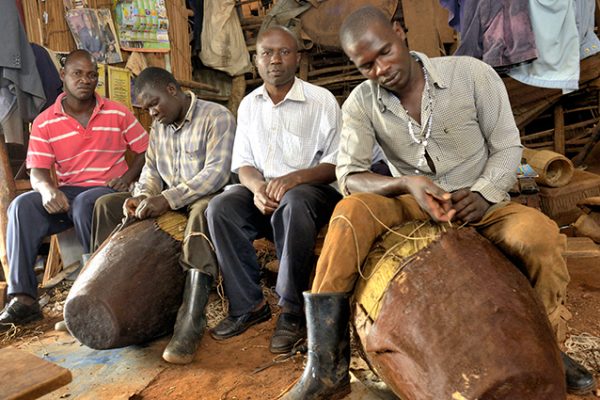
Ugafode and the financial inclusion for refugees
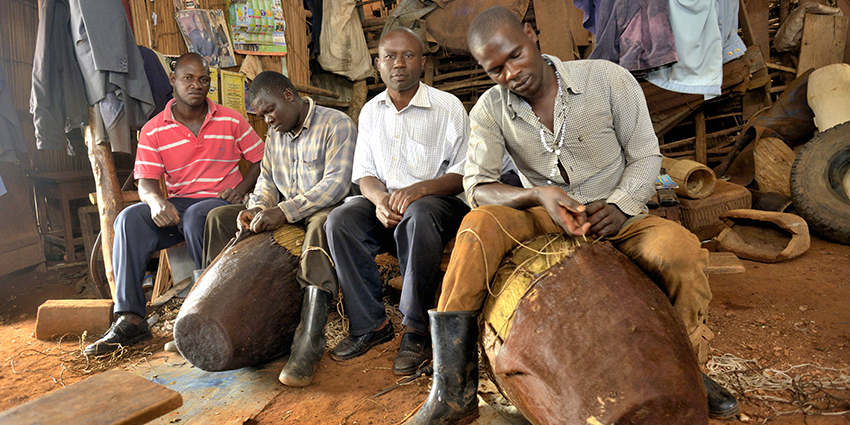
Supported by the Grameen Crédit Agricole Foundation since 2015, UGAFODE Microfinance Limited is a microfinance institution that offers inclusive financial and non-financial services to low income, but economically active populations in Uganda. UGAFODE is one of the three organisations supported by a programme launched by the Foundation, The Swedish International Development Cooperation Agency (Sida) and the UN Refugee Agency to support the financial inclusion of refugees. Thanks to the financial and technical support, UGAFODE opened a branch in Nakivale Refugee Settlement in Uganda. Spotlight on an interview to Shafi Nambobi, CEO of UGAFODE.
1. In a few words, what is UGAFODE Microfinance Limited?
UGAFODE Microfinance Limited began in 1994 as an NGO focused on group credit for women and has since transformed into a Microfinance deposit-taking institution regulated by Bank of Uganda. The institution specifically targets low income but economically active population in the country through 7 urban and 12 rural branches, serving over 110,000 savings customers and 8,000 loan clients. We offer a variety of financial services, which include savings, loans and money transfer services with a loan portfolio of €12.1 million and savings volume of €6 million.
2. UGAFODE received an innovative support from the Grameen Crédit Agricole Foundation, the Swedish International Development Cooperation Agency (Sida) and the UN Refugee Agency in 2019, when it was selected as beneficiary of a programme to support financial inclusion for refugees. Can you explain the initiative and the support UGAFODE received?
Most of the refugees have been discriminated against and denied credit facilities from financial institutions as they are viewed to be too risky, despite being engaged in agriculture plus retail trade and commerce. In March 2020, UGAFODE was the first financial services institution to set up a physical branch in a refugee settlement in Uganda thanks to the programme. Nakivale refugee settlement is the 8th largest in the world hosting over 134,000 refugees from 13 countries. The total project budget is €536,780 with €396,882 coming from Sida and €139,810 contributed by UGAFODE in three years. Furthermore, the Foundation also granted a new loan of €540,000 in July 2020, of which 50% will be used in the framework of the refugees programme, to lend to refugees and host populations.
3. What are the first outcomes of the project?
Clearly, the project has passed the proof-of-concept stage. Since the opening of the Nakivale’s branch, 505 loans totalling to €383,596 have been disbursed between 2nd March 2020 and 31st December 2020, mainly to support small and medium enterprises and agriculture individual loans. It is important to note that all this has been achieved under Covid-19 crisis. The Portfolio At Risk (PAR) is at 1.65% for 1 day and 0% for 30 days, which is remarkable and appreciated. Moreover, we have reach over 5,000 refugees with financial literacy messages and 2,534 clients have opened savings with a total of €65,112. A total of 5,301 refugees have received €776,345 through money transfer services from friends and relatives at the Nakivale branch in the nine months since the branch was opened. We currently employ 21 staff with 8 refugees at Nakivale plus 4 in the Call Centre in Kampala to manage customer complaints in the major refugee languages.
4. How did Covid-19 pandemic affect the project? What measures have been taken to face the crisis?
The project implementation and opening of the branch happened at the beginning of the Covid-19 crisis. Fortunately, as government rendered financial services as essential, the Nakivale branch was able to offer needed services to the settlement clients on a very positive note. UGAFODE has been able to adjust its policies and procedures to serve refugees within the regulation guidelines. We recruited refugee staff at the Call Centre to provide guidance and information to the clients. We also built a branch extension to provide sufficient space to ensure safety of both staff and customers. Furthermore, we granted rescheduling options to the clients with loans to support them in this period of crisis. The Grameen Crédit Agricole Foundation and KIVA supported us to face the crisis. The Foundation granted us flexible budget lines within core lines to cater for crisis’ uncertainties. The Branch operates under strict COVID 19 SOPs (Standard Operating Procedures) instituted by the Ministry of Health and Government. We will also be able to buy 3 more motorcycles to enable the branch staff reach out to more clients, easily and faster.
5. What are now the priorities of the project?
There are three priorities :
- Scale up financial literacy trainings to raise awareness of at least 8,800 refugees and 8,000 host communities in year 2 and 15,500 refugees and 14,000 host communities in the last year of the project.
- Conduct a customer survey to facilitate informed decisions and develop products tailored to refugees.
- Roll out the project model to other settlements. After Nakivale, the project is going to be replicated to other refugee settlements at the earliest. Initial feasibility studies have been conducted for Kyaka, Kyangwali and Rwamwanja refugee settlements.
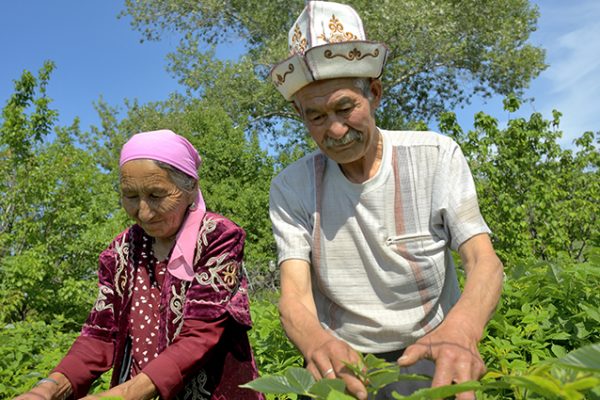
OXUS Kyrgyzstan and its six commandments for the Covid-19 crisis
Interview with Denis Khomyakov, CEO, OXUS Kyrgyzstan
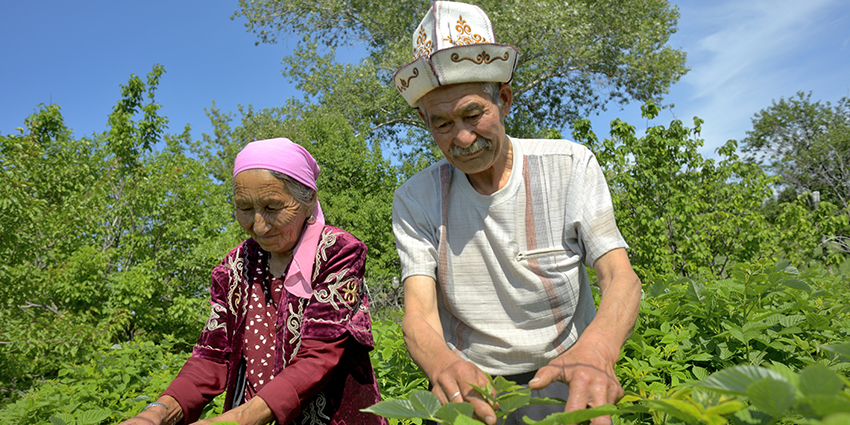
Since the beginning of the Covid-19 crisis, the Grameen Crédit Agricole Foundation has worked on several initiatives to better support the microfinance sector. OXUS Kyrgyzstan is one of the microfinance institutions that has benefited from the Foundation’s response to the crisis. Five questions to Denis Khomyakov, CEO of OXUS Kyrgyzstan (OKG)
____________________
The Covid-19 crisis has strongly influenced Kyrgyzstan’s economy and your organisation. What measures have you adopted to cope with it?
The crisis has hit the economy and the health system of Kyrgyzstan hard. With border closures and lockdowns, industry and agriculture declined, and transport services collapsed. Although new activities emerged (such as delivery services), Covid-19 affected the country’s economy and by extension our clients and business.
In this context, we were well prepared at OKG. As early as February, we first protected our staff with home-based work or short time working at 2/3 of the salary; which involved the digitalisation of our activities. In May, we adopted both remote and on-site work, thanks to the required anti-Covid measures foreseen in the Covid-19 Business Continuity Plan (BCP), which quickly became operational.
We always made sure to communicate well. To achieve this, we first set up a Covid-19 Committee consisting of members from different departments and myself to structure communication and define operational measures. Several actions were taken: we organised communication with agencies and clients, established loan restructuring and client support, and decided to negotiate with lenders to obtain a grace period on repayments. We also had regular exchanges with various stakeholders: the governance that guided and advised us, the lenders who have done coordinated actions to ensure the continuity of our activities, and the National Bank that provided us with clarifications on the restructuring and exemptions possibilities.
What was the Foundation’s support to strengthen OKG’s response?
The Covid-19 surveys carried out by the Foundation were well organised and always took place at the right time. The Covid-19 Observatory launched by the Foundation, where the results of the surveys and other useful articles are published, has been valuable to us in assessing our situation and position in the region. The Foundation also led OKG’s group of lenders to implement the coordinated restructuring measures and extensions; at the Foundation’s instigation, with regular monitoring by Julie Serret, a Foundation’s Investment Manager, we acted immediately to prepare for the worst-case scenario and agreed terms with the lenders all together.
Which were the main measures implemented by this group of lenders?
The group of lenders decided to extend all payments payable between May and December 2020 for 12 months. The lenders also simplified reporting by collecting information through a common document, which gave us more time to focus on other issues. They also provided us with tools to create a BCP, to restart the business while protecting staff. As a result, we did not really worry about the liquidity situation. We were able to pay our staff salaries and benefits immediately.
What lessons do you draw from this period for the evolution of microfinance?
Here are my six commandments:
- Anticipate. Every business should have a BCP for these kind of events. Having an IT disaster recovery plan is very useful – it helped us a lot in reacting to the crisis and keeping the system running.
- Take care of the staff; inform them of the situation and the measures decided.
- Make decisions. Do not be too late but think twice.
- Inform investors and lenders of the situation and provide forecasts (detailed, even if you do not know how things will develop) for the coming months.
- Contact your Board of Directors often. Its composition and experience will enable you to get through any type of crisis.
- Be digital. Digital channels are valuable for communicating with clients and staff. Covid-19 has pushed us to think and to be more digital.
What are the prospects for OKG in 2021?
The company continues its development and growth. We plan to open two new branches in rural areas and to serve low-income clients. We plan to introduce tablets to speed up loan disbursement, but also to collect less paper and be more environmentally friendly. We also aim at developing green loans to help combat air pollution and intensive energy use in Kyrgyzstan.
Other initiatives such as our work on customer loyalty and the project to support women entrepreneurs initiated in early 2020 have been slowed down by the health crisis. We will take them up again. We will remain a reliable company for our clients, with a zero-exclusion approach!

The will of microfinance institutions to maintain their activities during Covid-19 crisis

ADA, Inpulse and the Grameen Crédit Agricole Foundation have collaborated to monitor and analyse the effects of the Covid-19 crisis for their partner microfinance institutions worldwide. This monitoring was carried out regularly throughout the year 2020 in order to have a better vision of the situation’s evolution. Through this regular and in-depth analysis, we hope to contribute, at our level, to the construction of strategies and solutions tailored to the needs of our partners, as well as to the diffusion and exchange of information between the different players in the sector.
In summary
The results reported in this article come from the fifth survey jointly (1) conducted by ADA, Inpulse and the Grameen Crédit Agricole Foundation. Responses were collected in the second half of December from 74 microfinance institutions (MFIs) located in 42 countries in Eastern Europe and Central Asia (EAC-28%), Sub-Saharan Africa (SSA-26%), Latin America and the Caribbean (LAC-23%), South Asia (14%), and the Middle East and North Africa (MENA-9%) (2).
At the same time, the major constraint that remained was the difficulty in collecting loan repayments, which implied increasing the portfolio at risk. This last point is still valid at year-end, and three quarters of respondents still report an increase in RAP. In added to this is the deterioration of the epidemiological situation in the world in the fall of 2020, as evidenced by the responses gathered in December 2020. The epidemic containment measures taken according to local contexts may once again have consequences on the activities of MFIs and their clients, and a return to normalcy is not yet on the agenda.
However, these new complications and their implications are not new. Thus, they have limited impact on MFIs’ risk indicators. The stability of the increase in PAR, as well as in recovery levels, does not reflect a further major deterioration in MFIs’ financial situation. This relative balance also corresponds to the MFIs’ state of mind as they approach 2021. Despite an unstable context and all the obstacles it entails, the vast majority of our partners expect their activity to grow in the new year, in terms of both portfolio volume and the number of clients. This confidence, which was already evident in the surveys conducted over the summer, is a further sign of the resilience of these institutions.
1. MFIs are always operating in unstable and difficult conditions.
Our last survey, conducted in October, showed a great improvement in the operating environment for MFIs and a gradual recovery in activity in all regions of the world. However, in a large number of countries, even those that appeared to be managing the virus’ spread well, new, more restrictive measures to contain the epidemic were taken in the last quarter of 2020 in response to the new increase in cases. This deterioration is particularly confirmed by our partners in Europe and Asia, where MFIs in South and Central America, Southern Africa and North Africa are reporting an improvement in the situation.
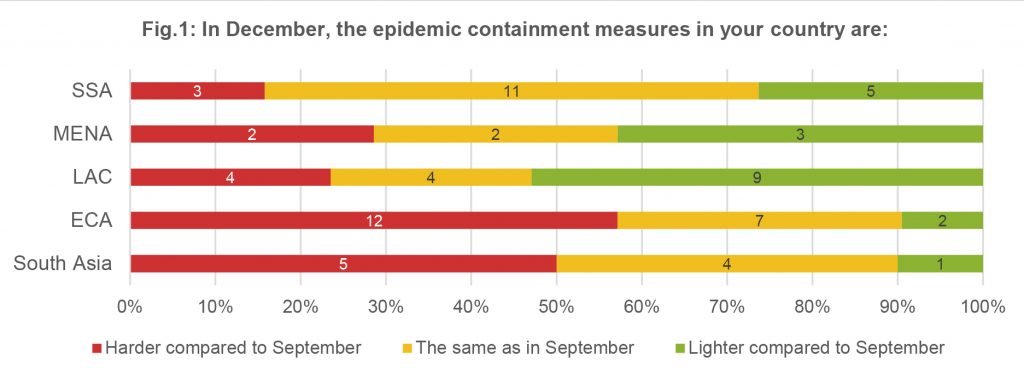
Comparing the responses of our 38 partners who participated in the October and December (3) surveys in the following paragraphs confirm the observation of a return of certain difficulties for MFIs, and are in line with the general results obtained at the end of the year.
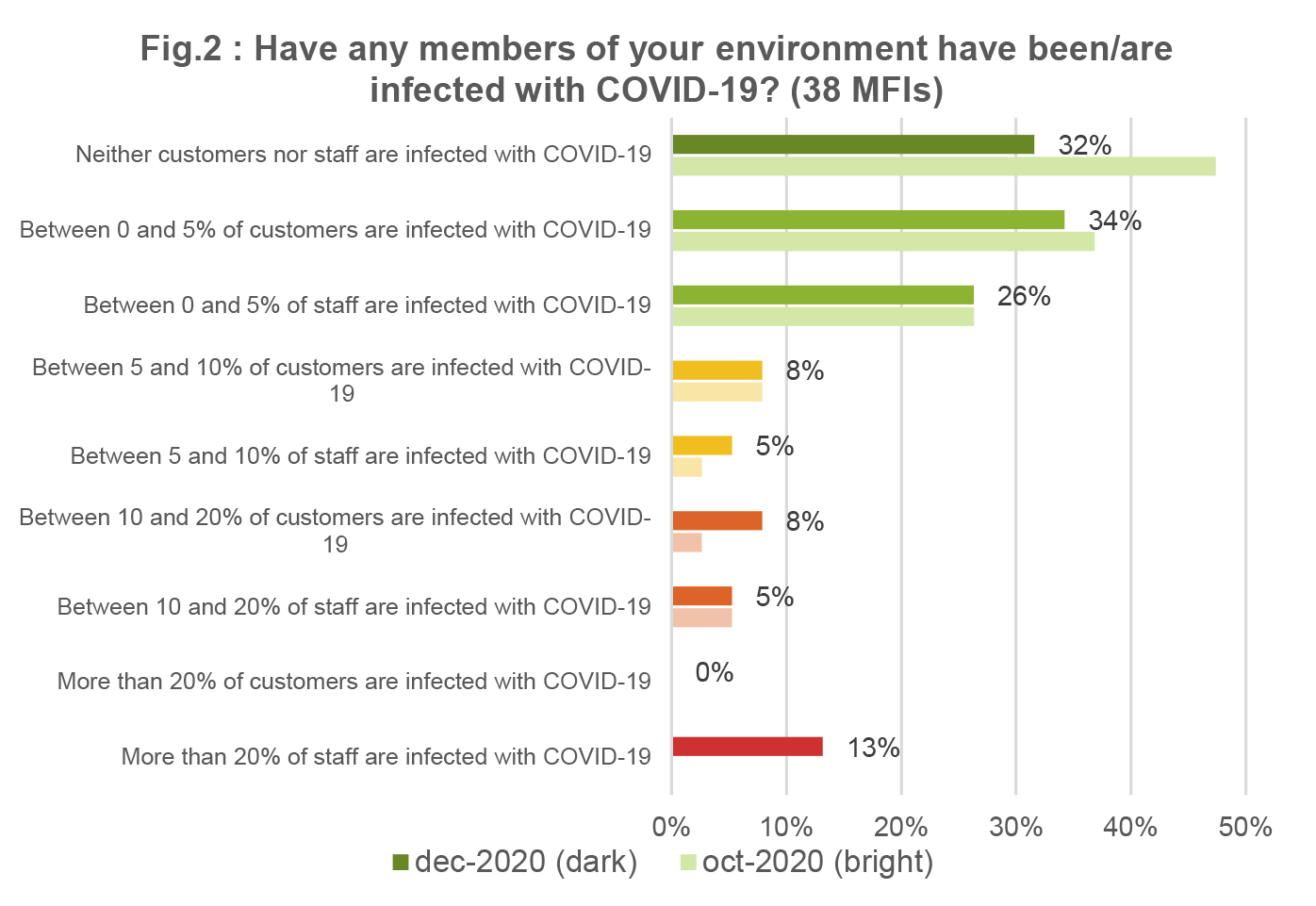 First, the virus continues to rapidly spread in some parts of the world, and MFIs are not exempt from it. Thus, we can note an increase in the proportion of MFIs reporting that clients and staff have been infected with Covid-19. This can be seen in the drop from 47% to 32% (17 to 12 MFIs) of MFIs whose clients and staff are not reached by Covid-19. In October, this category included two thirds of the MFIs in Sub-Saharan Africa (10/15) and the vast majority of those in South Asia (5/6). In December, the share of MFIs in Sub-Saharan Africa was almost stable (9/15), while those in Asia dropped to 50% (3/6). Finally, the category “more than 20% of staff were infected” rose from 0% to 13% (5 MFIs) over the period, with the vast majority in the Europe and Central Asia region (4 MFIs).
First, the virus continues to rapidly spread in some parts of the world, and MFIs are not exempt from it. Thus, we can note an increase in the proportion of MFIs reporting that clients and staff have been infected with Covid-19. This can be seen in the drop from 47% to 32% (17 to 12 MFIs) of MFIs whose clients and staff are not reached by Covid-19. In October, this category included two thirds of the MFIs in Sub-Saharan Africa (10/15) and the vast majority of those in South Asia (5/6). In December, the share of MFIs in Sub-Saharan Africa was almost stable (9/15), while those in Asia dropped to 50% (3/6). Finally, the category “more than 20% of staff were infected” rose from 0% to 13% (5 MFIs) over the period, with the vast majority in the Europe and Central Asia region (4 MFIs).
In terms of operational constraints, results are relatively stable between the two periods. The list of MFIs indicating that they no longer face operational constraints remains more or less the same (39%), and is concentrated in Central Asia and West Africa. It should be added that collecting loan repayments (42% of the sample) and disbursing new loans (32%) remain the two main difficulties encountered by MFIs.
Difficulty getting in touch with clients, both in branches and in the field, was considered a consequence of the crisis for only 16% (6 MFIs) of this sample in October, and this figure increased in December (24%, 9 MFIs). In detail, it should be noted that the location of MFIs that highlight this constraint has evolved over
the last two months. Thus, they were particularly located in Latin America and the Caribbean and East Africa in October. In December, this point was raised by MFIs in Southeast Asia (3/6), Eastern Europe (2/5) and West Africa (2/8). At the general level of the survey, 30% of the MFIs indicated that they were once again limited in their activities, despite a gradual recovery.
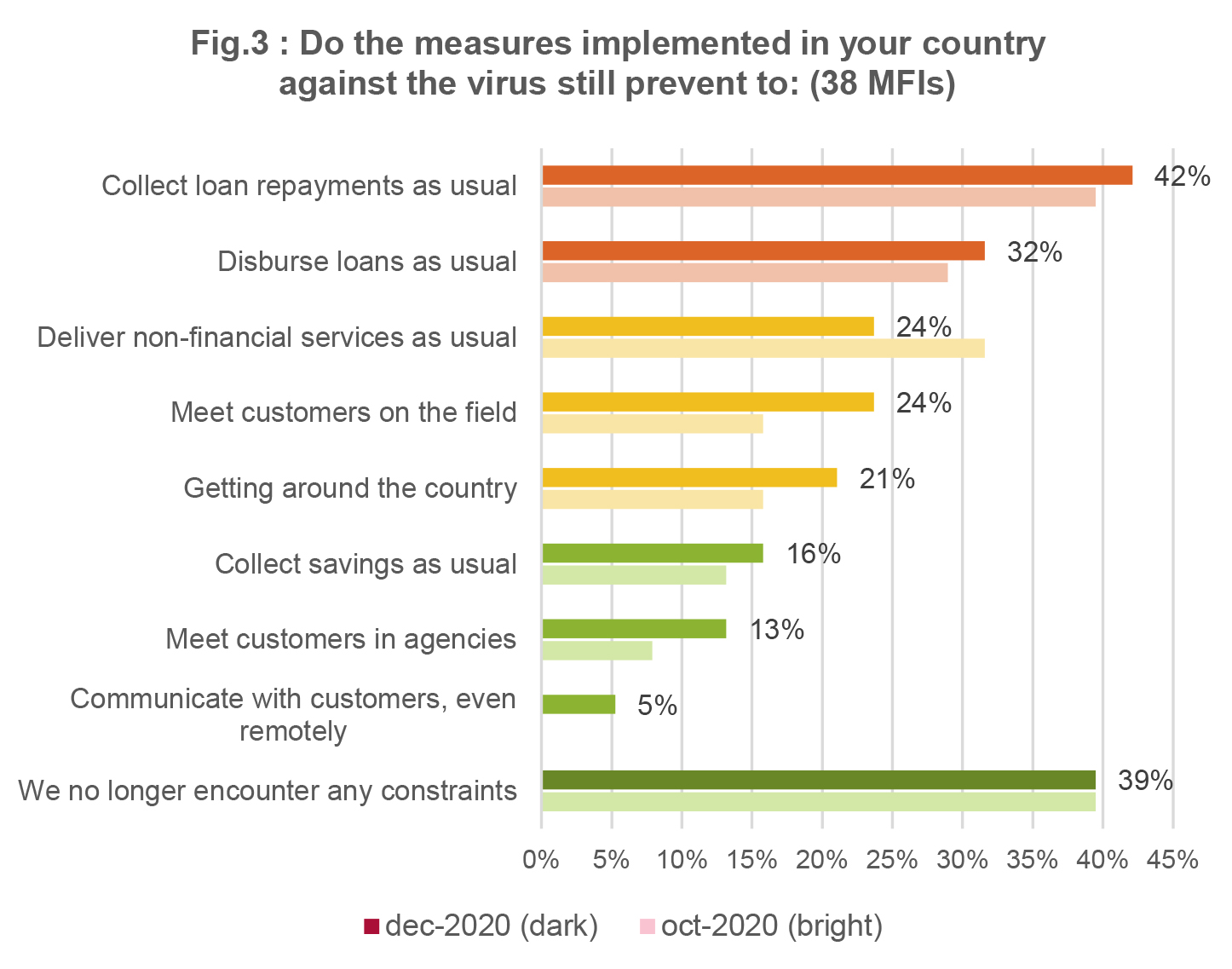
2. Therefore, customers remain exposed
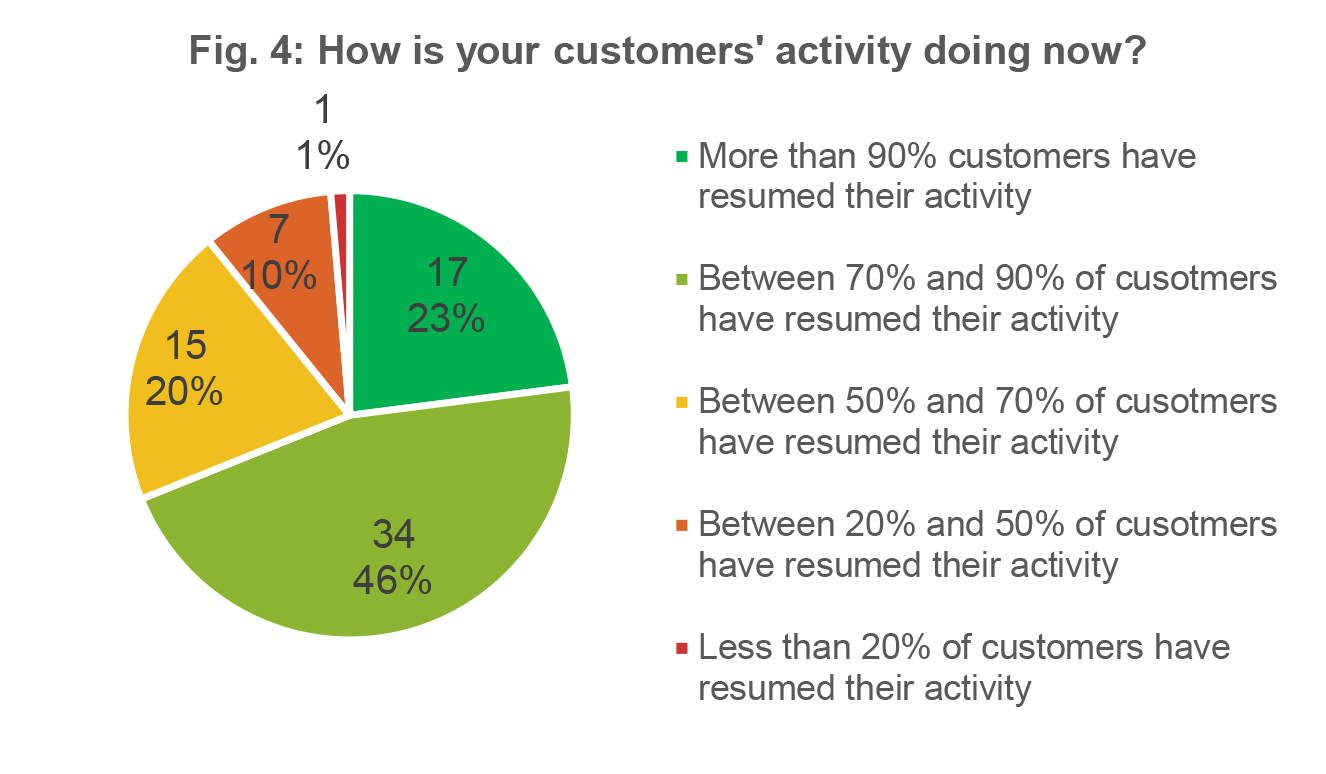 As the MFIs testify through these surveys, the uncertain and particularly unstable context also weighs heavily on MFI clients. Logically, the difficulty in collecting reimbursements for MFIs, for example, is closely linked to the difficulties encountered by the clients themselves. The activity of a large part of them has still not restarted or remains slowed down by the crisis context: our last survey highlighted in particular the tourism and trade sectors as the most affected sectors (4). In December 2020, the proportion of MFIs indicating that more than 90% of their clients have restarted their activity remains in the minority (23%, 17 MFIs). However, 46% (34 MFIs) of MFIs indicate that clients who have resumed their activity represent between 70% and 90% of their portfolio. Only 11% (8 MFIs) of respondents indicated that less than 50% of their clients are able to work again. There are, however, some regional disparities in these results: in South Asia, Europe and Central Asia, and Sub-Saharan Africa, at least 80% of respondents report that more than 70% of clients have returned to work. In the MENA and Latin America and the Caribbean regions, this share decreases to 43% and 41% respectively.
As the MFIs testify through these surveys, the uncertain and particularly unstable context also weighs heavily on MFI clients. Logically, the difficulty in collecting reimbursements for MFIs, for example, is closely linked to the difficulties encountered by the clients themselves. The activity of a large part of them has still not restarted or remains slowed down by the crisis context: our last survey highlighted in particular the tourism and trade sectors as the most affected sectors (4). In December 2020, the proportion of MFIs indicating that more than 90% of their clients have restarted their activity remains in the minority (23%, 17 MFIs). However, 46% (34 MFIs) of MFIs indicate that clients who have resumed their activity represent between 70% and 90% of their portfolio. Only 11% (8 MFIs) of respondents indicated that less than 50% of their clients are able to work again. There are, however, some regional disparities in these results: in South Asia, Europe and Central Asia, and Sub-Saharan Africa, at least 80% of respondents report that more than 70% of clients have returned to work. In the MENA and Latin America and the Caribbean regions, this share decreases to 43% and 41% respectively.
Our partners’ responses also make it possible to continue profiling the customers most affected by the crisis. First of all, it should be noted that a large proportion of the MFIs surveyed rule out the possibility that there is a category of clients that is more affected than the others, whether in terms of gender, location (urban or rural) or age. In detail, 42% (31 MFIs) of respondents believe that all of their clients are impacted identically, and 51% (38 MFIs) indicate that there is no significant difference in repayments based on 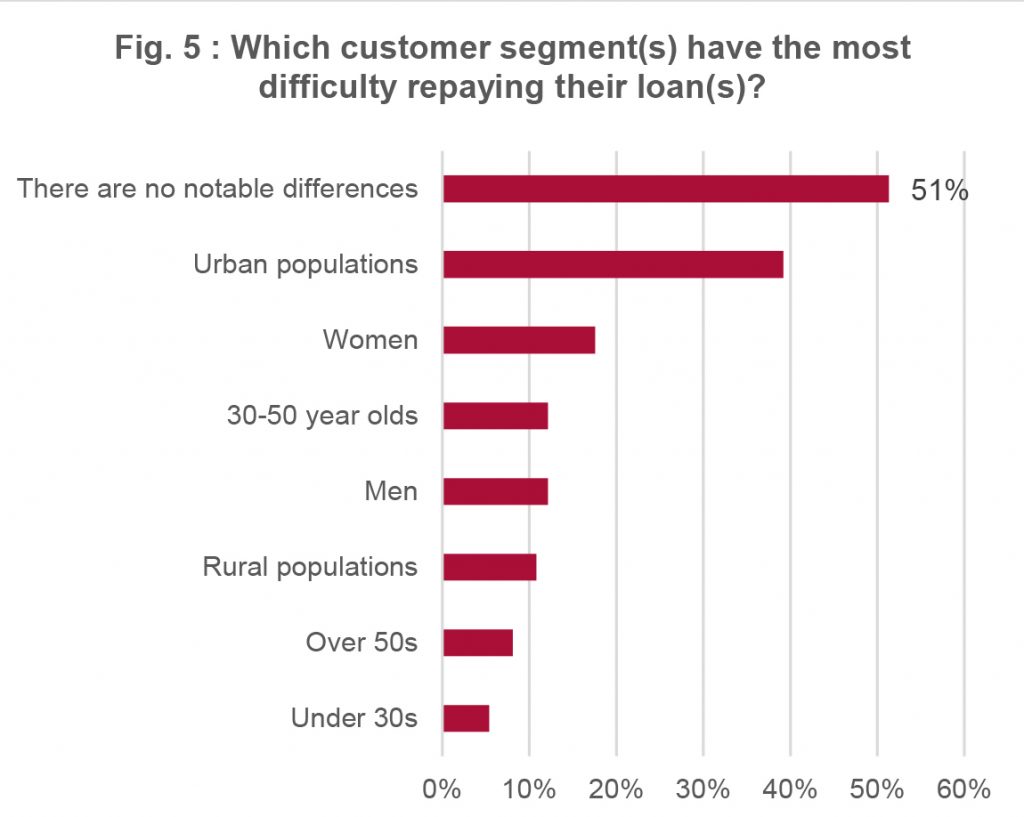 these criteria. Overall, the idea that there is a difference in exposure to the impact of the crisis according to age is also dismissed. While some MFIs say they see differences according to age categories (-30, 30-50, 50+), none of them stand out.
these criteria. Overall, the idea that there is a difference in exposure to the impact of the crisis according to age is also dismissed. While some MFIs say they see differences according to age categories (-30, 30-50, 50+), none of them stand out.
Among the MFIs that perceive a difference in the impact of the crisis on their clients (36 MFIs), one criterion stands out for the most part: 76% (27 MFIs) believe that the most impacted populations are urban populations. The same proportion claims that this difference is reflected in loan repayments. These responses confirm our previous results for the most affected sectors, which are definitely urban. The fact that the criterion of rurality is hardly mentioned goes in the same direction, and echoes the agricultural sector, revealed during the surveys by our partners as a sector less affected by the crisis linked to Covid-19 than the others, and towards which a certain number of MFIs imagined they wanted to move. Finally, a last characteristic is mentioned by MFIs reporting disparities in the impact of the crisis: 36% (13 MFIs) perceive that women are more affected than men and therefore by default may have more difficulty repaying their loans. It should be noted that a portion of the respondents serve only women clients, which logically makes them the most affected population in the sector.
3. Now well-identified challenges for MFIs
MFIs are now aware of activity levels that are still at half-mast or of the measures implemented by the local authorities to contain Covid-19. In addition, to which they are adapting. Thus, the financial difficulties mentioned by the MFIs are very stable from October to December 2020 and do not highlight any new trends. Two of the four most cited difficulties remain linked to the MFIs’ declining profitability, due to the increase in provisioning expenses (45% of the respondents, 33 MFIs) and the non-collection of interest (55%, 41 MFIs). These two points are closely linked to the most striking difficulty of the crisis for MFIs during this period: the increase in portfolio at risk (74%, 55 MFIs).
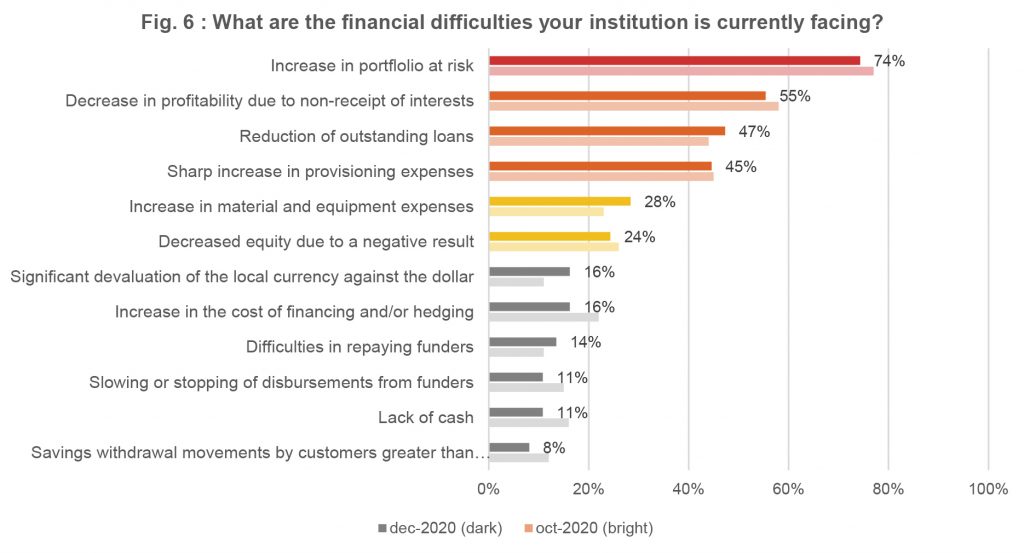
In December 2020, 74% (55 MFIs) of respondents indicated that more than 70% of clients were repaying their loans, and 37% reported client repayment levels above 90%. On the other hand, only 9% report that less than 50% of clients are able to repay their loans, which is in line with clients’ recovery levels. These levels are reflected in the level of portfolio at risk of MFIs: in December 2020, 47% of respondents (35 MFIs) indicated that PAR 30 had increased without doubling, 16% that it had doubled, and 12% that it had more than doubled.
Nevertheless, this risk configuration seems to have broadly stabilized in the last quarter of 2020, despite the additional constraints presented above (see Fig. 7). In the common sample for the October and December surveys, we still find a quarter of MFIs that are not affected by this increase in portfolio at risk. At the same time, there are no MFIs added to the list of MFIs whose PAR 30 has more than doubled. Transfers from one category to another over the October-December period are for the vast majority between a stable PAR and a PAR that increases without doubling. This indicates that the deteriorations in the local contexts previously presented would therefore not affect all clients, thus having only a moderate impact on the MFIs’ risk indicators.
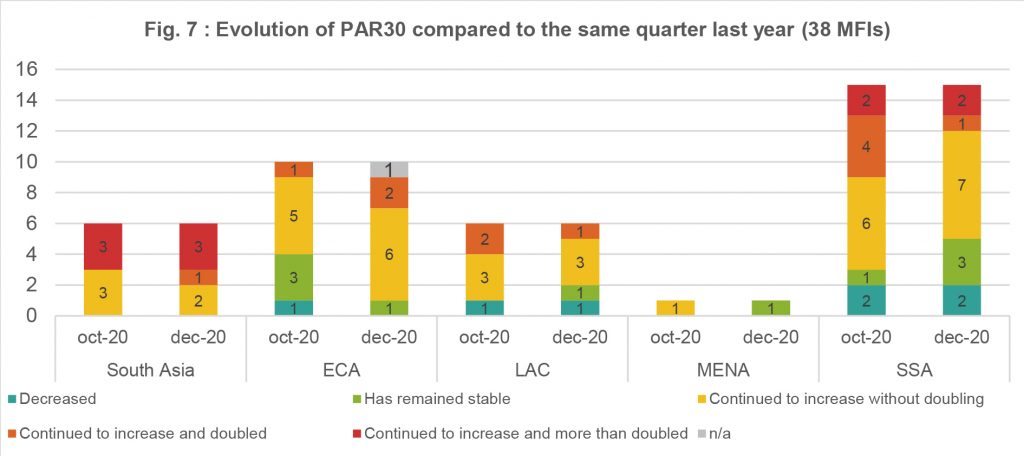
This stability coincides with the MFIs’ new objectives at the beginning of the new year. The crisis has disrupted their operations, and has inevitably had an impact on their projections. Thus, 58% of MFIs report having updated their business plans and growth objectives for the coming months and years. On the strength of these crisis gains and a better understanding of the context, the vast majority of MFIs still plan to continue to develop in 2021. Thus, 80% of those surveyed expect their portfolio volume to increase this year, while 15% expect it to stagnate and 5% expect it to decline. In addition, this portfolio increase should also be followed by an increase in the number of clients for 75% of the MFIs expecting growth in the new year. A new hopeful signal, therefore, but also a sign of ambition on the part of institutions determined to continue moving forward in 2021.
_______________________________________________________________________
(1) The first four surveys of ADA’s partners, Inpulse and the Grameen Agricole Foundation are available here : //www.gca-foundation.org/observatoire-covid-19/, //www.ada-microfinance.org/fr/crise-du-covid-19 and //www.in¬pulse.coop/news-and-media/
(2) The number of responding MFIs by region is the following: SSA 19 MFIs; LAC 17 MFIs; EAC 21 MFIs, South Asia 10 MFIs; MENA: 7 MFIs
(3) The sample size is 38 MFIs: 6 in South Asia, 10 in Eastern Europe and Central Asia, 6 in Latin America and the Caribbean, 1 in MENA, and 15 in Sub-Saharan Africa.
(4) //www.gca-foundation.org/espace-medias/#covid-19-une-reprise-des-imf-progressive-au-rythme-de-celle-de-leurs-clients; //www.ada-microfinance.org/fr/crise-du-covid-19/fiche-crise-covid-19/2020/11/4e-vague-enquetes
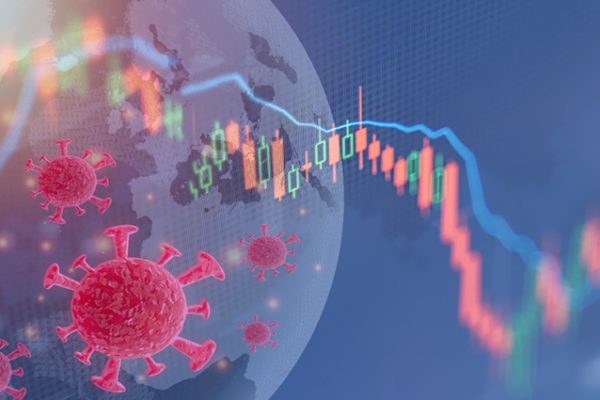
[INTERVIEW] The Foundation’s actions to face the Covid-19 crisis
Hélène Keraudren Baube & Edouard Sers, Grameen Crédit Agricole Foundation

To overcome the effects of this unprecedented health and economic crisis, the Foundation has had to innovate, adapt and coordinate with other key players in the sector of inclusive finance and social impact entrepreneurship. Transversal work that involves the whole Foundation team. To find out more, spotlight on the testimonials of two Foundation experts, Hélène Keraudren-Baube, Administrative and Financial Director, and Edouard Sers, Risk, Compliance and Social Performance Director.
1.How has the Covid-19 crisis impacted the internal organisation of the Foundation and that of supported organisations?
Hélène: We used telework overnight, but since it was already a possible modality at the Foundation, the transition was very fluid. In addition to providing the equipment for teleworking, we have also adapted the schedules to take into account the context of confinement with children at home. We have had a very special year, with no field mission for the team based in France since February, as usually investment officers all go on field missions several times a year. The Foundation’s Board of Directors conducted regular updates to monitor the situation and determine the best measures to support the teams and organisations funded. In addition, we spoke on a more regular basis with our governance to keep them informed of developments in the situation and activity.
2. What responses did the Foundation give to deal with it?
Edouard: The Foundation’s first response was to establish a rapid and permanent dialogue with the organisations it supports to understand the effects of the crisis, the measures implemented and their needs. The investment manager teams have remained in very close contact with all the organisations we support, and we have conducted regular surveys with them to understand the impacts of the crisis in the various countries of intervention. In addition, we launched the Covid-19 Observatory in which we regularly publish articles in order to share our analyses and inform stakeholders of developments in the situation. At the same time, we led an international coordination of lenders and inclusive finance players to act in close cooperation, to protect microfinance institutions and their clients and prevent any liquidity shock that would have destabilised the sector.
Hélène: We have adapted our monitoring and analysis tools and our requests for information, particularly with regard to business continuity plans and short-term cash flow plans. On the financial front, we have granted deadline extensions to around 30 Foundation partner organisations, mainly microfinance institutions. These extensions, from 6 to 12 months according to the different cases, took the form of amendments to loan contracts, and revised deadlines. This volume of postponement requests is completely unprecedented and has “stressed” our liquidity. We have refined our projection and monitoring tools to track the financial impact for the Foundation.
3. Regarding the international coalition, what are the first results?
Edouard: Six months after the signing of the Commitment, along with all the signatories, we drafted a joint publication presenting the status of implementation of 10 principles of the Commitment. Among the conclusions of the publication, we can highlight the strong coordination between international funders to agree in terms of extension of deadlines, avoiding a liquidity crisis in the microfinance sector. We have also made progress in the area of technical assistance, including webinars and joint field surveys with end customers. Finally, we have encouraged the coordinated collection of information on staff management and client monitoring of microfinance institutions and are promoting initiatives to strengthen the protection of clients and staff. In 2021, we will pursue our efforts to support the gradual recovery of microfinance institutions supported with technical assistance, appropriate financing and regular exchanges between the various players in the sector.
4. In relation to the Foundation’s donors, what common actions have been taken?
Hélène: We very quickly kept our funders informed of developments, with detailed presentations. Since the strat of the crisis, we understood that the main impact in 2020, for the Foundation, would be on our liquidity management. The requests for extensions from our partners weigh on the Foundation’s cash flow, and we wanted to preserve our ability to support our partners and avoid a liquidity crisis at all costs. To do so, we have asked for extensions of delays from our funders, and envisaged new “special Covid-19” financing lines to support the resumption of the activity of the microfinance institutions that we support.
5. Finally, what are the prospects for 2021? What will the Foundation’s priorities be?
Hélène: After a year 2020 marked by an operating result supported by the growth of the portfolio in previous years and substantial savings in 2020, particularly on travel costs, the year 2021 will be severely impacted by the contraction of the loan portfolio of the Foundation, following the crisis. The Foundation’s activity should continue its gradual and cautious recovery that began in recent months.We believe that the first semester will still be strongly constrained by the pandemic and its consequences, and hope to be able to resume our trips in the field, as close as possible to our partners, beggining from the second half of ther year. It will probably take another year for the Foundation to return to the level of activity it had before the crisis.
Edouard: A large part of the organisations supported have been able to cope with the crisis and are eligible for the funding offered by the Foundation according to standard risk criteria. On the other hand, a significant portion of them still carry a significant risk inherited from 2020 in their balance sheets. It is crucial that we continue to strengthen our support system to offer solutions adapted to the different levels of risk, combining new financing, technical assistance, deadline extension or, more exceptionally, debt restructuring.
At the sector level, lenders coordinated in 2020 in order to avoid a liquidity crisis and we will continue on this path in 2021. This year will also be crucial for investors to support microfinance institutions in accordance with their shareholder responsibility. Finally, we will continue to promote initiatives to protect the clients and staff of microfinance institutions in these times of crisis. For example, we actively participate in the Social Performance Task Force (SPTF) working group to define new certification criteria relating to customer protection in the sector. A permanent dialogue with our partners and coordinated actions will be key factors for the success of our commitments.
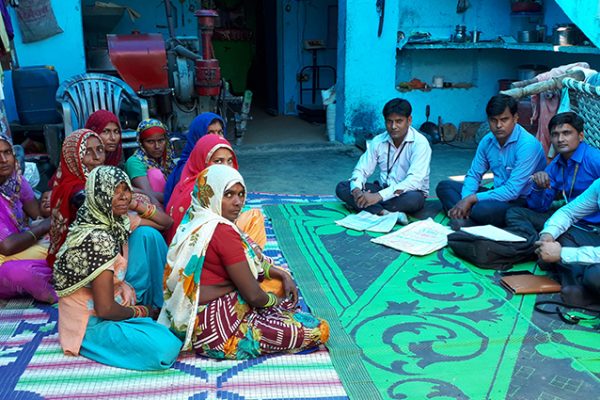
Microfinance In India: The Story of Resilience
By Devesh Sachdev, CEO, Fusion

The microfinance model of providing small collateral free loans to the ‘bottom of pyramid’ clients hitherto overlooked by the formal sector, has established itself as an effective & sustainable model for financial inclusion. Financial inclusion has rightfully been the key focus area for policy makers in the last few decades given the sheer size of our population that remained unserved and underserved. It needs no complex analysis to know that if India as a country has to improve its per capita income and graduate people above the poverty line – then access to finance has to be the key.
Despite policy push through the mainstream banking system, few factors acted as impediments to this critical national objective of financial inclusion. First and foremost being the fact that our formal Banking system largely designed its policies and reach (be it brick and mortar or digital) to cater to the urban/semi-urban population with established track record/income and collateral that fit into their defined Risk/Reward matrix as an Asset Class. Secondly, the ‘cost of delivery’ for bite size transactions in BOP market became a dampener for the Banks. Lack of financial literacy also acted as a constraint.
The microfinance model of providing small collateral free loans to the ‘bottom of pyramid’ clients hitherto overlooked by the formal sector, has established itself as an effective & sustainable model for financial inclusion. It was conceptualized to transparently deliver financial services and products at the doorstep of these very customers in a very simple to understand manner. The concept of Joint Liability leveraging social capital combined with doorstep delivery has helped microfinance gain trust & acceptability.
The Microfinance ‘journey’ of the last decade has run on two broad themes. On one side, it has weathered serious setbacks like the one of 2010 Andhra crisis, 2016 Demonetization crisis, the NBFC liquidity and credibility crisis and is currently battling the Covid-19 global pandemic. All these events created a perception in the minds of stakeholders that microfinance per se is a risky asset class because unfortunately for the sector – it has been impacted by such unforeseen events once every 3-4 years.
However, there is another side to the sector which is its brighter side:
- Today, the sector serves around 6 crore unique customers with a combined portfolio size of Rs 2,31,000 Crore across 620 districts in 28 states and 8 UTs. This makes it the 2nd largest sector after Mortgages. However, what has been even more commendable is that the sector has grown @30% CAGR in the last 3 years vs the overall Retail Sector’s 17% CAGR
- Another highlight of the Microfinance sector has been delivering financial products and services via a prudent amalgamation of ‘Touch and Tech’ at the lowest cost amongst all its global peers. The sector leverages advances in technology to constantly deliver greater transparency, data security and privacy and affordability for its rural customers at their doorstep.
- With both reach and operational effectiveness, Microfinance today is a sustainable business model, calibrated to leverage its network to deliver other goods and services to the rural masses contributing to India’s phenomenal growth story
- The sector also generates significant employment opportunities not only by hiring from the hinterland but also enabling its customers provide employment opportunities to others via financial support extended.
The sector has demonstrated remarkable resilience across the last decade and this has been made possible due to some key contributory factors:
- The ‘inherent’ need for such a model in aspirational India where a large unserved /underserved population still needs to be brought onto the financial bandwagon, ensured that Microfinance remained a ‘preferred’ vehicle for both the policy planners and the practitioners across the years
- The phenomenal support and conducive policy framework provided by the RBI which has been a catalyst in furthering Microfinance’s mission of financial inclusion. The sector has been accorded a special category under the larger NBFC category of RBI – lending it a distinct identity and strong credibility by having country’s first RBI recognised Self-Regulatory Organisation.
- The functioning of MFIN (the sector association) as an SRO since 2010 has enabled the sector to build its growth on strong pillars. Key pillars of MFIN’s work have been customer protection, industry code of conduct and policy advocacy, all of which contribute towards building of a Responsible Finance ecosystem.
- Microfinance being a high touch model, it has ensured highest degree of customer centricity and familiarity. Response time in crisis situations is much quicker and the resolutions proposed are very focused. This aspect helped the sector tide over the challenges brought about by Demonetization in 2016 but more recently this model has proven its resilience and sustainability in the ongoing Covid 19 crisis. The frontline soldiers ensured that the wheels of financing kept moving when the customers needed them the most during pre and post lockdown periods. Operating platforms were quickly modified to work on remote basis delivering loan services digitally Field processes were altered to incorporate all health and hygiene guidelines.
The strong bond with customers stood the test of time and brought about a high degree of mutual understanding and cooperation. Most of the financial pundits were proven wrong when the microfinance portfolio delivered better than expected portfolio metrics post Covid and RBI mandated moratorium period.
Today, the Microfinance Sector is partnering with the government to roll out various social schemes be it Shishu loans under Mudra or Pradhan Mantri Svanidhi scheme. The importance of the sector has been recognised by PM in his United Nations General Assembly speech by terming it as instrumental in furthering women entrepreneurship.
As they say “It’s not the number of punches that you land that make you a winner, it’s the fact that you still get up strong after taking a lot of punches and emerge a winner” and this is an apt description of a ‘Resilient’ Microfinance Sector in India thus far ……but the journey has just begun!!
__________________________________________________________
Source: BW Businessworld

COVID-19: a gradual recovery of MFIs in sync with their clients’ recovery

ADA, Inpulse and the Grameen Crédit Agricole Foundation have joined forces to monitor and analyze the effects of the Covid-19 crisis on their partner microfinance institutions around the world. This monitoring is done on a regular basis and will be carried out throughout 2020 in order to obtain better insights of developments. We hope this regular and in-depth analysis will contribute to building strategies and solutions adapted to the needs of our partners, and also to the dissemination and sharing of information among the various players in the industry.
In Summary
The results presented in this article are drawn from the fourth survey [1] in a joint series by ADA and the Grameen Credit Agricole Foundation, Inpulse having chosen to join the initiative one time out of two. Responses were collected between October 1st and October 20th from 73 microfinance institutions (MFIs) in 38 countries in Sub-Saharan Africa (SSA-37%), Latin America and the Caribbean (LAC-25%), Eastern Europe and Central Asia (ECA-18%), Asia (15%) and Middle East North Africa (MENA-4%) [2].
Given that previous surveys had revealed that the main financial difficulty for MFIs was the increase in their Portfolio at Risk (PAR), the new survey took a closer look at how MFI clients and their businesses were doing as this is what MFIs mainly depend on. Above all, the results of this survey confirm the gradual resumption of MFI activity, along with a reduction in most of the operational constraints initially encountered. The major remaining constraint has to do with loan recovery which explains the increase in PAR as the main financial difficulty for MFIs.
This difficulty in loan recovery may be due to external constraints, such as mobility or moratoria imposed by authorities, or to difficulties encountered by the clients themselves whose activities have not yet restarted or are slowed down by the impact of the crisis. Indeed, even if the peak of the health crisis has passed and it has affected to a lesser extent regions such as sub-Saharan Africa or South-East Asia, thus allowing a number of business sectors to restart, it is all too soon to expect a return to normal. Especially, the restrictive measures and the overall economic situation have negatively impacted — and still do — activities in a certain number of industries, thus restricting the sources of income of the populations. Consequently, this affects MFIs and their financial situation which is why it seems crucial to monitor closely how the crisis is experienced by their clients in order to be responsive in adapting to their needs by offering solutions allowing everyone — clients and MFIs alike — to survive this crisis.
1. THE RECOVERY OF MFIS IS STILL CONSTRAINED BY THE DIFFICULTY IN COLLECTING LOANS
The responses collected during the month of October show that most MFIs are gradually resuming their activities (Fig. 1). Only those of some MFIs in Myanmar remain very limited by the constraints represented by containment measures currently in place in the country, as are the activities of a minority of MFIs in sub-Saharan Africa (one MFI in Mali and one in Malawi). In Europe and Central Asia, the share of MFIs having achieved their normal activity level is most significant.
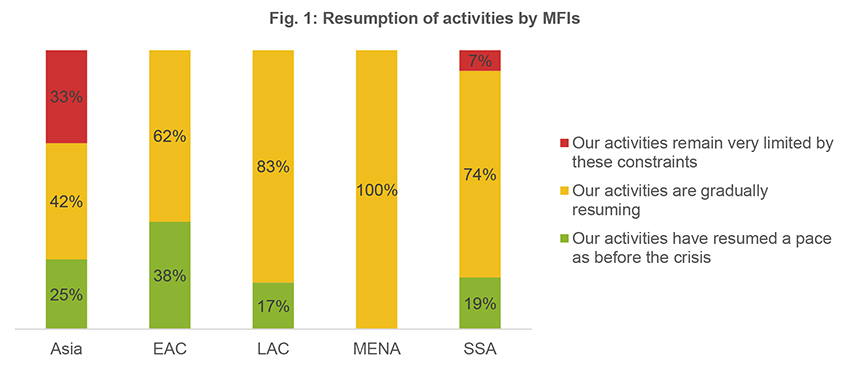
One of the constraints being encountered by MFIs that previous surveys have revealed was that part of their staff and client base were affected by Covid-19. Hence, we focused on the prevalence of the Covid-19 disease among staff and clients. Fig. 2 and 3).
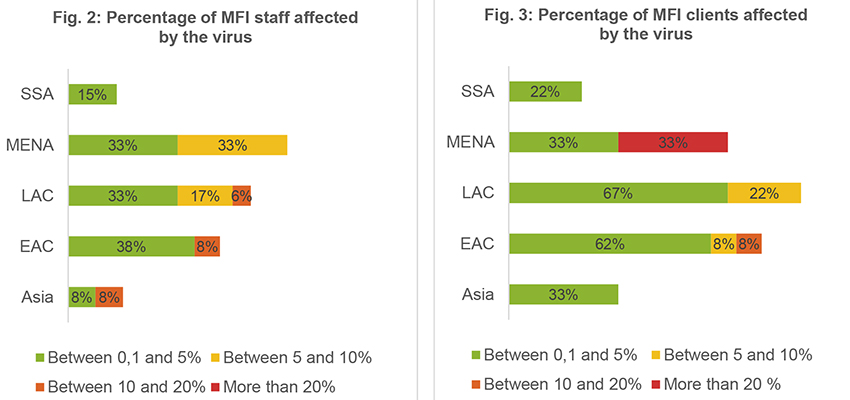
The situation is mixed in this respect: The Sub-Saharan Africa region appears as the least affected with just a small proportion of MFIs reporting that their staff (15%) or their clients (22%) are affected. Moreover, this proportion remains very small (between 0.1 and 5%) with 70% of the region’s MFIs reporting that neither their clients nor their staff have been affected by the virus. On the other hand, the Latin America and the Caribbean region is the most affected, followed by Europe and Central Asia with a larger share of MFIs concerned by the virus (just 11% of MFIs in the LAC region reporting that neither their staff or clients were affected), and it shows a larger prevalence rate for some of those MFIs [3]. Nevertheless, even if the health situation is more problematic in those regions, it still remains for the time being a relatively minor constraint for MFIs.
Moreover, on a global scale a relatively important proportion of MFIs report that they do not encounter any constraints. (Fig.4), mainly in the Europe and Central Asia regions (62%), while those facing some constraints are fewer with every survey, thus showing a gradual recovery.
The major remaining constraint (32% of MFIs in the sample) is about the difficulty in collecting loan repayments. This implies an increase in the portfolio at risk which is the main financial difficulty encountered by MFIs everywhere. It is reported as such by 77% of MFIs while other difficulties show a diminishing pattern in every survey.
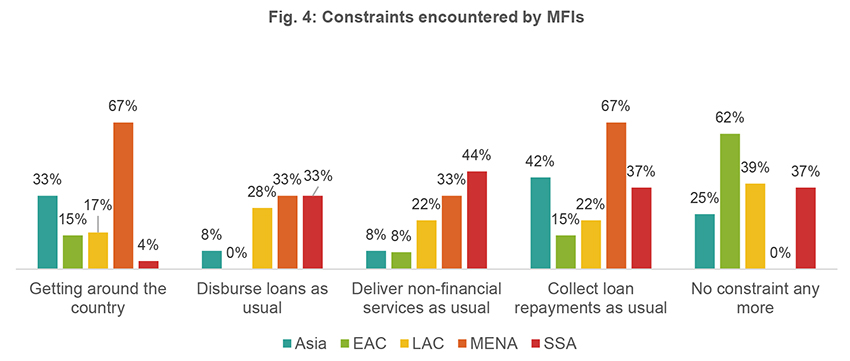
This difficulty or impossibility of collecting loan repayments can be explained by mobility constraints, mainly in countries or internal regions where containment measures are still in place, but also by the implementation of moratoriums – be they initiated by authorities or by the MFIs themselves if the clients needed them. Indeed, these moratoriums concerned the majority (84%) of MFIs surveyed in the sample (Fig. 5), and they are still in place for almost a half of MFI clients (48%) in total. Asia is the region where this situation is more frequent (83% of MFIs included in the sample).
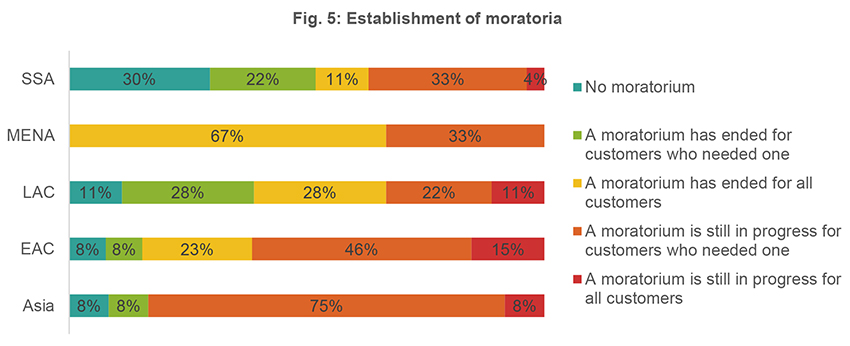
Among clients having benefited from a moratorium, those repaying normally their loans once it ended are a minority (Fig. 6). The majority of MFIs (86% of the sample) report that some or all of the clients needed a new moratorium, or even ended up in the portfolio at risk with 39% of MFIs in the sample affected by the latter situation. In Europe and Central Asia, and in Sub-Saharan Africa, more than half of MFIs report a move to their portfolio at risk of part of their clients having benefited from moratoria.
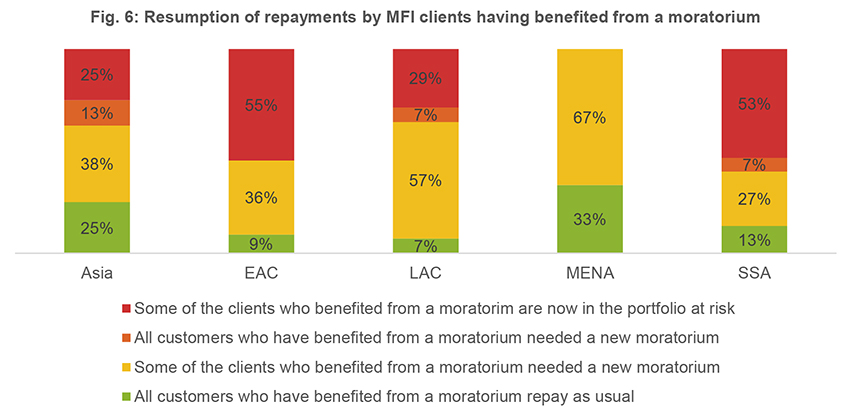
Nevertheless, globally speaking, the majority of MFIs in every region report that at least 70% of clients repay their loans. (Fig. 7). In South and Central Asia and Europe, more than 80% of respondents show repayment levels above 70%. On the other hand, the situation is not as good in Latin America and Caribbean and Sub-Saharan Africa regions: 34% and 45% of MFIs respectively with less than 70% of clients repaying their loans, and 17% and 15% where this proportion is less than 50%.
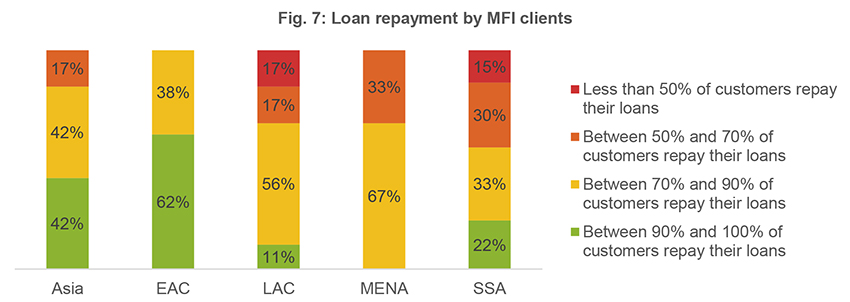
2. THE RECOVERY OF MFI CLIENTS IS FACING CONSTRAINTS
These repayment levels, being both volatile and lower than the pre-crisis normal, can be explained partially by the fact that not all customers are still able to resume their activities: Once again, excepting the Europe and Central Asia regions, only a minority of MFIs report that 90% or more of their clients have resumed their activity. However, for a majority of MFIs in the sample (54% in total), between 50 and 90% of clients have resumed their activity. The overall trend therefore points towards gradual recovery.
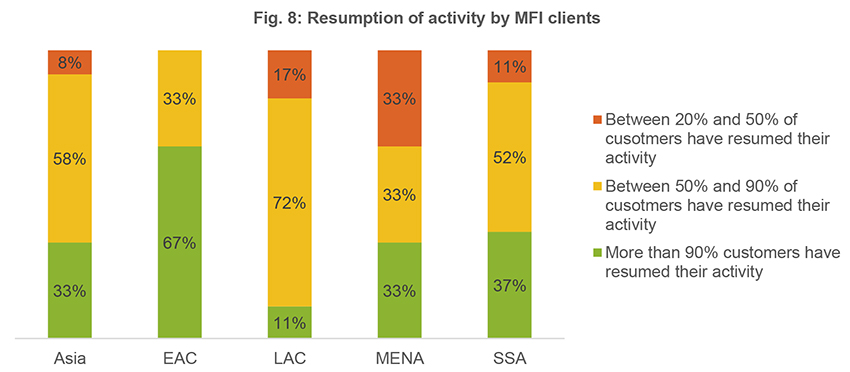
However, even if customers do resume their activities, some sectors are more affected by the crisis than others. The business activity most often mentioned as being most affected is tourism in regions other than sub-Saharan Africa, where it is retail (reported by 48% of MFIs in the region). The services sector is second in most regions except in Asia where the production and crafts sector is more affected. On the other hand, agriculture is reported only once. Overall, the agriculture sector appears to have been less affected than others by the Covid-19 crisis, as our previous work already showed, where a number of MFIs stated that they wanted to focus more on agriculture as it was less affected by the crisis.
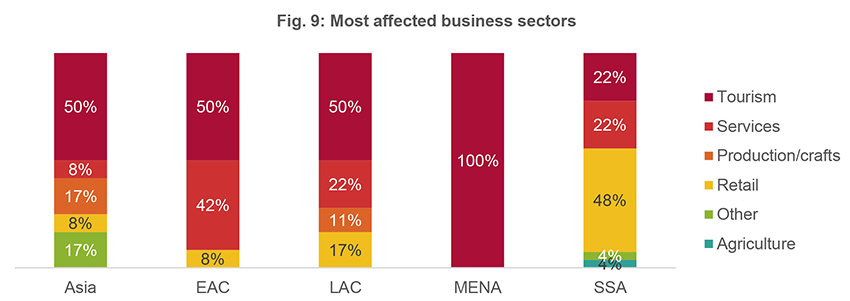
When looking at the constraints faced by customers, by sector, it appears that these constraints are specific to each of them (Fig. 10). Regarding the tourism industry, it is the decrease in the number of clients of entrepreneurs working in it that is the main source of difficulty, followed closely by the loss of employment, mentioned by 60% of MFIs who identified tourism as the most affected sector. On the other hand, in other sectors, the loss of jobs by clients does not appear to be among the main constraints identified. The decrease in the number of customers remains one of the major constraints, for the retail sector as well as for services or production and crafts. The same result is found in other surveys directly targeting MFI customers, such as those using the tool developed by SPTF where the reduction in demand is identified as the main reason for the decline in revenues [4]. Finally, the lack of business opportunities is the first constraint for the retail sector (reported by 72% of MFIs identifying this sector as being the most affected), while the difficulty in producing or offering products is typical of the production and crafts sector.
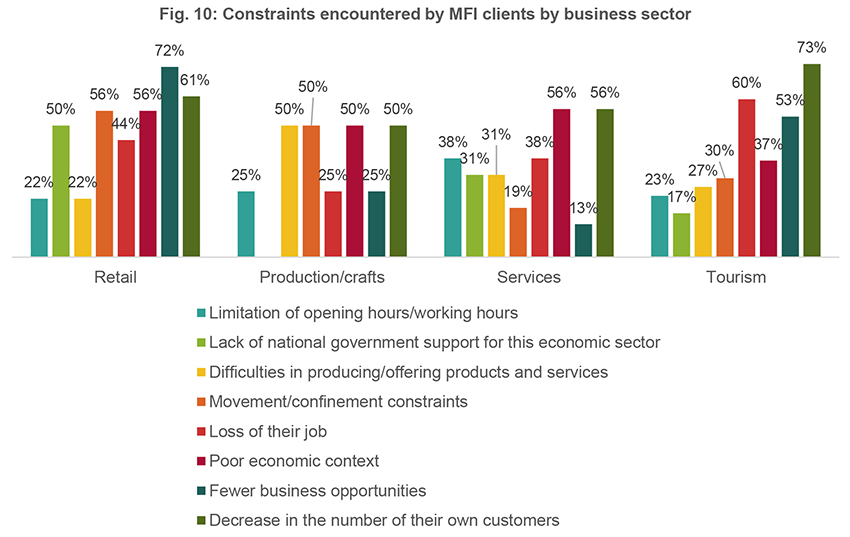
By focusing on the specific constraints faced by their clients depending on their industry, but probably too on other factors, MFIs would thus be able to better anticipate their financial situation in the short term, and respond appropriately to the needs of their different customer segments: This would allow them all to better navigate this crisis. This responsiveness seems to have already been adopted by some MFIs, given that, and beyond the priority given to the repayment of credits or their restructuring, some of them have introduced not only new channels of digital communication and distribution, but also new credit policies or new products (Fig. 11).
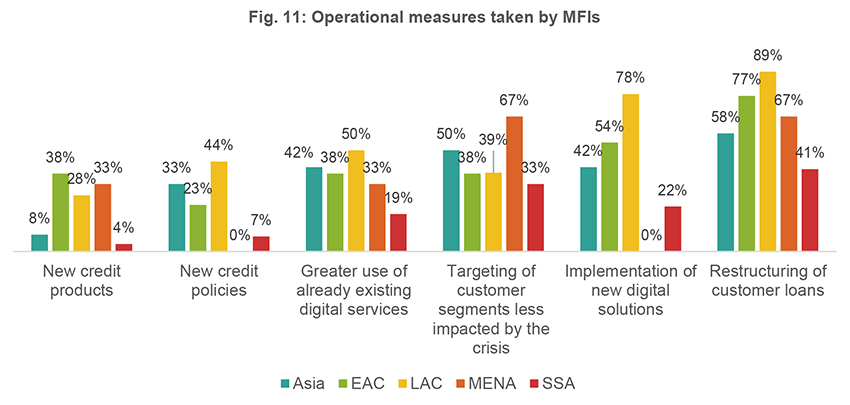
___________________________________________________________
[1] The results of the first three surveys of ADA partners, Inpulse and the Grameen Agricole Foundation are available here: //www.ada-microfinance.org/fr/crise-du-covid-19 and //www.gca-foundation.org/en/covid-19-observatory/
[2] The number of MFIs responding by region is as follows: SSA: 27 MFIs; LAKE: 18 MFIs; EAC: 13 MFIs, Asia: 12 MFIs; MENA: 3 MFIs. In spite of the small number of MFIs participating in the MENA region, we considered useful to share the inputs of MFIs that took the time to respond to these surveys. However, we urge caution in interpreting the results in this region, which might have limited representativity.
[3] As the MENA region is represented by only 3 MFIs in the sample surveyed, the high numbers in this region should be considered with caution.
[4] The results of these surveys are available here: //app.60decibels.com/covid-19/financial-inclusion#explore

Kafo Jiginew, resilient in the face of the Covid-19 crisis in Mali
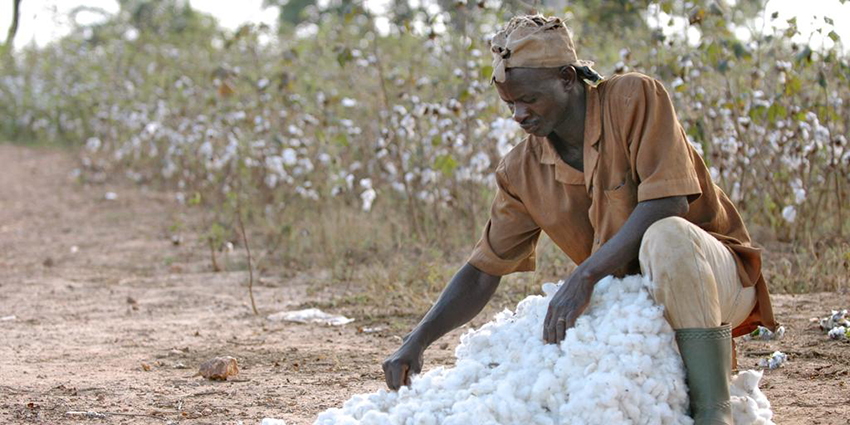
The Covid-19 crisis has impacted the activity of Kafo Jiginew, a microfinance institution funded by the Grameen Crédit Agricole Foundation since 2018. Firstly due to the slowdown in international economic activity which impacted the growth of savings, but also in relation to the demand for loans which has also decreased. This panorama was presented by David Dao, Director of Kafo Jiginew, during an interview given on the occasion of the presentation of donations worth 25 million FCFA to the widows and orphans of the Malian soldiers who are part of the membership. of the institution.
The Covid-19 has also affected the Malian cotton sector, largely financed by the institution, which has seen its demand drop on the international market. Credit demands from cotton producers have decreased, which for the institution represents a significant drop in financial income. Another consequence is the increased risk of non-repayment of loans which could weigh on Kafo’s financial profitability in 2020. David Dao, however, expects a positive result for 2020 and asserts that the situation will not weigh on the existence of the institution that is strong.
Kafo Jiginew remains the leader in the microfinance field in Mali with at least 40% of the market share, 430,000 clients and a portfolio worth FCFA 68 billion. Since 2014, the institution has entered a phase of profitability which still continues. In 2015, Kafo Jiginew also initiated a global rating operation with MFR – Microfinanza Rating, an international audit firm that assesses and scores its financial and social performance. These good practices ensure transparency towards international funders such as the Grameen Crédit Agricole Foundation, which will continue to support its partners to face the current crisis.
Source: Bamada.net

Signatory organisations report on Covid-19 Pledge implementation and lessons learned

Over the past months, the financial inclusion sector has embarked on a journey to face the Covid-19 crisis. On the field, microfinance institutions have taken measures to face the health risks, lock downs and the economic recession. In the meantime, lenders, investors, support organisations and technical assistance providers had to adapt their intervention principles and coordinate their actions (1). By signing the Pledge on Key principles to protect microfinance institutions and their clients in the COVID-19 crisis (the “Pledge”), 30 organisations committed to complying with some key principles.
Six months after the signature of the Pledge, a working group of signatories (ADA, Cordaid Investment Management, Frankfurt School Impact Finance, Grameen Credit Agricole Foundation, Microfinance Solidaire, SIDI and the Social Performance Task Force) draws lessons from the implementation of the pledge principles. In a common publication, the signatories present the progress on 10 principles mostly related to rollovers and early stages of voluntary debt workouts, as this is what we can observe in the first months of the crisis.
—————————————————
We conclude to a very good coordination between international lenders who have agreed on terms of handshake agreements, avoiding lengthy restructuring discussions in the majority of cases. This prompt reaction has proved instrumental to avoid a liquidity crunch in the sector as most investees have maintained sufficient levels of liquidity. In rare cases when individual non-coordinated behaviors threatened the fair burden sharing amongst international debt providers, peer pressure has been effective.
We have also seen an unprecedented coordination on technical assistance that already resulted in some collaboration between technical assistance providers, such as the organisation of a common webinar on liquidity management, the provision of tools on business continuity and the implementation of field surveys on final clients. Coordination was however not up to our initial objective notably due to need to prioritise issues that were more pressing. Given the important challenges that microfinance institutions will face on the field, we believe that we should pursue our efforts on this front to avoid duplication and steer efficiency.
Our pledge to client and staff protection lives on. We have encouraged initiatives to promote continued client and staff protection in these times of crisis and need to pursue such efforts to make sure that they remain at the center of the table of discussions. Many microfinance institutions will have to turnaround a business intimately linked to the financial health of clients, staff behaviors on the field and staff treatment. For that purpose, we encourage coordinated collection of information on staff treatment and client outcome throughout the crisis and beyond. We also encourage deepening sector initiatives that contribute to efficient reporting under these exceptional circumstances (2).
New debt funding has drastically slowed down during the crisis but has not completely stopped. As some economies begin to restart, many of our investees have shown promising signs of regrowth since July 2020, with significant differences among countries and sectors of activities. Acknowledging the opening of this new chapter, we commit to accompany and consolidate the economic recovery in a timely and responsible manner.
______________________________________________________________________
[1] //www.covid-finclusion.org/investors
[2] The Social Investor Working Group of the SPTF has issued Lenders’ Guidelines for Defining and Monitoring Responsible Covenants in the Covid-19 context.

A resumption of activities under operational and financial constraints

ADA, Inpulse and the Grameen Crédit Agricole Foundation have joined forces to closely monitor and analyze the effects of the COVID-19 crisis among their partners around the world. This monitoring will be carried out periodically throughout the year 2020 with the purpose of evaluating the evolution of the crisis. Through this regular and close analysis, we hope to contribute, in our own way, to the structuring of strategies and solutions tailored to the needs of our partners, as well as the dissemination and exchange of information among the different actors in the sector.(1)
In short
This article is based on the answers provided between July 23rd and August 6th 2020 by 91 partners located in 42 countries, split between Europe, Africa, Asia and Latin America (2). Feedback from these microfinance institutions (MFIs) allows us to observe the continuous evolution of the sanitary crisis linked to the COVID-19 virus. While the measures to reopen borders and to revive the economy have multiplied during the month of July, our partners mention significantly that the virus now directly affects their customers and employees.
In such an uncertain and evolving context, MFIs have been braving the challenges they face for more than a quarter now. With operational difficulties still ongoing, institutions remain vigilant about their portfolios and the risk they carry, which seems to have stabilized overall, albeit at a much higher level than before the crisis. Nevertheless, some signals are encouraging on other issues. For example, the vast majority of MFIs believe that they can survive the crisis without major strategic changes. In addition, it appears that the issue of liquidity has been rather well managed since the beginning of the crisis.
However, the battle against the virus is not won, and its repercussions are particularly strong on the informal sector of the economy. It appears that clients in the informal economy are more affected, particularly as they do not ultimately benefit from the aid measures that states can provide. Nonetheless, MFIs are sensitive to these needs and some of our partners are considering providing specific services to help their clients cope with the crisis.
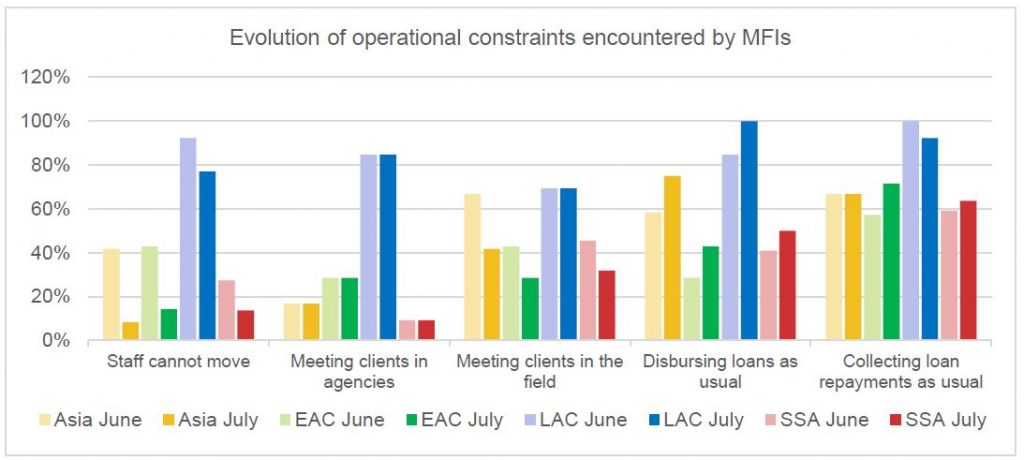 1. Operational constraints remain relevant for MFIs
1. Operational constraints remain relevant for MFIs
In general, our partners are reporting progress regarding the easing of containment measures in their countries, following the first relaxations that took place in some regions of the world in June (notably in Eastern Europe, Central Asia and Sub-Saharan Africa). Comparing the responses of our partners who answered to our July and June surveys (3) (graph below) reflects the improvement of operational difficulties. Moreover, these figures are in line with the general results obtained for the month of July.
MFIs in each region report an improvement in travel opportunities for their staff. However, this remains a major constraint in Latin America and the Caribbean, while less than 20% of MFIs in other areas are affected by this issue. Moreover, even if mobility is improving, meeting clients in the field remains an important issue for more than 30% of MFIs. Finally, with the exception of Latin America, meeting clients in branches seems to be the least problematic solution today.
In fact, while there has been an overall enhancement in interaction with clients in all regions, collecting loan repayments or disbursing new loans at standard pre-crisis levels remains very difficult, with such challenges being encountered by more than 50% of the MFIs surveyed in each region (70% and 66% respectively overall). Such difficulties are ultimately linked to national or local regulatory constraints.
“Though other MFIs start operating their process, we still wait for full release by the regional government” – Partner in Myanmar
Especially as MFIs are still busy restructuring client loans in July (80% of respondents).
“Communication on the postponement of instalments is a barrier to the repayment of loans” – Partner in Senegal
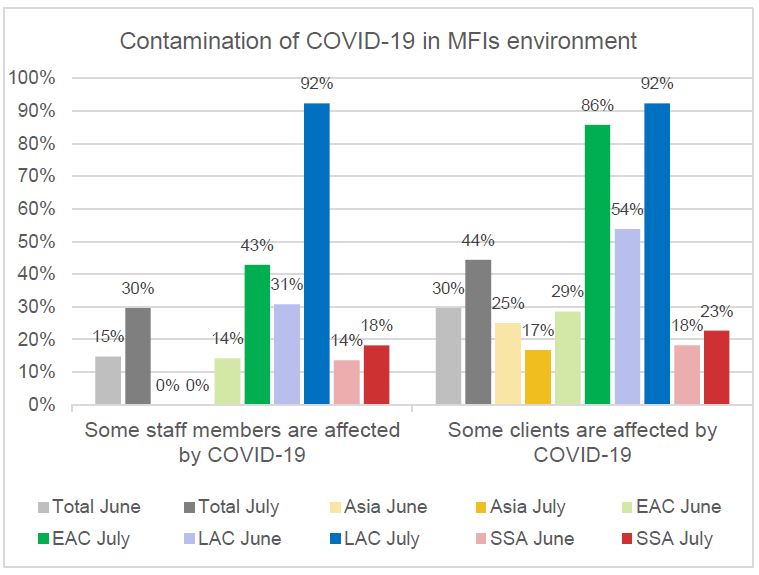 Although we have been observing the singularity of the Latin American zone in the responses collected over the last few months due to a particularly difficult COVID-19 sanitary context, the information we gathered shows that the situation is not settled yet in the other regions.
Although we have been observing the singularity of the Latin American zone in the responses collected over the last few months due to a particularly difficult COVID-19 sanitary context, the information we gathered shows that the situation is not settled yet in the other regions.
In fact, doubts about a potential normalization of MFIs’ activities have not been dispelled for now, as the health crisis remains the central issue of the current period and as it persists. The news in July were notably highlighted by the punctual resurgence of a number of cases in some countries. For the first time in our surveys, this is significantly demonstrated by a sharp increase in the proportion of partners who are affected by the health crisis, both among their staff and their clients (see graph below (4)).
Thus, at the global level of the survey, 51% of our partners told us that among their customers, some have contracted COVID-19. Almost a third indicate that this also concerns their employees. Although we do not have data to know the respective proportions of customers and employees concerned, this trend is still meaningful. More specifically, more than three out of four MFIs in Central Asia and Latin America reported having clients infected with the virus (one out of two in June). While Latin America is largely affected on both the client and staff sides, the figures are also slightly higher for the staff of MFIs in Europe and Central Asia. South Asia and Sub-Saharan Africa seem to be generally less affected on this point, but figures encourage us to remain vigilant.
“More than 10 clients have died from Covid-19” – Partner in Honduras
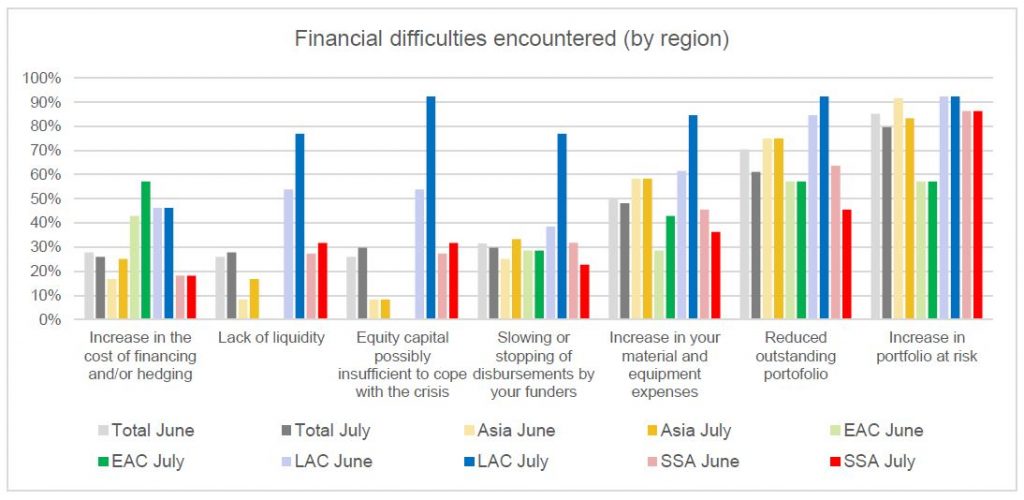 2. MFIs continue to face major financial issues
2. MFIs continue to face major financial issues
As we witnessed since the beginning of our surveys, the increase in portfolio at risk and the reduction in outstanding portfolio are the two main direct consequences of the crisis for a microfinance institution. Other financial difficulties are to a lesser extent and are stable from June to July (figure below5). This is the case in all regions except Central America, where our partners who responded to all of our surveys indicate problems and growing fears regarding equity, lack of liquidity or increased expenses.
The details of the analysis show that the contraction of the credit portfolio is a heterogeneous phenomenon. Among all respondents, 39% of Central Asian MFIs indicate that they are suffering from a reduction in their portfolio, compared to 55% in Sub-Saharan Africa, 71% in South Asia and 88% in Latin America during the same period.
On the 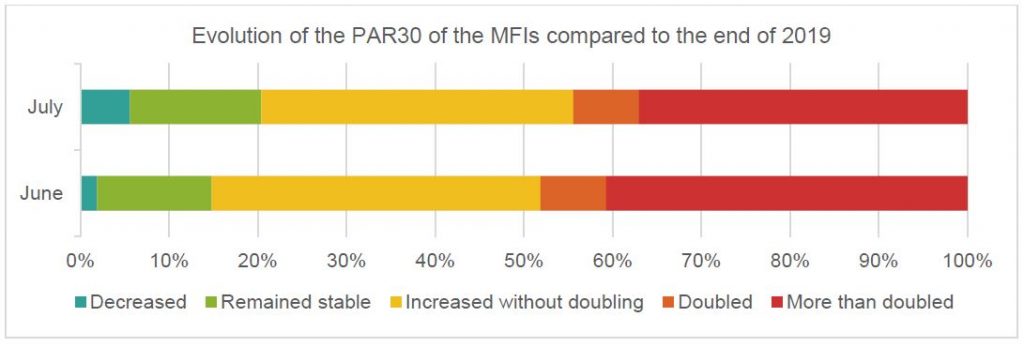 other hand, it appears that the increase in portfolio at risk is a common problem for all MFIs, regardless of their region or size, and concerns more than 80% of our partners. However, if the PAR 30 of microfinance institutions has deteriorated since the beginning of the crisis, it is no longer undergoing major changes between June and July, although it remains at a much higher level than before the crisis. As shown in the graph below, the PAR30 structure of the partners in the sample of 54 MFIs is stable from one month to the other. Moreover, we observe this trend across all of the surveyed MFIs: between 15 and 20% of the MFIs see their PAR30 decreasing or remaining stable, while around 40% have seen their PAR30 increase without doubling since the end of 2019. Finally, the riskiest cases represent between 30 and 40% of the respondents.
other hand, it appears that the increase in portfolio at risk is a common problem for all MFIs, regardless of their region or size, and concerns more than 80% of our partners. However, if the PAR 30 of microfinance institutions has deteriorated since the beginning of the crisis, it is no longer undergoing major changes between June and July, although it remains at a much higher level than before the crisis. As shown in the graph below, the PAR30 structure of the partners in the sample of 54 MFIs is stable from one month to the other. Moreover, we observe this trend across all of the surveyed MFIs: between 15 and 20% of the MFIs see their PAR30 decreasing or remaining stable, while around 40% have seen their PAR30 increase without doubling since the end of 2019. Finally, the riskiest cases represent between 30 and 40% of the respondents.
“[It is difficult] to cover the expenses of provisions for doubtful debts” – Partner in the Democratic Republic of Congo
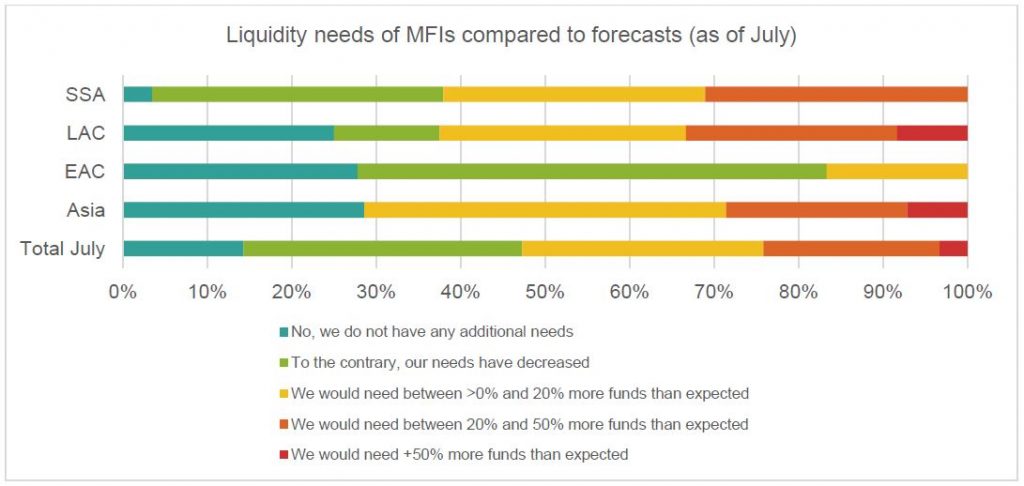 Luckily, all these difficulties should not be too harsh for our partners. When asked about possible strategic changes because of the crisis, 93% of respondents do not anticipate any changes in the short or medium term. Therefore, our partners do not feel concerned by potential sales of a part of their assets, being placed under administrative supervision or being liquidated, which is a sign of a certain confidence in the future.
Luckily, all these difficulties should not be too harsh for our partners. When asked about possible strategic changes because of the crisis, 93% of respondents do not anticipate any changes in the short or medium term. Therefore, our partners do not feel concerned by potential sales of a part of their assets, being placed under administrative supervision or being liquidated, which is a sign of a certain confidence in the future.
Finally, the latest information from our partners indicates that a liquidity crisis seems to have been avoided, with 24% of respondents highlighting this problem (compared to almost 40% in our May survey). In details, the proportion of MFIs raising this point in each region does not exceed one third.
The first explanations lead us to the many extensions of maturities granted to MFIs by their foreign and local investors, but also to the reduced levels of disbursements since the beginning of the crisis. We also note the low proportion of MFIs that have suffered from significant withdrawals of savings, which has helped cash management. Among the MFIs reporting this difficulty, most are from Sub-Saharan Africa and Asia and do not show significant additional liquidity needs compared to other MFIs. These different factors influence the liquidity needs of MFIs. Thus, on a global scale, 47% of the respondents have no additional funding needs for 2020. For almost a quarter of the MFIs outside Sub-Saharan Africa, these needs even decreased. Last, only 25% of those surveyed report significant additional needs.
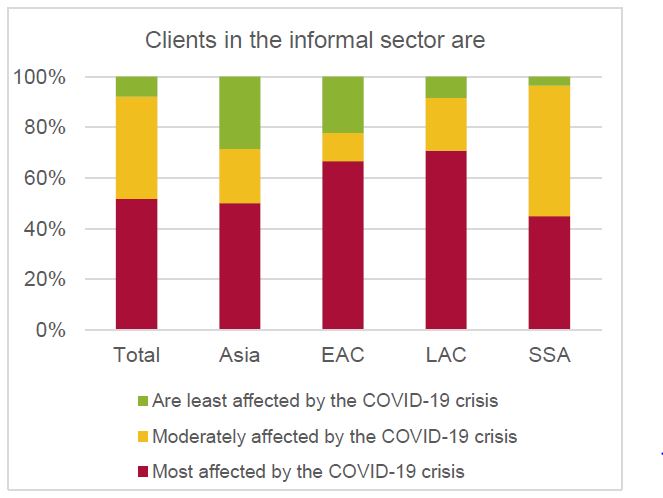 3. In July, the informal sector is exposed
3. In July, the informal sector is exposed
Microfinance institutions are still exposed to the crisis, and so are their clients. In fact, 92% of our partners indicate that clients in the informal economy are either moderately affected by the crisis or are the most affected ones. Like all other entrepreneurs and clients of MFIs, they face reduced activity, but also suffer from the consequences of the major international and national measures to manage the pandemic, for instance in the tourism, textile or cultural sectors… With limited means of relief and a reduced activity that cannot generate sufficient income, they would be more vulnerable. This point is raised overwhelmingly in Central Asia and Latin America (two thirds of respondents from these regions) while in Sub-Saharan Africa, the feedbacks indicate that clients in the informal economy are affected in the same way than those in the formal economy.
“Due to prevailing market and economic conditions, it is hard for the small businesses to revive their usual economic activities to the level they were before COVID-19 crisis” – Partner in Sri Lanka
The reasons given by our partners are mostly about financial matters: the vulnerability of workers in the informal sector would come from the lack of financial support from governments to the sector. This explanation is given by a vast majority of surveyed MFIs (78%), which also note (57%) that clients in this sector do not have access to adapted non-financial services (business development, financial education, health education, etc. ). The lack of insurance services is also underlined by 50% of MFIs. In contrast, the lack of access to savings services is hardly mentioned.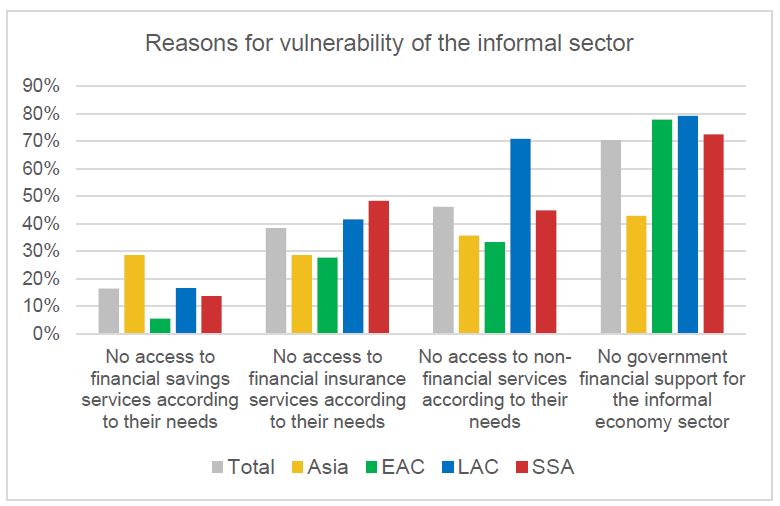
MFIs are already thinking about how to meet the needs of their clients. Thus, 48% of MFIs reporting a vulnerable informal sector say they plan to launch financial education programs, and 33% imagine supporting clients in the management of their activity. However, only a small proportion of them forecasts launching micro insurance products (maximum 11%). MFIs justify such motivations with two main reasons: getting closer and focusing on under-served populations, but also to respond to a demand for adapted offers during a particular period. For some MFIs, this could translate into other initiatives, such as the development of the agricultural segment (still strongly mentioned by MFIs) or by the development of digital solutions for clients. As a partner in Latin America tells us:
“The financial education and business management program is being planned by digital means to introduce customers to the use of social networks to sell their products, since the main problem they have had is that their places of sale have been closed down or customers are not arriving because of the risk of contagion”
The results of this article highlight the operational and financial difficulties encountered by MFIs during this first semester, but also their first steps in understanding the problems and finding solutions. In this context, the future challenges us to continue questioning ourselves about the best recovery actions for each region, how they can be implemented and how the various actors in the microfinance sector can directly and indirectly contribute to its revival.
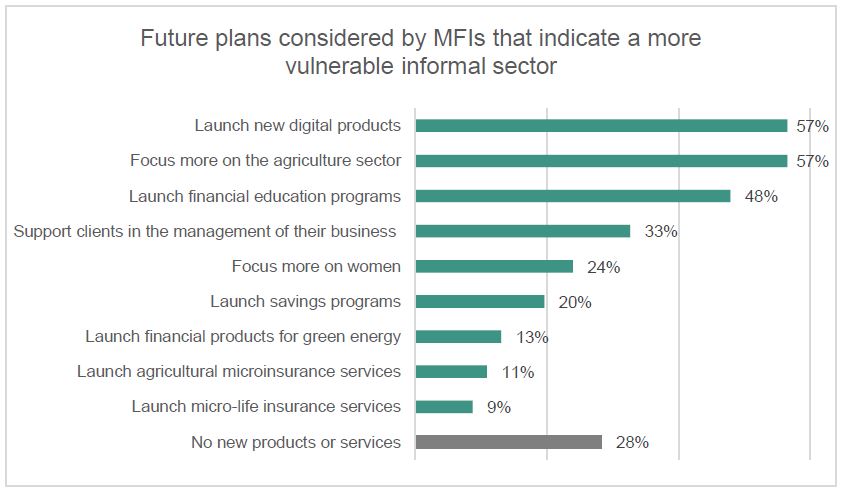
_____________________________________________________________________________
1 The results of the previous surveys are available here for the first one and here for the second one.
2 The total number of MFIs that responded to the survey for each region is as follows: South Asia (“Asia”) 14, Latin America and the Caribbean (“LAC”): 24, Europe and Central Asia (“ECA”): 18, MENA: 6, and Sub-Saharan Africa (“SSA”) 29 (total: 91 institutions). The small sample from the MENA region does not allow for the monitoring of the figures for the zone.
3 This comparison is based on a sample of 54 MFIs: 12 in Asia, 7 in EAC, 13 in LAC, 22 in SSA.
4 This comparison is also based on the sample of 54 MFIs.
5 This comparison is also based on the sample of 54 MFIs.
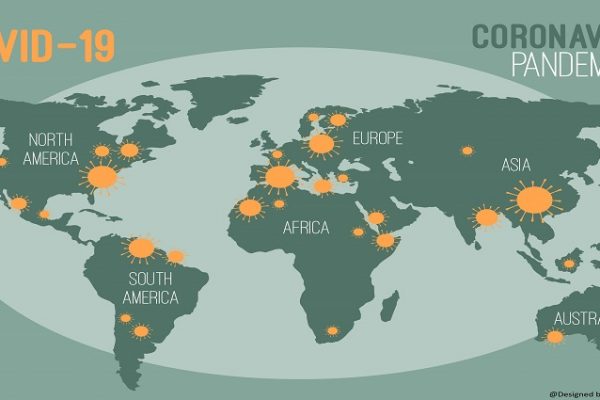
Covid-19 affects microfinance institutions of different sizes in different ways
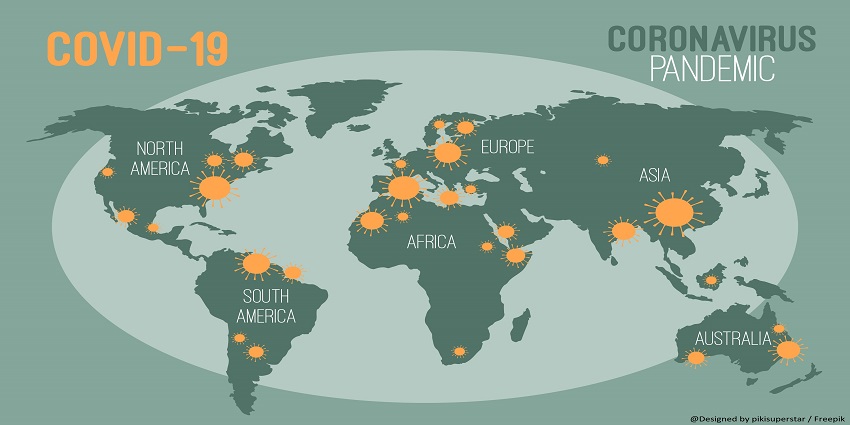
@Designed by pikisuperstar / Freepik
ADA, Inpulse and the Grameen Crédit Agricole Foundation have joined forces to closely monitor and analyse the effects of the COVID-19 crisis among their partners around the world. This monitoring will be carried out periodically throughout the year 2020 with the purpose of evaluating the evolution of the crisis. Through this constant and close analysis, we hope to contribute, in our own way, to the structuring of strategies and solutions tailored to the needs of our partners, as well as the dissemination and exchange of information among the different actors in the sector.
The results presented in this article come from the second wave of a joint (1)survey by ADA and Grameen Crédit Agricole Foundation, Inpulse having decided to join the initiative for odd-numbered waves. The responses were collected from 18 June to 1 July from 108 microfinance institutions (MFIs) based mainly in Latin America and the Caribbean (LAC, 46%), Sub-Saharan Africa (SSA, 29%), Asia (14%) and Eastern Europe and Central Asia (EECA, 10%), with a single MFI from the Middle East and North Africa (MENA) region. This panel of respondents spans a relatively diverse range of MFI sizes, with 49% of Tier 2 MFIs,(2) 35% of Tier 3 MFIs and 16% of Tier 1 MFIs. Figure 1 shows their regional distribution.
Figure 1. Respondents by region and tier

![]() MENA Tier 2
MENA Tier 2
In short:
The latest wave of the survey reveals that the crisis faced by MFIs has laid bare the structural strengths and weaknesses specific to their sizes: the biggest MFIs (Tier 1) appear better equipped to overcome the financial difficulties resulting from the health crisis and epidemic containment measures, as well as to take crisis management measures and make use of the specific measures put in place by local authorities. Smaller MFIs (Tiers 2 and 3), on the other hand, are more likely to offer their clients non-financial services to help them cope with the situation and are eager to continue developing non-financial services in the future. More generally, if they are considering launching new products or services, it is mainly to meet the needs of their clients rather than following their strategy or reducing risks. While big MFIs appear to be more resilient in times of crisis, small ones are also rising to the challenge and staying true to their powerful social mission. This is a real strength for these institutions, which should not be neglected in favour of more autonomous structures during the current crisis.
The biggest MFIS are less exposed to financial difficulties…
Since June, epidemic containment measures have been relaxed in certain regions, particularly Eastern Europe, Central Asia and Sub-Saharan Africa. As a result, the operational difficulties faced by microfinance institutions have ebbed in these regions since May,(3) but they are still very much present in Latin America and the Caribbean, where containment measures are still in place and a higher percentage of MFIs still find it difficult to move around, meet clients in agencies and, therefore, to disburse loans and collect loan repayments, as can be seen in Figure 2. For example: 76% of MFIs in the Latin America and the Caribbean region report that their staff is finding it difficult to move around, compared to 23% in Sub-Saharan Africa.
Figure 2. Operational difficulties faced by MFIs by region:
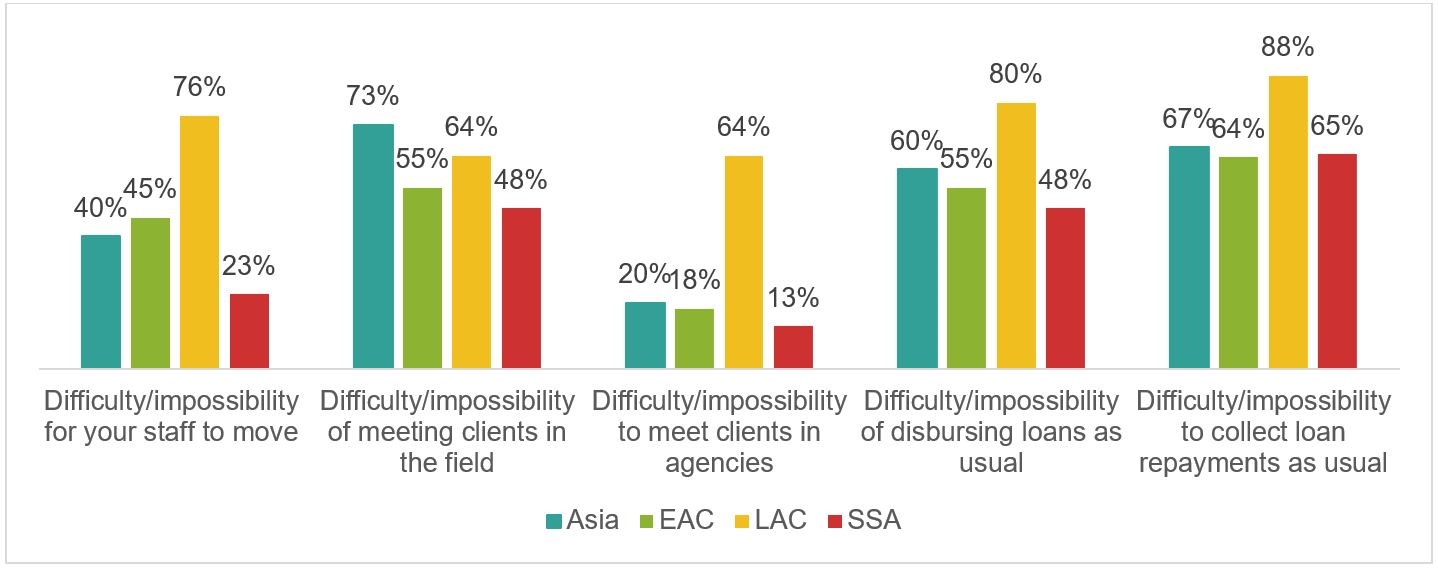
As explained in our previous article, these operational difficulties are having an impact on the portfolio and its quality in all MFIs. However, the resulting financial difficulties vary by MFI size. Overall, the biggest MFIs are less likely to face these types of problems, with lower percentages of Tier 1 MFIs reporting difficulties in repaying funders (12% versus 22.5% of Tier 2 and 3 MFIs), insufficient equity capital to cope with the crisis (6% versus 29% of Tier 2 and 3 MFIs) or lack of liquidity (2% versus an average of 29% of Tier 2 and 3 MFIs), as can be seen in Figure 3. Tier 1 MFIs appear better equipped to absorb the impact of the crisis on their financial situation.
Figure 3. Financial difficulties faced by MFIs by size

Although an increase in the portfolio at risk is the main difficulty faced by all MFIs, this increase varies by MFI size. Tier 1 MFIs have experienced smaller increases than other MFIs, as can be seen in Figure 4: only 12% of Tier 1 MFIs report that their portfolio at risk at 30 days has doubled or more than doubled compared to end 2019, versus 44% of Tier 2 MFIs and 57% of Tier 3 MFIs. In contrast, 35% of Tier 1 MFIs report a stabilisation or decrease in this indicator, versus 17% of Tier 2 MFIs and 8% of Tier 3 MFI.
Figure 4. Changes in the PAR30 of MFIs compared to end 2019 by MFI size

…and more likely to implement crisis management solutions…
The governments of most countries have taken measures to help microfinance institutions to weather the crisis. However, not all MFIs are benefiting from these measures. While the exact percentages vary from one region to the next, probably due to differences in the communication and implementation of these measures (e.g. MFIs in Asia are more likely to report making use of a certain number of measures), geographic location does not appear to be the sole determining factor for making use of certain government measures: bigger MFIs are also more likely to benefit from them, as can be seen in Figure 5.
Figure 5. Government measures from which MFIs have benefited by MFI size

This size effect is real because it cannot be explained by a specific distribution of MFIs by region. For example, when it comes to rescheduling or cancelling the payment of taxes and the non-provision of loans affected by COVID-19, a regional analysis shows that MFIs in Asia are more likely to benefit from these measures despite Tier 1 MFIs being in the minority in this region. Similarly, when it comes to liquidity lines, MFIs in Sub-Saharan Africa are among the most likely to benefit from them despite Tier 1 MFIs being few and far between in this region. As for the operational and crisis management measures implemented, the types of measures again vary by MFI size (Figure 6): For example, 100% of Tier 1 MFIs in the sample restructured client loans, versus an average of 69% of other MFIs. They are also more likely to engage with supervisory authorities to explore the possibility of suspending prudential regulations during the crisis. In contrast, Tier 3 MFIs are less likely to use their liquidity plans or implement new digital solutions.
Figure 6. Operational and crisis management measures taken by MFIs by size

…while small MFIS continue to focus on their clients’ needs
In contrast, despite facing significant challenges, the smallest MFIs continue to focus on their clients’ needs: for example, they are more likely than Tier 1 MFIs to have surveyed their clients to better understand the impact of the crisis (Figure 7). On the other hand, although they were less likely to disburse emergency loans to their clients, they were more likely to implement measures that went beyond their core business to better meet the needs of their clients during the health crisis. For example, more of these MFIs launched hygiene awareness campaigns on hygiene or provided clients with emergency kits. Bigger MFIs were less likely to offer these types of direct services to clients, instead forging partnerships with specialised
organisations.
Figure 7. Crisis response measures for clients by MFI size

More Tier 1 MFIs reported interest in launching new products or services in the medium term; as shown above, these MFIs have fewer financial constraints and, therefore, more room for manoeuvre in this regard (Figure 8). More specifically, while few MFIs overall are planning to launch microinsurance products in the future, Tier 1 MFIs are the most likely to do so. They are also more likely to want to increase their focus on agriculture or launch new digital products and services. The smallest MFIs, on the other hand, also want to start offering non-financial services such as financial literacy and business development services.
Figure 8. New products, services or markets that MFIs wish to develop in the medium term, by size

The motivations for MFIs to focus on new markets or develop new products or services also vary by size (Figure 9): Among those that reported wanting to launch at least one new product or service and stated their motivations (76 out of 108 respondents), the desire to meet the new needs of clients and/or follow new market trends was more frequent among Tier 3 MFIs than among MFIs in other tiers. In contrast, there are fewer that base this choice on following their strategic plan or striving to reduce risks. The focus of the smallest MFIs on their clients’ needs will probably become one of their strong points during this crisis.
Figure 9. Main motivations for MFIs to focus on new markets, products or services by size
 _____________________________________________________________________________
_____________________________________________________________________________
(1) The results of the first wave of the survey of ADA, Inpulse and the Grameen Crédit Agricole Foundation’s partners
can be found here: //www.findevgateway.org/paper/2020/06/beyond-difficulties-posed-covid-19-crisis-newopportunities-are-emerging-microfinance
(2) Tiers are defined according to the value of their total assets: over USD 50 million for Tier 1, USD 5 to 50 million for
Tier 2 and under USD 5 million for Tier 3.
(3) See the results of the first wave of the survey, available via the above link.
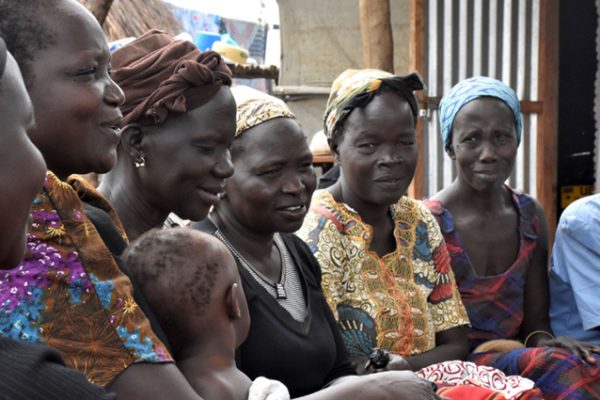
Impact of Covid-19 on Refugee Saving Groups in Uganda
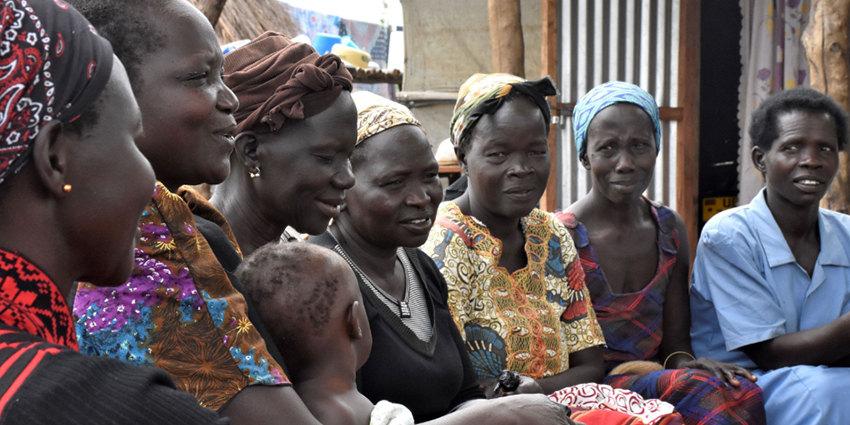
VisionFund Uganda has been working in Obongi district since May 2019 and has disbursed US$ 92,000 to 100 savings groups, supporting 2,264 individual group members. VisionFund started training saving groups in Yumbe district late 2019, but has not financed any group yet. Savings groups have been operating in both districts for some time and all the interviewed groups have been in existence for at least two cycles (or two years). VisionFund Uganda is the first microfinance institution to offer loans into those groups. Between April and May, a study was conducted to understand the effect of Covid-19 on savings group (SG) on both host and refugee communities.
Savings group meeting behavior
The majority (81%) of the groups are still meeting; only 19% of groups have stopped meeting. The main strategy has been to keep meeting (65%), but in small groups as per government requirements on social distancing. One explanation for the stronger resilience of the refugee groups may be that these groups had more support in their formation than host groups. Almost all refugee groups are still saving (some are saving less) while 24% of host groups have stopped saving. The conclusion is that refugee groups have not only adapted to the new meeting guidelines but have also found ways to continue meeting, showing higher levels of resilience.
When asked about the future of the group, of the overall 417 participants 65% expected to continue to save. However, it is worrying that 28% of all respondents expected to drop and for host communities this was up to 39% of respondents. It is important to better understand what this means long term.
Impact on households
Households were stressed on two fronts. 88% of all respondents reported an increase in staple food prices, which puts pressure on household budgets. Almost all refugee respondents (96%) reported the increase, which probably reflects the reduction of their WFP rations. At the same time, 92% of all respondents reported some level of financial stress due to either lower business activity (34%), decreased income (23%), challenges to save (25%) and food insecurity (11%). It’s safe to conclude that all households were stressed by the COVID-19 pandemic, but even though refugees were stressed at a higher level, they proved to be more resilient.
Despite these stresses, households are not resorting to increased demand for the SG social fund or selling their assets (87% haven’t had to sell any assets). In terms of demand on the savings group social fund, 58% of the groups reported no change in number of requests (with little difference between host and refugee), but did note that those who did request use of the social fund, the amount was significant.
Business impact
Savings group members engage in multiple economic activities. Similar to other studies on the impact of Covid-19, 93% of all respondents reported some level of reduced income. More than half of the groups reported either a big reduction in income (47%) or a complete stop to income (11%). Interestingly, 6% reported an increase in income reflecting that there are business opportunities even in a crisis.
In conclusion, the three following points can be highlighted:
- Refugee savings groups are resilient: The demonstrated resilience of these refugee savings groups (compared to host groups) continues to support the thinking that the formation and support for refugee savings groups is a key response to livelihoods for long term refugee communities.
- Covid-19 is having a dramatic impact on the livelihoods of the rural poor: This survey was undertaken in a remote part of Uganda which supports anecdotal evidence that rural communities are as much impacted as the more visible impacts of Covid-19 on people livelihoods.
- Surveys can be done safely in a lockdown situation: Finally, this report shows that even in a lock down situation, using a simple digital tool and practicing social distancing guidelines surveys can be done quickly.
Further information here.
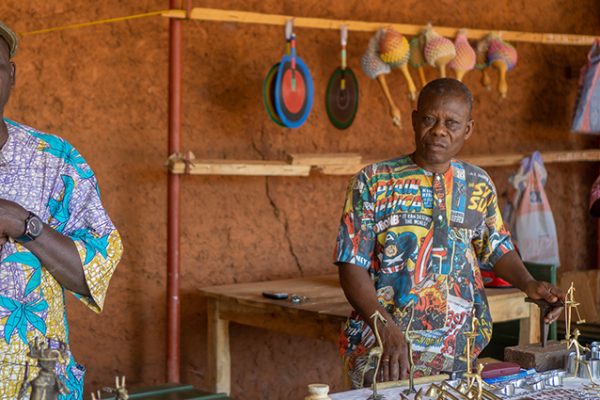
A Consortium to support microfinance in Africa during Covid-19 crisis
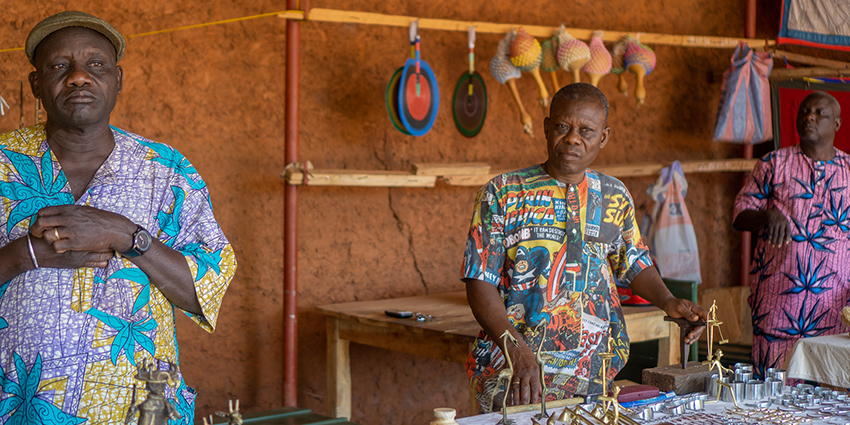
In the economic crisis linked to Covid-19, the occurrence of a liquidity and / or solvency crisis turns out to be one of the main risks microfinance institutions are facing. To deal with this, the Grameen Crédit Agricole Foundation, the Microfinance African Institutions Network (MAIN), International Solidarity for Development and Investment (SIDI) and the ACTES Foundation are creating a consortium to better support the organizations supported in Africa.
—————————————-
In April 2020, MAIN sent a questionnaire to all its members in order to gather their needs and find out what type of support the network could offer them. The results of this survey show that most of the institutions questioned encounter difficulties in managing their liquidity and wonder how to continue to serve their customers in a sustainable manner in such a context.
It is in this context that the Consortium was formed, which brings together the Grameen Crédit Agricole Foundation, MAIN, SIDI and the ACTES Foundation. The objective of the Consortium is to provide the organizations supported with risk analysis and management tools in order to anticipate and better manage the impact of the crisis on their liquidity and solvency.
The Consortium will thus offer 50 microfinance institutions, including 31 partners from the Grameen Crédit Agricole Foundation, mainly in West and East Africa, support on the theme of liquidity and solvency risks management. The target organizations are mainly small institutions (Tiers 3: loan portfolio <10 million dollars), very present in rural areas.
The support will take the form of a cycle of three online training courses for each institution, workshops and personalized coaching, which will be provided by Cabinet Senbumo. In addition to liquidity and solvency management, institutions will be trained on the subject of resumption of activities following the Covid-19 crisis. The programme will start on July 06, 2020 and will last for 6 weeks.
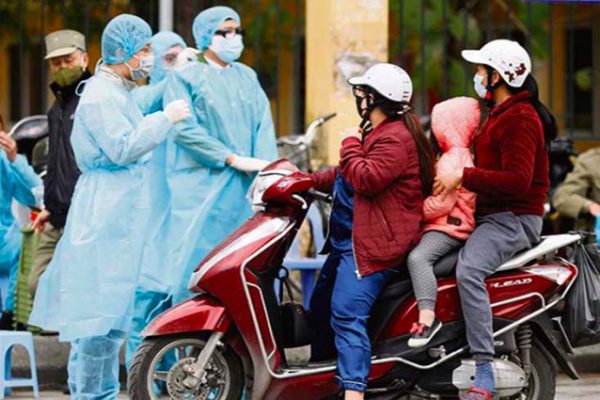
Microfinance lenders and platforms endorse principles in Covid-19 crisis
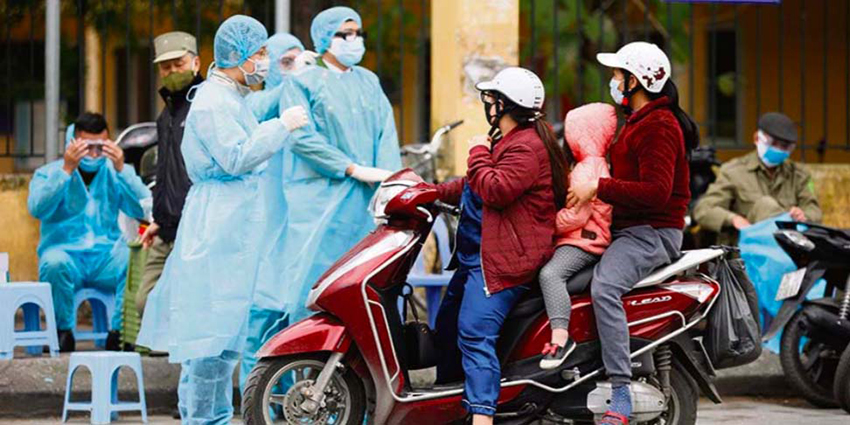
July 2020. Two groups of lenders and microfinance stakeholders published a set of principles to support the microfinance sector and fragile clienteles in Covid-19 crisis. Both groups have coordinated their efforts for complementarity and consistency.
Microfinance institutions (MFIs) have an important role in the fight against poverty. They offer financial and non-financial products and services to support income-generating activities for low-income populations. In Covid-19 crisis, supporting the microfinance sector is then essential to protect the most vulnerable populations. This calls for a collective approach within the sector.
That is why, we, Leading microfinance lenders, impact funds, platforms and networks covering markets in Africa, Asia, Central Asia, The Middle East, Eastern Europe and Latin America, have established two complementary agreements. They frame a series of principles to support MFIs in order to avoid credit crunch, which would be extremely harmful for microfinance’s fragile clienteles. We published both documents as guides for the investment teams, investors, investees, and other stakeholders.
- “Key principles to !protect microfinance institutions and their clients in Covid-19 crisis”: In this agreement, the pooling of available information, analyses and anticipations, as well as the concerted implementation of shared decisions are the fundamental principles. The signatories, including lenders, impact funds, platforms and networks, agree to coordinate policies, technical assistance and resources to help microfinance institutions face the crisis. The objective is to protect the microfinance institutions and their clients to ensure the continued access to funding in the best possible conditions and to look out for clients’ and staff well-being.
- “Coordination among microfinance MIVs in response to Covid-19 crisis”: This Memorandum of Understanding (MOU) addresses the impact on the liquidity flows within financial institutions as a result of Covid 19 and related actions to prevent spreading. The MoU among MIVs further acknowledges the importance of timeliness and cooperation among lenders and other stakeholders and presents a framework for managing Covid related debt rescheduling.
Subscribers to the Pledge and MoU acknowledge and express support for both documents as they are considered complementary serving a similar purpose. Other public and private actors in the financial inclusion sector are invited to support, endorse and act in line with the principles presented. In particular, the signatories believe that it is essential that the public sector aligns with private sector practices to strengthen the impact-investing sector and its social impact on low-income households and small businesses.
The participation of all stakeholders is vital to enhance the impact of microfinance. We are committed to continue to support our partners’ action to promote financial inclusion all around the world.
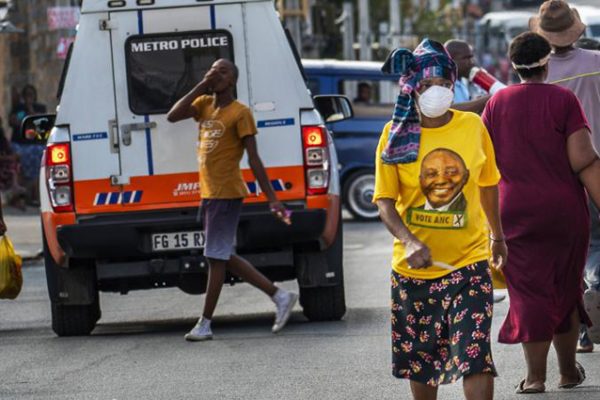
Covid-19 crisis: New opportunities are emerging for microfinance institutions
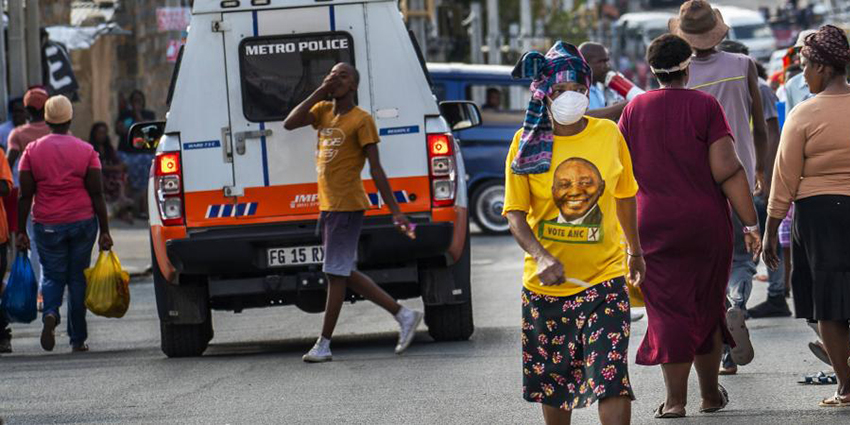
ADA(1), Inpulse(2) and the Grameen Crédit Agricole Foundation have joined forces to closely monitor and analyze the effects of the COVID-19 crisis among our partners around the world. This monitoring will be carried out periodically throughout the year 2020 with the purpose of evaluating the evolution and trend of both the effects of the crisis and the financial needs and adaptation measures implemented by our partners. We hope with this constant and close analysis to contribute, at our level, to the structuring of strategies and solutions according to the needs of our stakeholders, as well as the dissemination and exchange of information between the different actors in the sector for the joint construction of comprehensive and systematic solutions.
This article is based on the responses provided between May 18 and May 27, 2020 by 110 partners. Which are present in 47 countries distributed between Europe, Africa, Asia and Latin America, 5 Regions(3) and 13 Sub-regions of the world(4). In our analysis, we addressed 46% of very small MFIs, with less than 5 million assets (Tier 3), 47% of medium size, with an amount of assets between 5 and 50 million (Tier 2) and 7% with a size greater than 50 million assets (Tier 1)(5).
In Summary
The current period leaves no MFI or region of the world indifferent. The crisis related to COVID-19 has struck at the heart of most microfinance activities. All of the institutions surveyed have faced common problems because of the crisis: difficulties in disbursements, collection of reimbursements and meeting with clients, among others. These deeply operational activities, which are closely linked to client contact and meeting with customers, have financial consequences for MFIs. Portfolio and risk management are among the first short-term challenges raised by the crisis according to more than 80% of our partners.
However, pronounced regional differences emerge from this research. The health crisis, which is constantly evolving, does not have the same impact on all regions of the world, and not with the same intensity. On the operations side, for instance, the difficulty or impossibility to collect savings is not an issue for all. This concerns 56% of the surveyed MFIs in Sub-Saharan Africa and 60% of those in South Asia, whereas the matter is hardly mentioned in other regions, if not even mentioned. This depends on the constitution of the local market, and on the capacity for institutions to offer this product to their customers, according to the legislation in force. On the restrictions caused by the crisis, we note that a high proportion of MFIs in LAC, Central Asia and the MENA region witness that it is difficult for employees to move around or to meet clients in branches, contrary to MFIs in South East Asia or Sub-Saharan Africa.
The increase in the portfolio at risk is also having diverse impacts depending on the region. For instance, only 17% of MFIs in Central Asia, Europe and LAC record a PAR 30 + R that has more than doubled, while this is the case for 41% of MFIs in Sub-Saharan Africa, 27% of those in South Asia and 33% of those in MENA. However, none of the MFIs in the regions analyzed are free from the negative impact on their portfolios. This is due to the fact that globally, 80% of the respondents indicated a deterioration in portfolio quality, this impact represents a challenge for the entire sector in the short and medium term.
To address these issues, the financial needs of MFIs also vary. While 58% of the surveyed MFIs express additional funding needs, this is not as true for the EAC region. Indeed, 57% of the MFIs in this region report having no additional needs, and 22% consider that their funding needs have decreased. On the other hand, about 30% of the institutions in the MENA, SSA and LAC regions have funding needs that are between 20% and 50% higher than their expected.
In a broad way, the information collected demonstrates the proactivity of MFIs facing the crisis. All around the world, MFIs have multiplied adjustment measures to adapt to the crisis. The institutions have chosen not to remain passive when facing the consequences of the global economic downturn, for which they have constituted crisis management and monitoring committees, elaborated continuity plans and established debates with all interested parties. Finally, beyond the conjunctural difficulties, the reflections led by most of our partners are also directed towards new opportunities for the future, with for example the targeting of new markets or the development of new products. This could contribute in the future to greater flexibility for our partners, although this remains to be confirmed.
The impact of the COVID-19 crisis on the microfinance sector: the view of different MFIs around the world
The rigor of the containment measures is still variable between the different countries. 44% indicated that in their countries there are almost total lockdown and total restriction of movement. 46% of our partners, mainly those located in the SSA and LAC region, reported limited lockdown and partial movement restrictions. In contrast, 10% of the partners, mainly those located in LAC, stated that there are no or very few containment measures (no lockdown and no travel restrictions). The context of each region is different and largely, or totally, determined by the actions established by government authorities. While in the EAC region there seems to be greater uniformity in containment measures, it is not the same in Latin America where restrictive containment measures have been established in some countries while in others this type of measure has not yet been contemplated.
Another important aspect to consider is that the process of spreading the pandemic has been gradual between the different regions of the world. The COVID-19 crisis did not affect all regions at the same time. At the end of 2019, the virus was widely spread in China, in March it had been controlled in Asia, however, at the same time, Europe was becoming the new epicenter of the pandemic and the World Health Organization (WHO) declared the virus as “global pandemic”(6). Currently, America and Africa are being strongly affected. The evolution of the pandemic in the different regions of the world also determines in a significant way the type of responses provided by our partners, their level of affectation and surely the evolution of some of its most relevant indicators. Trends on which we will be paying attention in our next surveys and analyzes.
The COVID-19 crisis caused net slowdown to even impossibility of carrying out essential activities by our partners
82% of our partners reported having difficulty/impossibility to collect loan repayments as usual. This difficulty seems to impact partners from all regions but more significantly those located in MENA (100%), SSA (85%) and LAC (81%). The second most relevant difficulty, pointed out by 80% of our partners, is the impossibility of meeting clients in the field. Partners in the MENA region continue to be the most affected (100%), followed by those located in the EAC region (91%) and LAC (81%).
The third most relevant difficulty, manifested by 74% of our partners, relates to the disbursement of loans. This difficulty is a little more relevant among partners located in the MENA (89%), LAC (81%) and SSA (78%) regions.
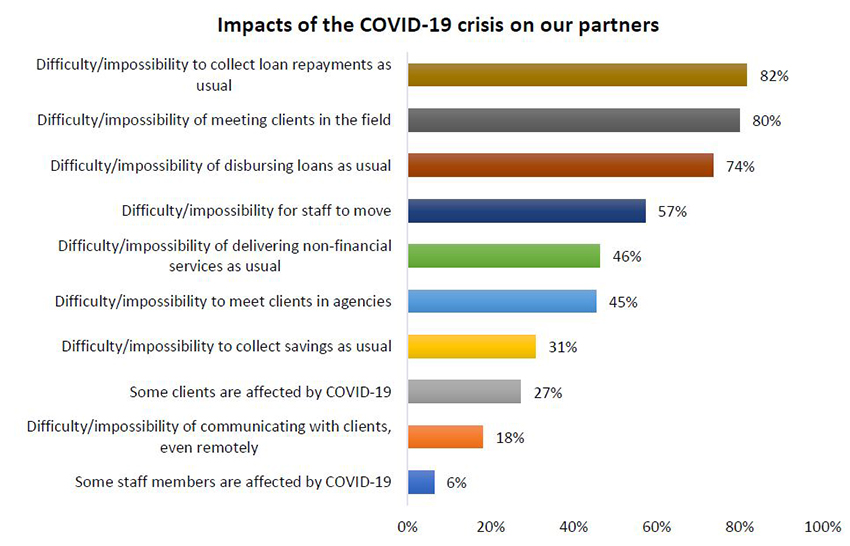
On the other hand, for 94% of our partners, communication with clients does not seem to be a significant difficulty. This may be due, as detailed below, to the significant use of digital systems and technology for remote communication. Likewise, 94% of MFIs reported that their employees are not contaminated with COVID-19. This represents a very satisfactory result of the measures taken at the beginning of the crisis by our partners for the protection of their staff. (8)
MFIs have faced different financial difficulties due to COVID-19
For 91% of our partners, the increasing portfolio at risk is the most significant financial difficulty they have had to face due to the pandemic. This is a difficulty present in all regions and all sizes of MFIs, however, it concerns 100% in partners located in the MENA region, 93% in those present in SSA and Asia, 91% and 86% of those located in the EAC and LAC regions respectively.
The outstanding portfolio reduction is also a relevant difficulty for 80% of our partners. This is mainly important for 93% of those located in the SSA region and 86% of those present in LAC.
The increase in the costs of materials and equipment and the lack of liquidity were difficulties faced by 46% and 39% of partners respectively.
“We think we may not have adequate funds for disbursements end of June if the situation improves in the field” – Partner in South Asia
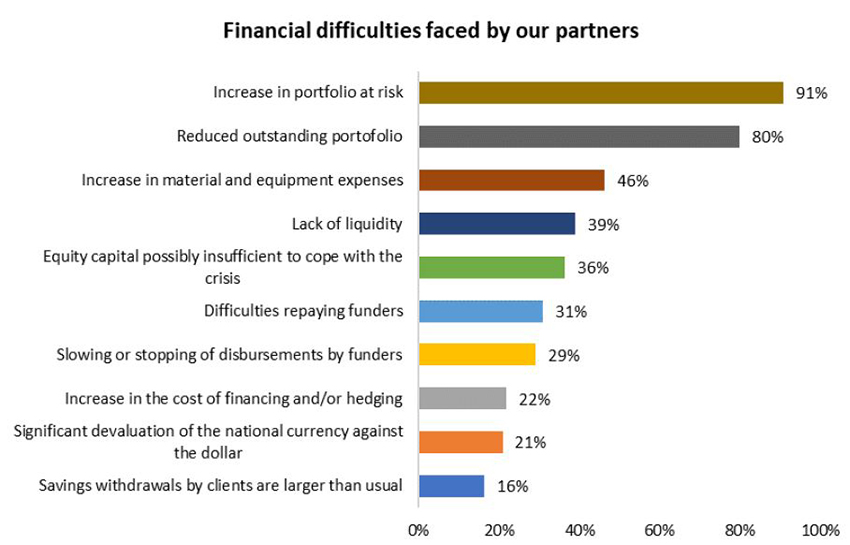
PAR 30 is already at this stage a major concern
80% of our partners indicated that their PAR 30 has increased due to the COVID-19 crisis. However, for 12% of the partners it has increased twice and for 25% of partners the PAR 30 has more than doubled. For 43% of the partners it has increased without being double. The partners mainly located in Asia, LAC and EAC are those who consider that their PAR 30 has increased without even reaching double, while most of the SSA partners reported an increase in PAR 30 of more than double, followed by partners in the MENA region.
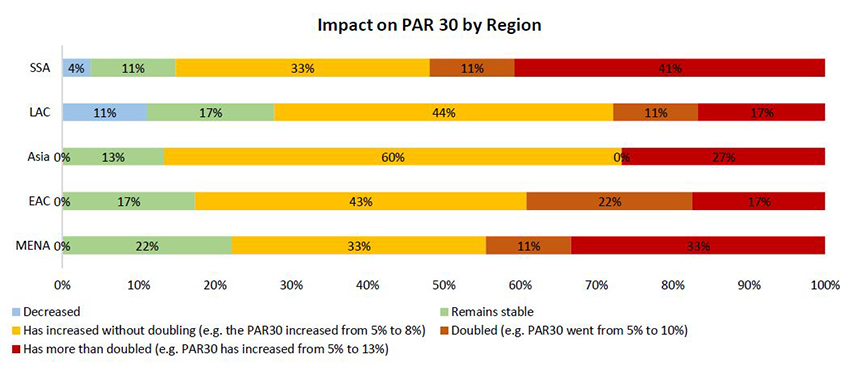
Strategies used to mitigate the crisis: From credit restructuring to the use of technological means
Our partners implement different financial measures and operations to mitigate and adapt to the crisis. 75% of them, mainly those located in Asia (87%), have carried out the credit restructuring with their clients. 65% of partners have slowed down or stopped the disbursement of credits. This measure has been mainly implemented by partners located in the LAC region (78%) and less used by those located in the MENA region (44%).
“Analysis of rescheduling requests in order to be able to accompany them with emergency loans but this is really on a case-by-case basis”- Partner in West Africa
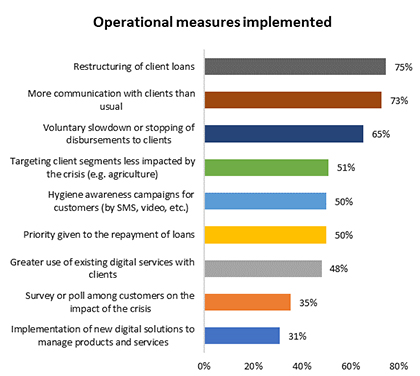 Another relevant strategy is the orientation of loans to clients in sectors less impacted by the crisis (for example, agriculture). This is a measure carried out by 51% of the partners, mainly those located in the SSA and EAC region. In addition, 50% give priority to repayment of credits.
Another relevant strategy is the orientation of loans to clients in sectors less impacted by the crisis (for example, agriculture). This is a measure carried out by 51% of the partners, mainly those located in the SSA and EAC region. In addition, 50% give priority to repayment of credits.
Likewise, communication with customers is a priority strategy among our partners. 73% have increased communication with clients and 50% have hygiene awareness campaign for clients (by SMS, video, etc.).
Technology is used as an important tool to face the crisis. Partners use existing digital solutions (by 48% of partners) or new solutions (by 31% of partners) for communication with customers as well as the management of financial products and services.
“We plan to improve the use of digital approaches to service provision, help clients for product marketing and business diversifications (…)”- Partner in South Asia
Strategies for the management of human talent: From hygiene measures to the use of technological means
90% of the partners have made the provision of sanitary equipment to staff. Office hygiene and disinfection measures are carried out by 82% and 70% of partners, respectively.
The organization of work times and travels to the field is indicated as another measure of great importance. 71% of the partners, mainly those located in the MENA, LAC and Asia region, implemented telework as much as possible. 66% of partners restricted or prohibited movement in the field. 54% of the partners, mainly located in the MENA and LAC region, have reduced working hours and 52% of them have reduced customer service hours in the agencies.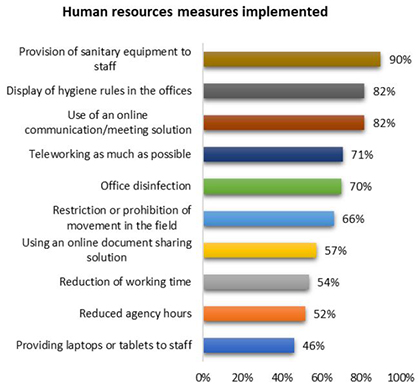
The use of digital to maintain communication and work activities with employees is also relevant. 82% use online meeting solutions and 57% use an online document sharing solution (mainly MENA and LAC partners). In addition, 46% provided their employees with work laptops or tablets (mainly those located in the MENA region, 78%).
“We established 2 WhatsApp communication groups with the staff (one for Singhala speaking and one for Tamil speaking). Then we had regular communications with them during the lock down” – Partner in South Asia
Crisis management measures
It can be considered that our partners carried out two main types of measures to manage the crisis COVID-19 in a relevant way. The first group contemplates the development of the following internal actions for the analysis, monitoring and follow-up of the effects of the crisis: 78% of the partners established an ad hoc management committee to monitor the crisis. These measures were particularly priority among partners in the SSA and MENA region. 75% of the partners, mainly those located in the Asia and SSA region, prepared a Business Continuity Planning. 74% of the partners, primarily those located in the EAC and MENA region, updated the Liquidity Plan. Furthermore, 65% carried out worst-case scenario simulation, this action being carried out more in the MENA region than in the SSA region.
In the second group are management measures aimed at requesting support from third parties. 53% of partners, mainly those located in MENA and LAC, requested financial support from funders / partners. 52%, notably those located in the MENA region, negotiated with Lenders to arrange loan repayment. Additionally, 37% of partners, particularly those located in Asia and SSA, requested technical support from funders / partners. These three actions have been less developed by partners located in the EAC region, of which the request for technical assistance seems to be the least relevant.
Additional funding needs from lenders: What is expected in the coming months?
30% of our partners stated that they had no additional financing needs and 12% indicated that their needs have decreased. These responses come mainly from partners located in the EAC region.
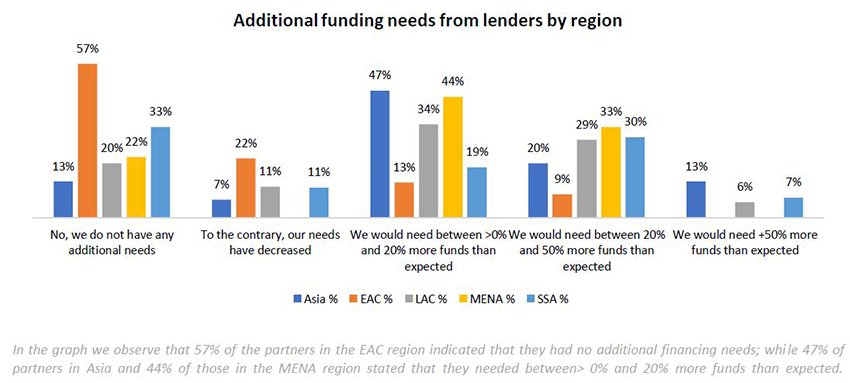
In contrast, 58% of the partners indicated that they would need financing for amounts greater than expected. Of these, 28%, mainly those located in the Asia and MENA region, reported that they would need between> 0% and 20% more funds than expected. 24%, mainly those present at MENA, stated that they would need between 20% and 50%. And 6% of partners, particularly those located in Asia, reported that they would need> 50% more funds than expected.
Looking forward to the near future: new markets or products
At this stage, the majority of our partners, equivalent to 57%, expressed interest in focusing their activities more on the Agricultural sector. This purpose seems to be particularly more relevant among partners in the SSA, Asia and EAC regions. This may be due to the increase in the needs of customers in this sector or to its identification as one of the production sectors least affected by the COVID-19 crisis (aspects already envisioned in the articles elaborated by Inpulse and the Grameen Credit Agricole Foundation) (9).
This assumption will be important to investigate in the following survey since the Agricultural sector let converge relevant economic, social and environmental factors, such as the allocation of an important part of the portfolio of our partners; the generation of significant amounts of jobs in some countries and the potential negative effects of climate change.
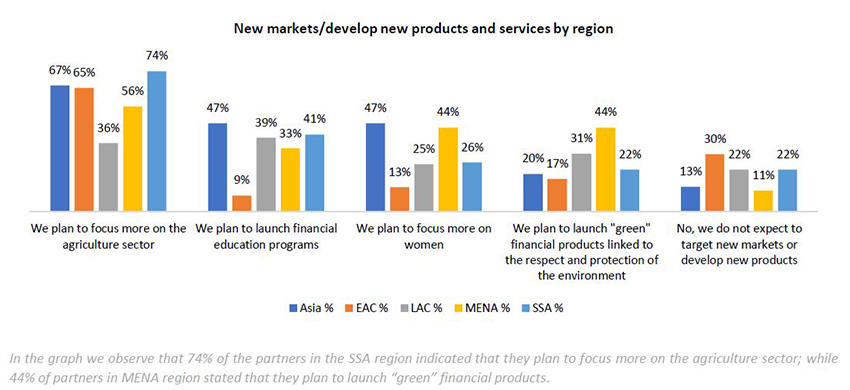
On the other hand, 37% of our partners plan to launch financial education programs and 27% plan to focus more on female clients.
“We plan to promote digital education for women clients (digital culture)” – Partner in South America
These are sectors that are traditionally addressed in the microfinance sector, however, 25% of our partners also indicated the interest in launching “green” financial products related to environmental protection. Could this interest demonstrate the increased awareness of our partners about the environmental problems linked to their actions? Does this represent the boost of green microfinance due to the COVID crisis? What type of green products would our partners be targeting? These are questions that could also be relevant to investigate in our next survey.
In contrast, the launch microinsurance related to hygiene, life, health or environmental risks does not seem relevant among our partners. Finally, 22% of our partners do not plan at the moment to focus on new markets or develop new products.
_____________________________________________________________________
(1) //www.ada-microfinance.org/fr
(2) //www.inpulse.coop/
(3) The regions and subregions addressed are: Asia (South Asia and South East Asia), EAC (Eastern & Southern Europe and Western and Central Asia), LAC (Caribbean, Central America and South America), MENA (Middle East and North Africa), SSA (Central Africa, East Africa, Southern Africa and West Africa).
(4) The total number of MFIs that responded to the survey for each region are Asia:15, EAC: 23, LAC: 36, MENA: 9, SSA: 27. For a total of number of 110 institutions.
(5) This classification corresponds to the one traditionally used in the microfinance sector, more information here
(6) “Propagation analysis and prediction of the COVID-19” here
(7) These measures according to Inpulse and the Foundation articles were mainly focused on hygiene awareness campaigns as well as teleworking
(8) Idem

New signatories to protect microfinance from the Covid-19’s economic effects

In response to the health and economic crisis caused by the Covid-19, a group of lenders, platforms and key players of the inclusive financial sector committed to a common pledge: “Key principles to protect microfinance institutions and their clients in the Covid-19 crisis”. Initiated by the Grameen Crédit Agricole Foundation, this pledge was built in consensus between all original signatories. The objective is to protect both the microfinance institutions and their clients to ensure the continued access to funding in the best possible conditions and to look out for clients’ and staff well-being.
The pledge aims to guide stakeholders to better support microfinance institutions and vulnerable clients during this crisis. The main principles of the pledge are the pooling of available information, analyses and anticipations, as well as the concerted implementation of shared decisions. The signatories agree to coordinate policies, technical assistance and resources to help microfinance institutions in this unprecedented crisis.
Since its publication in May, six new organizations have signed the pledge. This initiative now counts 26 signatories active in Africa, Asia, Eastern Europe and Latin America: ADA, Alterfin, Azerbaijan Micro-finance Association, Bamboo Capital Partners, CERISE, CIDR Pamiga, Cordaid Investment Management, Crédit Agricole CIB India, CA Indosuez Wealth (Asset Management), Crédit Agricole S.A., European Microfinance Network, FS Impact Finance, GAWA Capital, Grameen Crédit Agricole Foundation, InFiNe.lu, Inpulse, Kiva, Luxembourg Microfinance And Development Fund, MCE Social Capital, Microfinance African Institutions Network, Microfinance Centre, Rabo Foundation, SIDI, SIMA, Social Performance Task Force and Whole Planet Foundation.
The signatories welcome additional stakeholders to join this common initiative. The coordination of efforts to support microfinance institutions’ actions is essential to overcome this crisis.
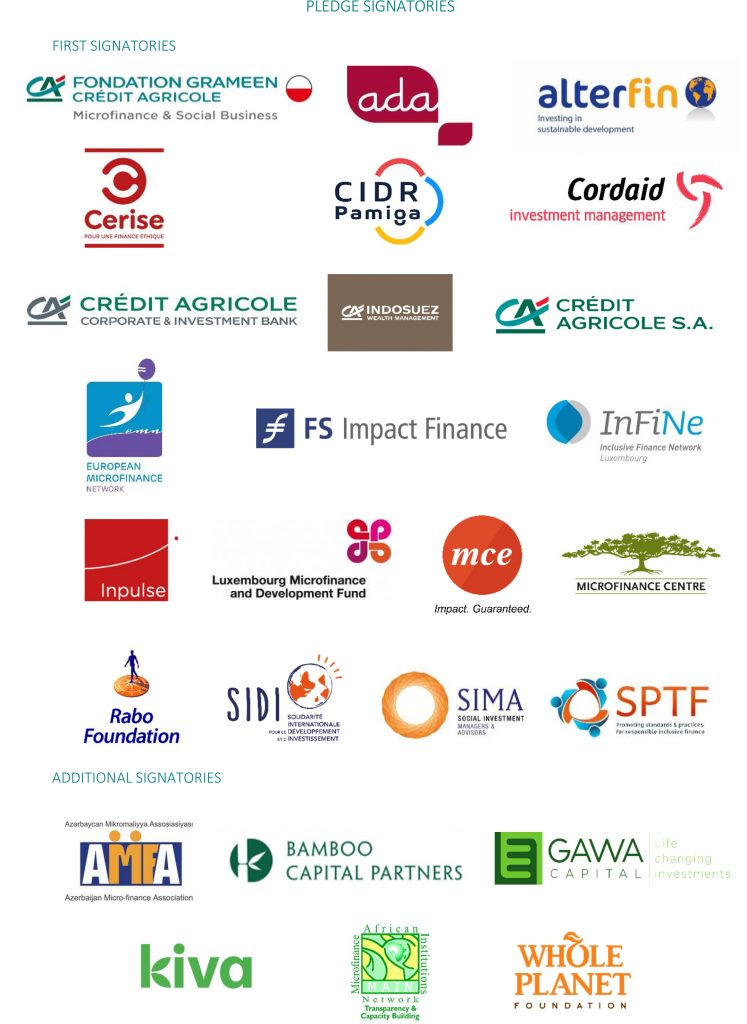
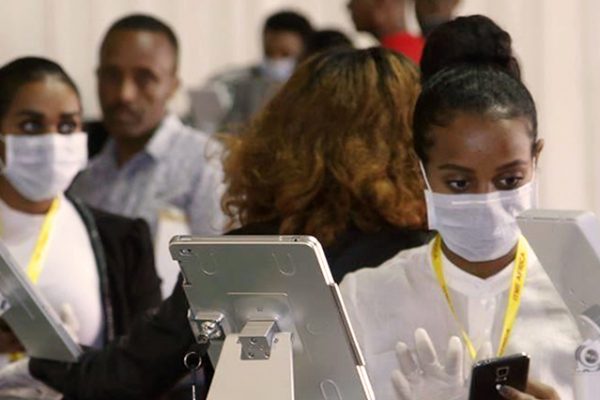
Microfinance institutions’ responsible approach to the effects of Covid-19
By Grameen Credit Agricole Foundation
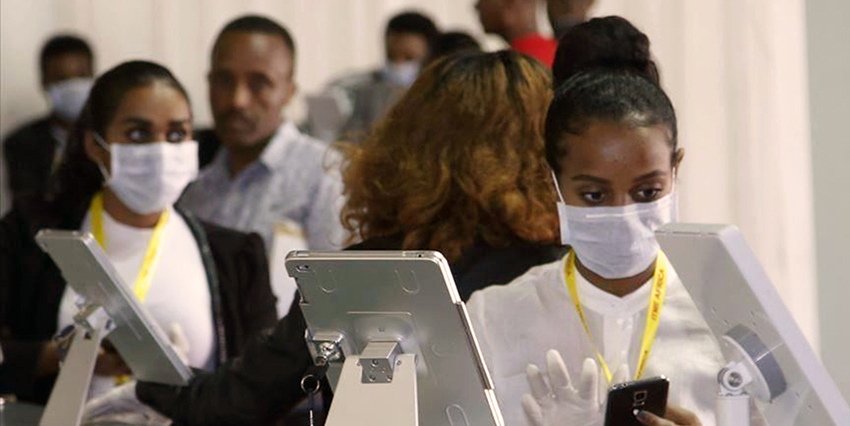
Last April, Africa’s Pulse, an analysis published by the World Bank Group, estimated that economic growth in sub-Saharan Africa would fall from +2.4% to a level between -2.1% and -5.1%, which would constitute the first recession in the region in 25 years. This recession is expected to hit countries dependent on mining and oil exports, while countries without natural resources are expected to post slower but positive growth.
In permanent contact with its network of 80 partner microfinance institutions (MFIs) and social enterprises in 40 countries, the Grameen Crédit Agricole Foundation is continuing its work of collecting information, analysing and sharing its observations. The privileged testimonials of our partners enable us to continue our monitoring of the crisis and its consequences. In this last questionnaire we focused on two particular aspects: the operational adaptations of MFIs and the role of loan officers during this crisis.
In summary
The economic crisis has become a reality for the vast majority of microfinance institutions supported by the Grameen Crédit Agricole Foundation. Almost all of them have implemented massive maturity extension programmes to facilitate the economic recovery of their borrowers.
The loan officers of these institutions are the privileged point of contact between clients and microfinance institutions. They spend almost half of their working time studying requests for loan maturity extensions and implementing such extensions.
The institutions were quick to adopt programmes intended to reduce their costs while ensuring the social protection of their employees and safeguarding jobs. Only 12% of them have resorted to economic redundancies, which is relatively low compared to national averages. On the other hand, the institutions are postponing their recruitment programmes as well as a large part of their investments. They also seem to be seeking to direct their funding towards sectors that are now considered less risky. This is particularly the case in agriculture, in what is a recent phenomenon.
It remains to be confirmed and will be followed up closely in our next news items.By looking proactively for bulwarks against the crisis and by adopting responsible approaches, MFIs are on the right track: today’s innovative solutions can be tomorrow’s successes as well.
Institutions are henceforth focusing on risk management
Whereas the health crisis seems to be slowing down in the countries that have adopted the most effective measures, the plans for exiting from the lockdown point to a very gradual recovery in economic activity. Our latest results confirm what we have been observing for several weeks: a remarkable adaptability on the part of microfinance institutions in the face of an unprecedented crisis.
Nearly 90% of the institutions have set up a crisis committee, chaired by the Chief Executive Officer and bringing together the management committee, to steer the various decisions and deal with the effects of the crisis. This committee usually meets every week.
“[We created] a “Crisis Management Team” composed of the Executive Committee members and supported by the Chairperson of the Board whenever required. [We have] weekly meeting with the Board of Directors to update on the situation and validate the main decisions”– Partner in Myanmar
The effects of the crisis are now being felt by 81% of the partners surveyed, who report an increase in risks to their customer portfolio. The efforts of microfinance institutions are now focused mainly on responding to this challenge, to the detriment of other activities that are currently considered less essential (nearly one out of two were providing this type of service at the beginning of April, compared to one in three today). Intended to provide non-financial services (awareness and information campaigns, provision of equipment, etc.) this reduction in activity has fuelled strong growth in activities dedicated to credit restructuring.
“To support our clients during the coming months, proposition of suspension of principal and interests instalments to all customers that were not in PAR as of March 1st. To date, 75% of the customers called have accepted. The process will continue.” – Partner in Ivory Coast
Institutions are adapting on the financial and economic activity fronts
The table below shows the progression of the difficulties encountered and the mitigation measures implemented to address them.
On the financial front
Against this background, the volatility of currencies is weighing heavily on the treasuries of institutions: 64% of respondents outside the CFA Franc zone are thus faced with a strong devaluation of their local currency against the dollar. This devaluation has a direct impact on institutions that have taken on debt in that currency since the vast majority of them receive microcredit interest in local currency.
“The situation is becoming even worse with significant KGS devaluation over the last months, contributing to increase the hedging cost” – Partner in Kirgizstan
The information provided by our partners in this survey also confirms the quasi-mandatory measures taken by MFIs during the crisis: 67% of the MFIs surveyed have reduced or stopped microcredit disbursements. In the same proportion, institutions have started to restructure loans to small borrowers on a massive scale by granting maturity extensions of 3 months on average. These moratorium periods constitute a truly essential element of crisis management at all levels. Whether mandated by local regulators or proposed spontaneously by the MFIs, they enable borrowers to benefit from a reduction in charges before resuming their activities. Similarly, the many processes of maturity extensions for investors enable the MFIs to retain valuable liquidity in a period of uncertainty. The Grameen Crédit Agricole Foundation consequently granted numerous maturity extensions in April, in full and effective consultation with other lenders.
For all that, the crisis has not affected MFIs’ proactivity, but is encouraging them to adapt. To do so, some are looking for more resilient sectors in the current economic crisis. For example, we have noted that 40% of institutions are considering turning to the agricultural sector — a sector that has been rather neglected because it was considered riskier before the crisis. This point will be followed up in particular in the next questionnaires as this percentage seems to us to mark a notable change in attitude. This new direction is being considered by more than half of the MFIs whose agricultural loans do not exceed one third of their portfolio, but also by very rural and agricultural MFIs. It is still too early to say, but the current crisis could encourage institutions to discover traditionally neglected sectors.
“[We] move ahead with plans on Rural & Agriculture Finance” – Partner in Sierra Leone
On the economic activity front
As to economic activity, the difficulties in moving teams around are diminishing somewhat: 55% had difficulties in May, compared with nearly 80% in April. Conversely, group meetings are still banned, and such prohibitions are on the increase, which penalizes the relationship processes of the institutions, especially with clients who have no alternative to solidarity loans.
“Group meeting was weekly or bi-weekly for repayments and social network. Without group meeting you cannot enforce the repayment any more”. – Partner in Kenya
In social terms, only 12% of those surveyed have had to part with employees since the beginning of the crisis, which is quite low, however, compared to the national average growth in unemployment figures. Our partners seem to follow the first principle set up by SPTF (1) “Keep staff employed” according to which “today’s employees will be tomorrow’s assets”. For a large number of our partners, parting with employees in critical times seems to be more of a loss than a slight short-term economic gain. On the other hand, expectations are already weighing on the growth and development projects of our partners since almost one institution in two has put these ongoing recruitment projects on hold. This uncertainty weighs also on organisational projects, with 41% of the MFIs surveyed having decided to postpone this type of internal project.
The protection of staff is always a point of vigilance with 90% of the MFIs that continue to provide them with significant resources and remind them of barrier gestures. Since the beginning of the crisis, our partners have taken quick decisions to reduce the weight of their fixed costs and limit the risk of exposure to the health crisis: mandatory paid holidays (52%), teleworking (62%), team rotation, reduced working hours (57%) and reduced branch opening hours (52%). The level of progress in internal digitization in some institutions has favoured these organizational changes. This is particularly the case for our partners in Europe and Central Asia, who benefit from numerous electronic and online tools.
“Most of us from the head office have been working distantly, thanks to our proper remote IT system which enables all the departments continue smooth working.” – Partner in Georgia
The current crisis, which, as we have seen, limits the “business as usual” capacities of MFIs, has led us to explore how to adapt the job of loan officer, which is at the heart of the microfinance business. Certain tasks remain the same, particularly for MFIs in the least affected countries: loan disbursement (43%), repayment monitoring (38%) or client file analysis (43%).
The restructuring of loans in progress is taking an increasingly important place in the daily life of loan officers (43%), with the encouragement to use mobile payments (36%) and the drafting of amendments relating to maturity extensions (31%).
Just as in the retail banking sector, where the client officer has clearly demonstrated its importance in times of crisis, the loan officers of microfinance institutions are the privileged link for clients. 81% of respondents say that the key role of loan officers is to maintain contact with clients and/or credit group leaders.
“[We] maintain contact with all individual clients, group leaders and Village Bank Presidents through digital and phone channels.” – Partner in Zambia
“Strengthening client interaction by (smart) phone or other digital devices and collecting through group leader where possible.” – International MFI network
This essential and massive approach is to be favoured all the more as it is recognized by the Social Performance Task Force (SPTF) in its crisis management principles as being essential in times of client fragility. It is also worth noting that 33% of the MFIs have initiated surveys of their clients to gain a better understanding of their needs and propose adapted offers and services. For nearly half of the MFIs (43%), the advisors also play the role of “health advisor” by reminding them of good hygiene measures, which is the case in West Africa and Europe in particular.
”One of the best investments you can make right now is to maintain close contact with your customers. Many can’t make payments, but they are valuable assets just the same.” – SPTF
______________________________________________
(1) STPF is a non-profit association that engages with stakeholders from the inclusive finance sector to develop and promote standards and good practices in social performance management.
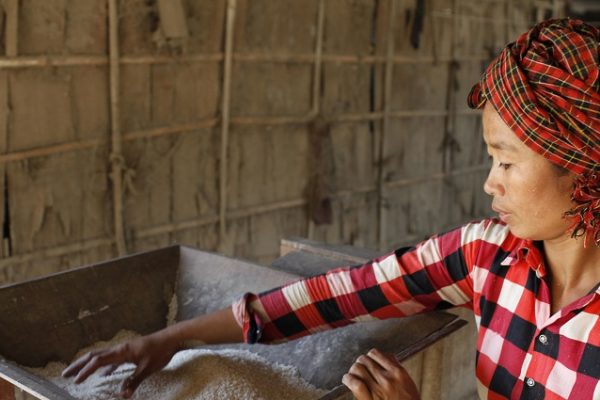
An international coalition to protect microfinance institutions and their clients in the Covid-19 crisis
By the Grameen Credit Agricole Foundation
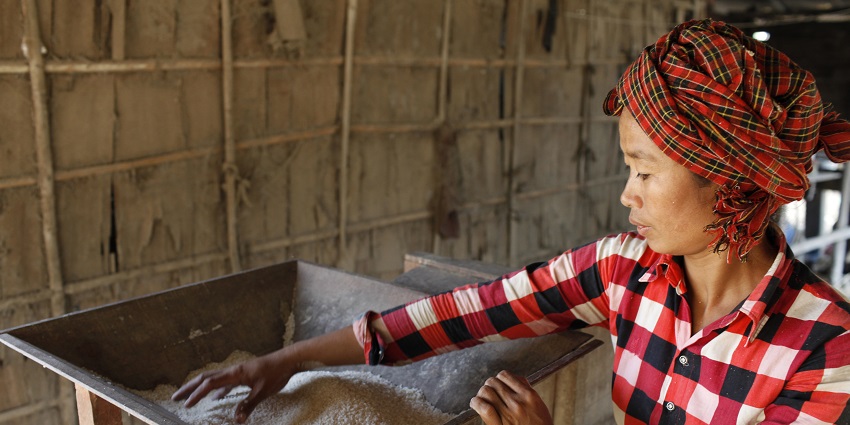
At the initiative of Grameen Crédit Agricole Foundation, a group of microfinance lenders and key players in inclusive finance worked on a set of principles to better support the microfinance sector in the health and economic crisis caused by the Covid-19. Grameen Crédit Agricole Foundation, ADA, Alterfin, Cerise, CIDR Pamiga, Cordaid Investment Management, Crédit Agricole CIB India, CA Indosuez Wealth (Asset Management), Crédit Agricole S.A., European Microfinance Network, FS Impact Finance, InFiNe.lu, Inpulse, Luxembourg Microfinance And Development Fund, MCE Social Capital, Microfinance Centre, Rabo Foundation, SIDI, SIMA and Social Performance Task Force are the first signatories of a common pledge that aims to support microfinance institutions and fragile clienteles during this crisis.
Worldwide, microfinance institutions provide financial and non-financial products and services to over 140 million low-income clients [1]. Microfinance is key to finance income-generating activities, not only in the formal but also in the informal sector. In the Covid-19 crisis, both micro-enterprises in the informal economy and small businesses overall form an essential basis for social and economic recovery. Supporting microfinance institutions in this context is therefore of vital importance to protect the most vulnerable borrowers.
In response, this group took on the challenge and established a common pledge: “Key principles to protect microfinance institutions and their clients in the Covid-19 crisis”. It aims to guide lenders and other stakeholders to better support microfinance institutions and fragile clienteles during this crisis. It is inspired by best practices and tools of the microfinance sector, such as the work done by the Social Performance Task Force [2] and the IAMFI Microfinance Voluntary Debt Workout Principles [3].
In this pledge, the pooling of available information, analyses and anticipations, as well as the concerted implementation of shared decisions are the fundamental principles. The signatories agree to coordinate policies, technical assistance and resources to help microfinance institutions face the crisis. The objective is to protect both the microfinance institutions and their clients to ensure the continued access to funding in the best possible conditions and to look out for clients’ and staff well-being.
As individual obligations and mandates may influence the way the provisions of the pledge are implemented, it is not intended as a legally binding agreement. This is not a frozen document; it could be improved if necessary to better respond to the evolution of the crisis. The pledge’s signatories will maintain open communication with their peers, to share their decisions and to comply with these principles.
The signatories welcome additional stakeholders to join this common and engaged initiative. The involvement of private, public and solidarity players is key in the global assessment and support to the microfinance institutions’ actions. It is essential to reinforce the impact of financial inclusion to fight poverty in this unprecedented context.
—————————————————-
[1] Microfinance Barometer 2019
[2] //sptf.info/resources/covid19
[3] Charting the Course: Best Practices and Tools for Voluntary Debt Restructurings in Microfinance, IAMFI, Morgan Stanley, 2011. The document is available on Findev Gateway
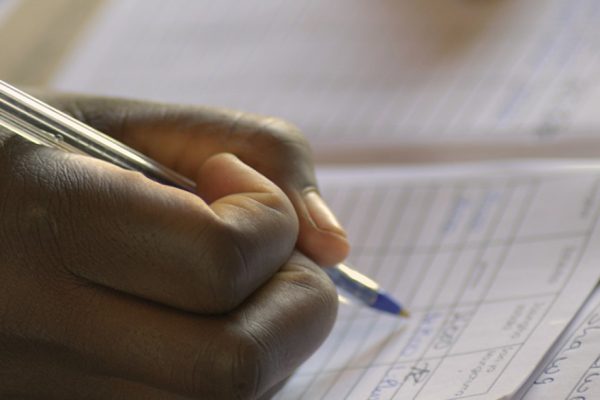
Digital and microfinance sector in the face of the health crisis
By Grameen Credit Agricole Foundation
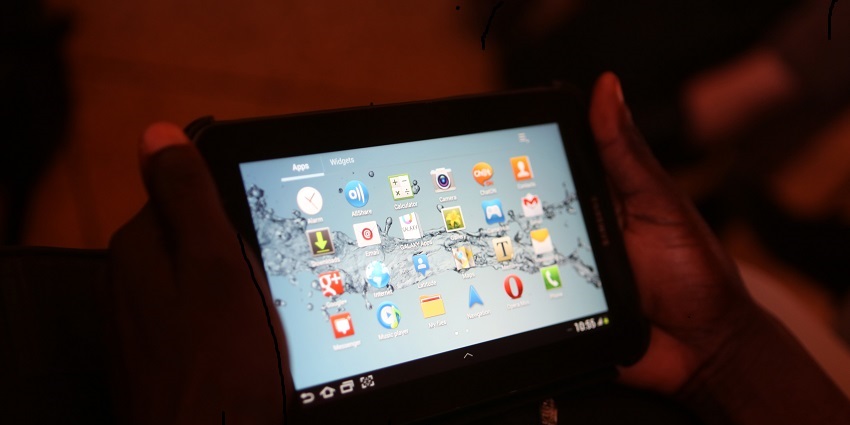
The deployment of an ad hoc observatory to monitor the effects of the health crisis in relation to 80 microfinance institutions (MFIs) and social business partners in some forty emerging countries enables us to collect information regularly so as to share it and draw the best lessons from it.
This week we have monitored more specifically how microfinance institutions used their digital channels to overcome their difficulty of direct contact with borrowers which traditionally takes place either in the MFI branch or in group meetings or even during the disbursement of funds (microfinance uses mostly cash when disbursing the borrowed sums) or the monitoring of the projects financed.
According to the survey we conducted in the beginning of April, 68% of partner microfinance institutions indicated that they have made greater use of digital channels to overcome contact difficulties, as a result of lockdown or group gathering prohibition measures. This strong growth in use observed in the traditional finance sector can be seen also in the microfinance sector which has had no alternative but to adapt.
The technological means and processes, including digital tools, are being developed rapidly by institutions of all sizes (the smallest with client portfolios of up to $10 million, and the largest well over $100 million). Since the beginning of the crisis, institutions have been producing business continuity plans, as the basis of new discussions and exchanges for their funding backers, in which they frequently include new digital applications.
For most institutions, the first step entails raising awareness among clients about the possibility of using remote payment methods. This step is implemented through SMSs (which are particularly suitable for 2G network coverage) but also through the social media – the telephone network permitting.
“[We] encourage clients through SMSs to utilize mobile money platforms for repayments as it is the safest mode at the moment.” – Partner in Uganda
”[We] start informing our clients by social media and SMS on possibility of repayment via terminals, mobile wallets, plastic cards and Internet banking” – Partner in Tajikistan
For many MFIs which did not yet have it in their range of services, the first process developed rapidly at the beginning of this health crisis was that of electronic money payments. This practice of remote payments is encouraged by many regulators, such as the Bank of Central African States (BEAC) for the countries under its authority or the Central Bank of West African States (BCEAO), which decided to reduce transfer and use fees for this form of currency. This implementation of remote payment is accompanied by mass mailings of information to clients to explain the new procedures.
“Sending bulky texts to customers to remind them how to use the mobile money code to make their loan repayments and also the hotline they can call for help or complaint.” – Partner in Uganda
These remote services enable customers to pay their instalments without having to travel (and therefore to use public transport) by using the pay station network of telephone operators which is generally dense and available even in rural areas.
The implementation of these means of payment also makes it possible to disburse loans to the electronic portfolios of clients, as the latter go to said pay stations not to pay their instalments but to obtain cash disbursements of their microcredits. The use of mobile money therefore makes it possible to continue the financing activity during a lockdown period.
“The Palestine Monetary Authority is urging all MFIs to start disbursing loans to income generating projects through digital channels with lower interest rate.” – Partner in Palestine
Yet, as astonishing as it may sound, this crisis is seen by some institutions as a real opportunity to accelerate the deployment of digital platforms and to launch new services in order to make headway in operational optimization and even excellence in customer relations. For the managers of these partner institutions, having to invest in digital tools for reasons that are “vital” for their institutions at this time seems to be a means of accelerating investment plans that they had been thinking about before the crisis broke out. It thus enables them to embark on modernizing their distribution mode and their processes, which has come as a pleasant surprise to us, even though we are well aware of the vitality and capacity for innovation of our partners.
“This was contemplated prior to the COVID issue […]. However, discussions are ongoing with regard to the possibility of [the mobile payment solution] being launched to all clients.” – Partner in Sri Lanka
“In times like this when anything can be a source of transmission for the deadly virus, it is prudent that less physical cash is handled. [We] used the opportunity to pilot [our platform] in order to look out for the shortfalls and the loopholes in the system.” – Partner in Ghana
The economies of certain countries that were already highly digitized, as is the case in East Africa, for instance, seem to be more resilient to the effects of the crisis. Microfinance institutions operating in these areas have shown remarkable adaptability. By way of example, the Kenyan economy, which is particularly open to payment, financing and investment operations using digital wallets, is running according to remote uses that minimize the risk of spreading the virus.
”Kenya is better prepared than others because of the high penetration of mobile money. The concept is accepted widely by the public” – Partner in Kenya
Many institutions tell us that they will be more structured and more effective in the aftermath of this crisis. These experiences, which are sometimes vital to the continuation of their activities, seem to be very useful to them for operational performance gains in the future.
”Our team will tailor mobile app to add a feature enabling to apply for loan restructuring remotely. […] We introduced a new criterion in our monitoring tool – “emergency (coronavirus)” meaning the loan officers will have to monitor their customers remotely, and get information and enter monitoring data into the software” – Partner in Kazakhstan
“The new strategy will focus on transforming [our] current mode of operations to embrace more digital solutions, decreasing the need for physical interactions between employees and customers, and replacing cash transactions with mobile payment functionalities.” – Partner in Georgia
These positive effects of digitization, which have been achieved by microfinance institutions thanks to forcibly imposed developments can also be found in social enterprises in our equity portfolio. The digitization of the operational processes is a very effective means for combatting the constraints of the lockdown for companies that have to deal directly with the public or with suppliers of raw materials. This is the case, for instance, of a Senegalese company which, thanks to digital payments, has managed to continue its milk collection and sale of dairy products and to generate growth that has exceeded the forecasts.
For another social enterprise specializing in drinking water treatment, the health crisis has also led to the development of home water delivery following an order placed online.
Our partners are aware that the use of digital technologies is not a global solution to all the issues raised by this systemic crisis. They expect their customers and their operations to run into economic recovery problems in fact, where the digital dimension can only be of an altogether relative help. Despite the more and more intensive use of digital channels, the commercial activity of microfinance institutions is slowing down. They are all focusing on providing guidance and support to their customers by taking care to cope with the increasing number of requests for maturity extensions, while maintaining risk control and a good operational quality.
In some areas, the supervisory authorities have issued directives or strong recommendations for MFIs to grant moratoria to their clients that could last for several months, which entails a very high level of activity for the institutions.
In the majority of the testimonials we have collected, however, the health crisis is seen as a sequence that requires the different Management Committees of our partners to give serious thought to the operational performance under constraint. Our partners are convinced that the experiences they have gone through and the solutions found to deal with the health crisis will prove very useful “the day after.”
___________________________________________________________
Discover more articles on: COVID-19 Observatory.
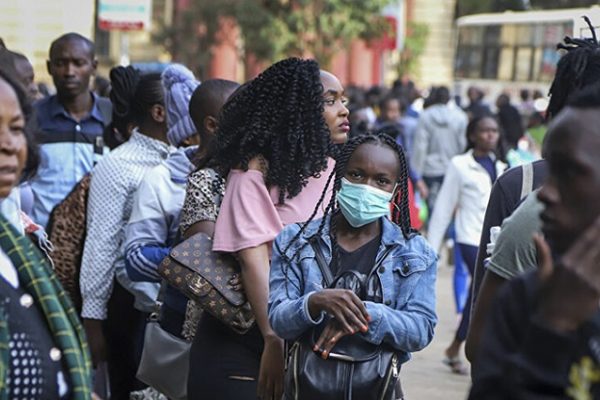
International microfinance institutions anticipate the first effects of a recession
By Grameen Credit Agricole Foundation
The crisis is beginning to take its economic toll
A few days after our last publication, the impact of the coronavirus continues to expand and intensify. The milestone of one million infected people worldwide has been passed and new outbreaks of the epidemic are being confirmed.
In constant contact with its network of nearly 80 partner microfinance institutions (MFIs) in 40 countries, the Grameen Crédit Agricole Foundation continues its work of collecting information, analysing and sharing its observations. Over the past few days, we have focused our monitoring efforts on the consequences of the crisis and the work of the MFIs to deal with it. Such information is very important. It enables us to take the most relevant decisions at our level for the management of the Foundation, for the support of our partners and the effectiveness of our action as close as possible to their difficulties and anticipations. It also contributes to the sharing of information by and between the stakeholders of this sector who are getting collectively organized in these times of crisis.
The results we have obtained confirm the trends identified in the information provided in the first weeks: the crisis is very hard, undoubtedly beyond our initial forecasts in early March, but the resistance is being organized. The effect of the health crisis is systemic. No stress model had anticipated it. The response will therefore have to be systemic, too, if we want to avoid a major failure in this sector.
Small-scale outreach activities are sliding into recession
78% of our partners are seeing the first effects of the economic recession on their areas of activity.
In the first feedback we received, rural areas seemed to be escaping the first effects of the crisis, especially in food-producing regions. By now, irrespective of the size of the institutions (the smallest have a financing portfolio of less than $10 million, and the largest over $100 million)) and their geographic location, they are all, more or less, faced with similar problems: the inability to travel (74%), the drop in disbursements to borrowers (77%), and the ban on group meetings (63%) are the reasons most cited by our partners for the slowdown of their activity.
“As indicated in the first analysis, the expected direct impact (up to 6 months) is a possible deterioration in the quality of the portfolio in the tourism, transport and hotel sectors, as well as loans financed by remittances from abroad. A medium-term impact is also expected due to the general slowdown in the economy and the reduction of solvent customers.” – Partner in Georgia
More than a third of our partners are under almost total lockdown (36%) and the rest are adapting to restrictive pre-lockdown measures.
“[Our] activities have been significantly affected so far, with client businesses primarily affected by general public fears and more directly by the strict guidelines implemented by the government in an effort to control the spread of the virus. An increase in the cost of living is also expected […]. Imports are declining, production costs are going up. Kenya’s GDP is likely to fall and inflation will most probably rise, which will affect the country’s economy.” – Partner in Kenya
“We see that the government is taking increasing measures to limit travel and commercial activities. For example, a regional government has specified that all microfinance activities in the region should be suspended in April. We are getting similar requests from village authorities in other regions.” – Partner in Burma
Effects that now impact the accounts of institutions
These difficulties are starting to be reflected in the figures of MFIs. For instance, 74% of the institutions explain that their portfolio at risk (PAR 1) has increased compared with the end of 2019. This increase is currently contained to less than 10% in absolute value for 8 out of 10 institutions.
The institutions are clearly accelerating and intensifying the use of digital technologies in order to make up for the fact that sales teams cannot travel and organize out-of-pocket payments. For example, 68% of the respondents say they are making greater use of digital services to carry out their activities remotely.
Loan restructuring operations have already started in nearly one out of two MFIs (43%). The intervention announced by regulators and legislators in the financial sector is confirmed: almost half of the respondents (44%) are encouraged to take the initiative in proposing moratoriums and restructuring operations for the benefit of their borrowers (the countries which have imposed these measures include in particular Kazakhstan, Kyrgyzstan, Sri Lanka, Cambodia, India, Uganda, Burkina Faso, Rwanda, Senegal, DRC, Egypt, Morocco and many countries in Eastern Europe). New initiatives are also being considered such as the introduction of emergency products (such as minimum subsistence) in the coming months.
Institutions are implementing crisis plans
This systemic crisis calls for an in-depth review of MFI business planning and financing needs. Upon closer scrutiny, the increase in maturity extensions granted to borrowers does not yet translate significantly into additional financial resource requirements for the MFIs surveyed. At the time of the survey, 48% of them did not yet see any change in their liquidity needs compared with the projections made for the year, and a third even envisaged a decrease in their needs due to a significant drop in their activity.
At this stage, only one out of five MFIs (19%) is expecting an increase in its financial needs, linked to the increase in the price of inputs (seeds, fertilizers, raw materials …) which will trigger an increase in the financial needs on the part of borrowers, mainly in rural areas of our intervention territories. This prospective analysis has been spearheaded by the major international microfinance networks.
“In addition to the Covid-19 crisis, Kazakhstan has been affected by the sharp drop in oil prices which has weakened the national currency by 380 tenges to 445 to the dollar” – Partner in Kazakhstan
The responses from our partners reveal other factors of concern, in particular their ability to finance their activity: a quarter of them foresee a loss of value of their local currency against the dollar (26%) and a substantial increase in currency hedges in their future funding (23%). One out of five MFIs is already experiencing funding difficulties with their usual donors.
In order to be able to monitor the rise in risks and funding developments as closely as possible, more than half of the MFIs (55%) declare that they have finalized (or that they are in the process of doing so) a Business Continuity Plan that includes precise liquidity monitoring. This responsiveness is remarkable and such plans are an essential element in helping MFIs cope with and manage the consequences of the crisis.
Our analysis shows an apparent correlation in the quality of the Business Continuity Plans following the Coronavirus crisis and the past experience of a serious crisis that has already affected the MFI. The lessons learned from past crises thus seem to play a very important role in the resilience of institutions in the face of a crisis, be it financial, political, health, etc. Many less experienced institutions however also show a remarkable willingness to innovate and an equally remarkable capacity to anticipate.
Donors reacted very quickly also. Drawing on the lessons of past crises they have shown remarkable capacity in the past few weeks to intervene and anticipate in a sector that, all things considered, is still young. International lenders, foundations, investment funds, and local banks in all regions of the world are thus working on joint action plans. A number of meetings are being held around the world to get ahead of the crisis and absorb its effects that would be absolutely devastating without such awareness and rapid and determined commitment. There is agreement across the board on the need for effective information sharing and coordination by and between the various stakeholders. Donors are organizing their action around responses adapted to the funding needs of MFIs impacted by the crisis, but also by providing monitoring tools, technical assistance plans or training to strengthen the capacities of MFI teams in the face of a situation that is as sudden as it is exceptional.
All of these elements remind us to which extent this crisis is a shared concern for all microfinance stakeholders. The involvement and rigour of local institutions, the coordination of international networks, the support of public and private donors and the confidence of investors will be the key values of our collective capacity to overcome the challenge of this health tsunami.
Read more articles on : Covid 19 Observatory.
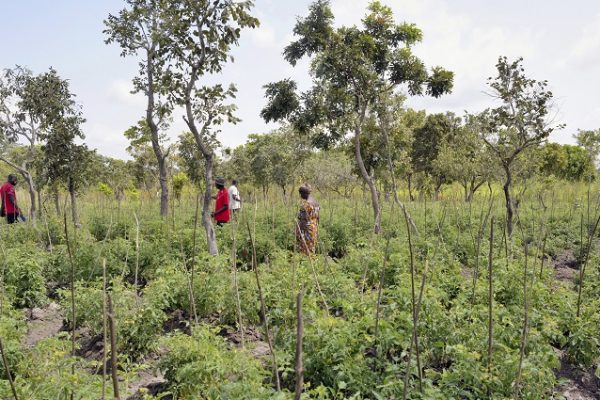
ADA releases a guide to ensure business continuity of MFIs during the crisis
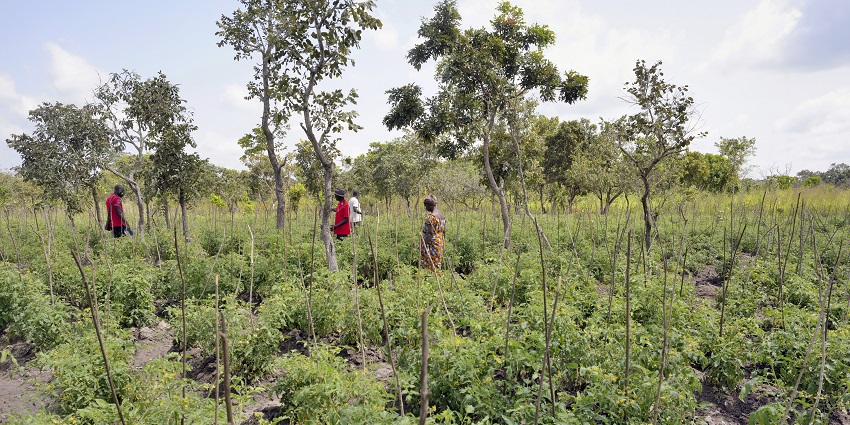
The health and economic crisis generated by the Covid-19 strongly affects microfinance institutions and their clients. To support the microfinance sector in this very particular context, the NGO ADA pursues its mission to promote inclusion for all by leveraging its knowledge and expertise in risk management with a guide of good practices for the continuity of microfinance institutions.
Available in French, English and Spanish, this guide offers recommendations to microfinance institutions to organize crisis management and ensure business continuity.
The document can be downloaded from the ADA website, in a page exclusively dedicated to the management of the Covid-19 crisis, a space which offers partner articles, guidelines, testimonials and videos in order to provide a place to exchanges and sharing of experiences between professionals in the sector.
This guide describes certain points of attention for the analysis and the measures to be taken to organize appropriate crisis management and ensure business continuity in the face of the COVID-19 pandemic.

[INTERVIEW] “Life must go on, we should not lose hope”
Interview with Dara Huot, CEO, Phare Performing Social Enterprise
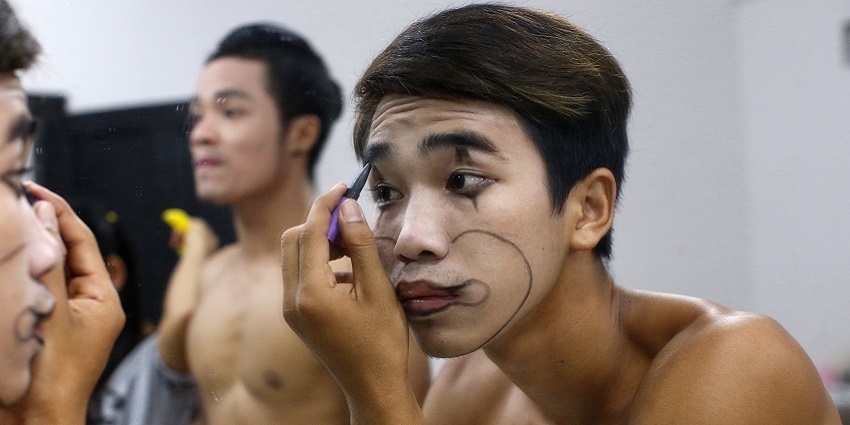
The CambodgeMag interviewed Dara Huot, Managing Director of Phare “Performing Social Enterprise”, partner of the Grameen Crédit Agricole Foundation. He expressed his concerns and hopes regarding the Phare Circus social enterprise.
Since March 17, performances of the Phare circus, one of the main attractions in Siem Reap, but also in Battambang, have been suspended …
Indeed, we had to apply a government decision taken against performance halls. Before that, we had implemented all the necessary measures to disinfect the premises between each performance and respect the distances between the spectators. The temperature was controlled for each person entering the tent, and distributors of alcoholic solution were located everywhere. However, the number of spectators was gradually decreasing. The government decree only precipitated a closure that would have been inevitable.
How did staff react to this closure?
Phare is a very large social enterprise, split between Siem Reap and Battambang. Here we have 40 artists and 70 employees. The Battambang school, which provides circus training, but also graphic animation, dance, painting and theater training, has 110 teachers for 1,200 students. When the closure was decided, we took the opportunity to resume our list of “things to do”, you know, all those little things that accumulate over time and that we generally reserve for the off-peak season.
We cleaned everything, redid the paintings, carried out all the maintenance work… And then, when we finished all this, everyone went home. The vast majority of the staff are from Battambang, so many have joined their families there. All the artists continue to train hard, for the resumption of the shows, but also for the next tours. Some have been canceled, but we hope to be able to carry out the one planned in France for this winter.
Are wages still being paid?
The full wages were paid throughout the month of March. As for April, the wages have been reduced by 50%, and this will be the case for the following months. It is unthinkable to leave our employees without any income, and we do not hesitate to draw on our cash for this. But how much longer can we continue like this? After 3 or 4 months, there won’t be enough money … Especially since we have to keep paying the rents.
Do your employees receive support from institutions?
No, it’s not like in France, where compensation is granted to people who find themselves unemployed. Nothing is planned for them here, and the situation is made worse by the fact that many employees have contracted debts with banks and microfinance organisations. The interest they have to pay back every month is very high, and I don’t see how they will manage. The only hope would be for more flexibility from these organisations in terms of reimbursement. Maybe cutting interest rates, spreading out the due dates or, why not, hanging them off until things get back to normal. A moratorium on rents could also allow many Cambodians to see the crisis pass. As it stands, paying off a loan, paying rent and supporting your family when you have a low salary or, worse, when you are unemployed will be a big problem for a whole part of the population.
How will this crisis change Siem Reap?
Since the city opened to mass tourism, that is to say twenty years ago, the number of visitors has only grown exponentially. The infrastructure did not necessarily follow. The environment has suffered a lot from the increase in traffic, waste is not always well managed, access to water and its quality are still problematic in certain districts. Electricity needs have increased, but there are still many cuts. Why not take advantage of this involuntary “break” to renew yourself, to question yourself and, thus, to embellish the city? We have to stay positive, try to see what we can get out of this ordeal. Life must go on, you must not lose hope, and continue to be positive despite the circumstances. More than ever, we must take care of ourselves and our loved ones, and stay strong. This is important for you, but also for those around you. Everyone hopes that this pandemic will last as short a time as possible. 2019 will have been a difficult year, and 2020 will be much worse. But we will get out of it, and come back, I hope, hardened by this ordeal. Although it will, of course, be very difficult to go up the hill.
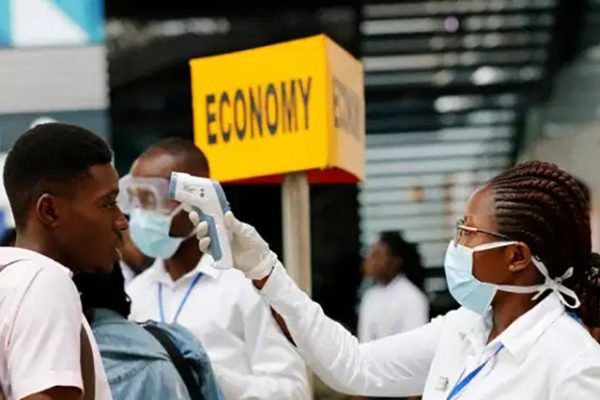
The microfinance sector prepares to face health crisis’ effects
By Grameen Crédit Agricole Foundation
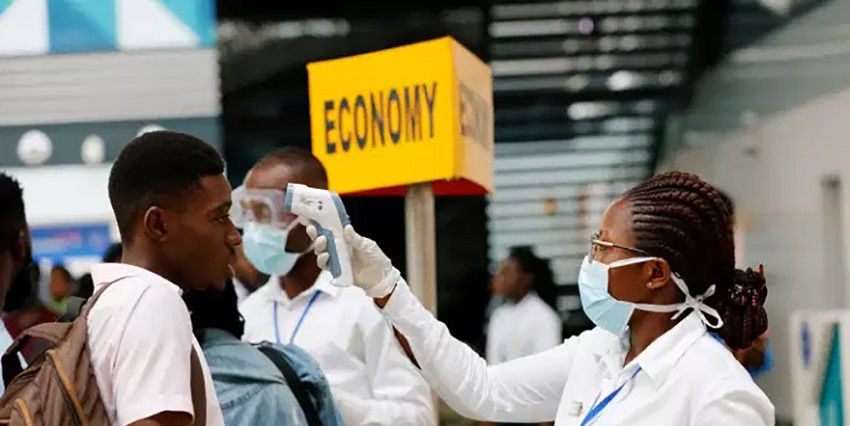
The COVID-19 virus continues to spread around the world with over 450,000 confirmed cases as of March 26, 2020. Governments, even those who deny it, are taking more and more stringent steps to contain the epidemic. As the situation evolves more quickly every day, microfinance players are preparing themselves to face this crisis by taking the first salutary steps.
Following its enquiry launched two weeks ago, the Grameen Crédit Agricole Foundation has established an observatory to constantly update the information collected through daily exchanges with its partner microfinance Institutions (MFIs). The goal is to better understand how to support them, but also to share its analysis with other financial players in the inclusive finance and development aid sector.
Adapting to slow the spread of the virus
MFIs quickly realised the health issue of the crisis. They immediately sought to adjust their operating methods to the contamination risks by adopting recommended barrier actions and launched awareness campaigns among customers and employees.
“Hand washing is mandatory in all branches, with the provision of buckets and soap for everyone entering the office. Hand sanitizers are provided over the counter for all customers who transact with cashiers. […] The process of acquiring protective masks for cashiers is underway. It is strongly recommended that all staff members experiencing symptoms stay at home during the follow-up. We strongly recommended all staff to avoid going to the branches in the light of developments, unless it is absolutely necessary.” – Partner in Sierra Leone
MFIs also had to adapt to decisions taken by local authorities to curb the spread of the virus. Organisations in the most risky areas were therefore forced to partially or completely cease their operations and to close some of their local agencies.
“All operations will be closed as of 12:00 noon on March 26, 2020, in accordance with the announcement made by the President on Monday, March 23 and to allow personnel to return home for the period of confinement. […] Disbursements to customers have been postponed until the end of the period of containment.” – Partner in South Africa
The vast majority of our partners have rapidly implemented teleworking or staff rotation systems. Faced with the numerous prohibitions on groupings, institutions are now working with a representative of solidarity-based credit groups and remain in contact with their customers through instant messaging services.
Digital solutions are particularly adapted to this context. They allow the continuation of microcredit disbursement activities and remote recovery. In a dairy in Senegal, for example, the payment for milk collection to breeders has not experienced any disruption because it has been done for a few weeks via a mobile phone payment device.
“We encourage by SMS our customers to use mobile payment platforms for refunds because it is the safest method of payment at this point in time.” – Partner in Uganda
If MFIs have been able to adapt quickly their operating methods, it is also the time to prepare for the looming economic slowdown. Crisis meetings are increasing in head offices, or through video conferences from managers’ homes, in order to set up continuity plans.
New regulations
A growing number of countries are introducing new credit regulations to cushion the economic shock and the likely insolvency risk of vulnerable customers. Regulators are urging financial institutions to grant deferred payments to their crisis-affected customers, as well as to restructure loans. Such decisions are already beginning to be implemented.
“The government is also implementing measures to help local businesses, such as reducing interest rates. For example, the borrowing rate for secured loans has been lowered by 1%” – Partner in Myanmar
“The Central Bank of Kyrgyzstan has taken the following support measures: 1) cancel the accumulation of penalties for all borrowers; 2) review the conditions for repayment of loans and provide for a delay in payment of at least 3 months upon the borrowers request; 3) when restructuring loans related to changes in borrowers’ cash flows due to coronavirus, institutions should not consider them as bad debts if the cause is health crisis “- Partner in Kyrgyzstan
“The Central Bank has announced that financial institutions must accept all requests for deferrals until April 30.” – Partner in Kosovo
The microfinance sector shows a high degree of responsibility and maturity to face this global crisis. The partner institutions of the Grameen Crédit Agricole Foundation produce regular financial statements and forecast analysis of their financing needs in the coming months. Although we have not yet observed any particular increase, the evolution of portfolio at risk (PAR) levels is systematically subject to a very high degree of vigilance. Multiple exchanges between lenders, specialised non-governmental organisations and microfinance institutions are now organised daily.
The Grameen Crédit Agricole Foundation is in regular contact with its partners and colleagues in a reciprocal effort to pool ideas and resources. We share with our partners, with responsible investment players and with our peers our analysis and best practices implemented by microfinance institutions.
The pooling of available information, analysis and anticipations, and then the concerted implementation of shared decisions are principles that are vital today for our sector. At the cost of this transparency, this concertation and a necessary adaptation of our intervention principles, we should be able to overcome the effects of this exceptional health crisis, which could knock down many microfinance institutions, leaving fragile populations in desperate situations. Because we know the crisis will hit the most deprived populations in the first place. Hard. Let’s work together to live up to the issues of this humanitarian challenge.
___________________________________________________________
Discover other articles at: Covid-19 Observatory.
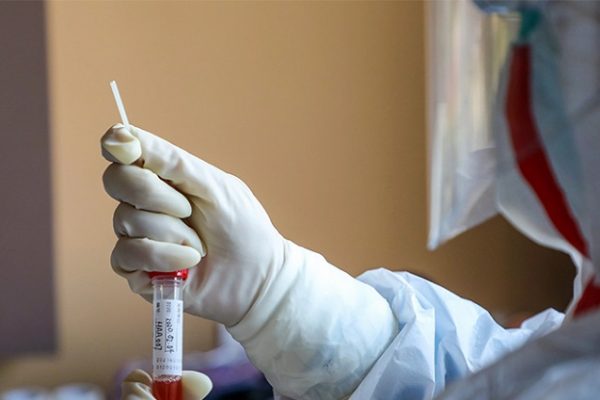
How Coronavirus affects Microfinance sector
By Grameen Credit Agricole Foundation
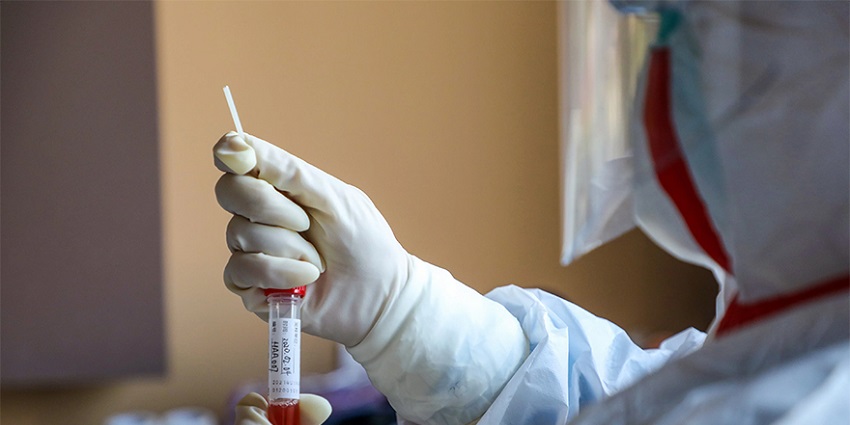
Created in 2008, at the joint initiative of Crédit Agricole SA and Professor Yunus, founder of the Grameen Bank and 2006 Nobel Peace Prize, the Grameen Credit Agricole Foundation is a cross-business actor committed to promoting a better-shared economy.
Investor, funder, technical assistance provider and fund advisor, the Foundation has more than 80 partners (microfinances institutions and social business) and operates in around 40 countries with nearly 100 million euros in outstanding. The Foundation focuses on microfinance institutions that serve women and rural people. These institutions support approximately 4 million clients.
The Microfinance sector is exposed and concerned
On March 19th, according to the latest figures from Santé Publique France, the Coronavirus has reached 213,254 people worldwide. 8 843 deaths are to be deplored. After following announcements of the closings of many institutions and companies, confinement measures continue to be taken around the world. Africa and South America were not officially affected for a long time by the virus, but they now face the crisis with hundreds of cases.
The global sanitary crisis also became an economic crisis. Economic activities are extremely limited in all countries and stock exchanges have lost almost a third of their value in less than a month. Quite logically, the worldwide microfinance sector is also not immune.
For this reason, the Grameen Credit Agricole Foundation’s team launched a survey among its partners on March 11th in order to gather their first impressions and analysis, the impact on their clients’ activity, on their institution and their potential needs. We also took advantage of our regular interactions with our partners to obtain as much information as possible. All further information in this document come from these resources. 56 Micro Finance Institutions (MFIs) responded to our survey, out of 75 reached partners (75% participation rate) with the last answers received on March 19.
All our partners are expressing in their responses a real concern about the expected effects of this global health crisis.
Local government decisions are already impacting small income-generating activities
48% (27) of surveyed MFIs felt their clients are impacted by the coronavirus at the time of the survey, and 68% (38) of them think they will be in a near future. Thanks to a quick feedback, we learn that governments have decided to close schools, to close down non-essential activities, to restrict movement or to prohibit gatherings in Sri Lanka, Cambodia, Romania, Myanmar, Sierra Leone, Jordan, Mali and other operating countries. These changes are taking place everywhere today and very day new countries are added in that list.
Such decisions have a direct impact on our partners’ customers. First, many customers rely on imports for their business. Border closures and travel bans affect trading activities.
It should also be noted that concerns about the travel ban in China is affecting not only Asian countries but also African countries.
“As the border to China has been closed, some agricultural product prices are decreasing so our farmer clients aren’t getting good prices for their harvest.” – Partner from Myanmar
“We have customers who travel for purchases (China, Ivory Coast, Togo, Benin,..). Informal sector traders are afraid and this can affect their activities.” – Partner from Burkina Faso
The impossibility of gathering will also have an impact on all the operations that take place in markets and fairs. Merchants will not be able to carry out their activities. The travel ban will strongly affect global tourism. All activities relying on tourism will face many problems (stocks, lack of customers, refunds) as well as countries depending on remittances.
“If travel bans will continue due to increased coronavirus cases in Gulf region and Europe as
economy of Jordan is dependent on tourism income and money remittances from the Gulf” – Partner from Jordan
Finally, we had no feedback yet on the plans of local authorities regarding the adjustments to be made by the financial institutions in particular. The only compelling example we were provided is that of Palestine. Through 8 guidelines, the Palestine Monetary Authority urges financial companies to continue provide lending services to people to ensure the continuation of the commercial and economic cycle and also postpone the periodic monthly payments of all borrowers for the next 4 months’ period (6 months for tourism and hotel sector).
Also, no any additional fees, commissions, or interest on delayed instalments can be collected during the period.
MFIs activity could be reduced
59% (33 MFIs) of the surveyed MFIs mentioned that their activity was still not affected by the epidemic at the time. 23 MFIs (37%) were feeling concerned at the time of this survey, giving several explanations such as risk for field staffs, restricted movement, working from home.
One of the main concern is the prohibition of group meetings, which will affect all MFIs whose microfinance methodology is based on a group approach. Few partners are already adapting.
In some countries with no clear decisions yet, MFIs will have to postpone disbursements if their loan officers are unable to travel or will have to temporarily adapt their processes.
“During the emergency period until 29 May 2020 above, client centre meetings will not take place as usual. Instead, the ‘Pay and Go’ method has been put in place as follows: only group leaders, two to four persons per centre of some 15-20 clients usually, are requested to come to the usual centre meeting at the usual location. The group leaders are requested to collect the instalment of their respective group members”. – Partner from Indonesia
“We have set up a special procedure to meet members of the solidarity groups individually. We provide advice to clients on how best to deal with the situation” – Partner from Senegal
Our partners must also adapt to the situation for their own staff. The risks of virus transmission is an important factor to take into account for the activity of credit agents. Likewise, the confinement rules prevent the smooth running of the activity for all departments and operations. Some staff are already working from home in some MFIs.
“lmaty where HQ is located will be on quarantine from 19 March, employees will be working on distance” – Partner from Kazakhstan
“Field staff are at high risk of contracting, so they are hesitant to work on clients, a quarantine will hit and polarize the whole MFI market” – Partner from Uganda
Portfolio risk and liquidity needs are under scrutiny
Many concerns are raised about portfolio risk. According to our survey, at the time of answering, only 11 MFIs were noticing an increase in the portfolio at risk. African partners raised more concerns. However, when asked if they anticipate an increase in the portfolio at risk, 36 of the MFIs answer “yes” (64%). In this case, anticipation of a risk increase comes from all over our regions of activity.
“Potential increase in PAR30 and reduced credit demand. Estimate an increase of PAR30 not to go beyond 2% and portfolio growth to potentially slow down by around 20%” – Partner from Cambodia
However, some partners consider that they are no more at risk than usual. In most cases, these MFIs are those with a particularly rural customer base.
“In general, since our customers are rural residents (70%), we predict that they will not have a strong deterioration due to rising prices for their agricultural products. But we think that a clearer situation will appear in the second half of April.” – Partner from Kyrgyzstan
“As of 16 March 2020, our business continue as usual. We have not seen impact on loan payment yet across Cambodia include Siem Reap and Phnom Penh. However, we would expect some increase in Siem Reap from end of this month onward. Please note that our client are mainly living in rural areas. The exposure has on Tourist, hotel, services industry is minimal.” – Partner from Cambodia
Coronavirus is going to have an impact on liquidity needs. According to our survey, 29 MFIs (52%) forecast a change in their needs. Most Tiers 3 MFIs do not forecast changes as the time, as a majority of Tiers 2 MFIs (17 MFIs) do forecast such changes. MFIs expect problems on the funding side. In particular, hedging issues are expected, and discussions with all the different lenders are initiated.
“Mainly, the exchange rate has been very volatile, indirectly due to the epidemic, and this causes new disbursements in USD to exchange to less local currency which has affected the number of loans we can disburse” – Partner from Myanmar
Liquidity problems are also anticipated. Indeed, non-repayment could be a barrier to the possibility of disbursing new loans. Rising provisions for risk and potential losses is also a cause of the drought in liquidity.
“if the situation continues up to mid-year, we will need liquidity as most of the liquid assets will have been suppressed by high provisioning for impaired assets (Expected losses) due to increased non-repayment” – Partner from Uganda
“The non-repayment of loans leads to a decrease in liquidity. Yes, we have taken steps to limit a potential situation” – Partner from Mali
Microfinance sector needs specific measures
Some MFIs already asked the Foundation if there was a possibility of helping their institutions through the epidemic crisis.
“We would like further advice on how to avoid the disease and what treatments are available and effective for treatment in the event of infection” – Partner from Benin
“We would prefer that Grameen Credit Agricole Foundation compile information about corona virus coup up measures especially in regards to MFIs around the world on how to deal with the challenges” – Partner from Uganda
A partner recalled that during past natural disasters, there had been particularly suitable measures that had been implemented. Some, which may seem counter-intuitive, had given rise to an increase in funding to allow clients to recover from the shocks and overcome this difficult period. Draining funding would only intensify the difficulties and impacts of the crisis.
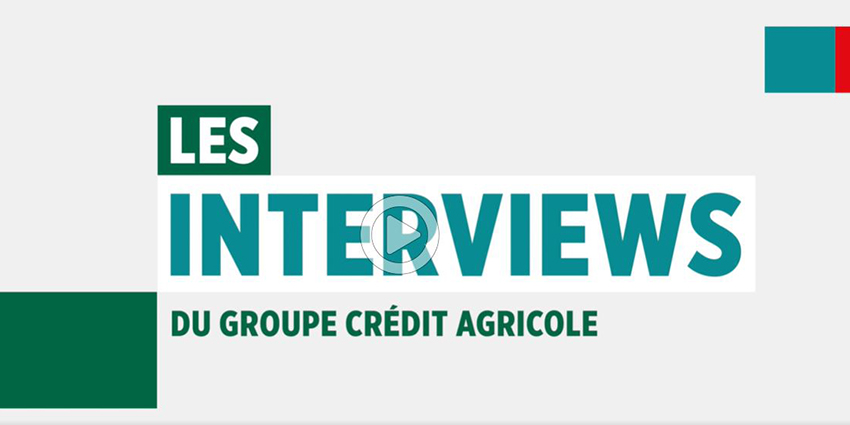

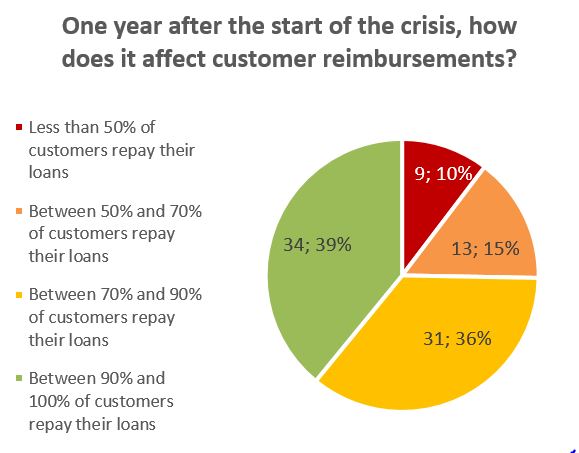
 1. Operational constraints remain relevant for MFIs
1. Operational constraints remain relevant for MFIs 2. MFIs continue to face major financial issues
2. MFIs continue to face major financial issues 3. In July, the informal sector is exposed
3. In July, the informal sector is exposed